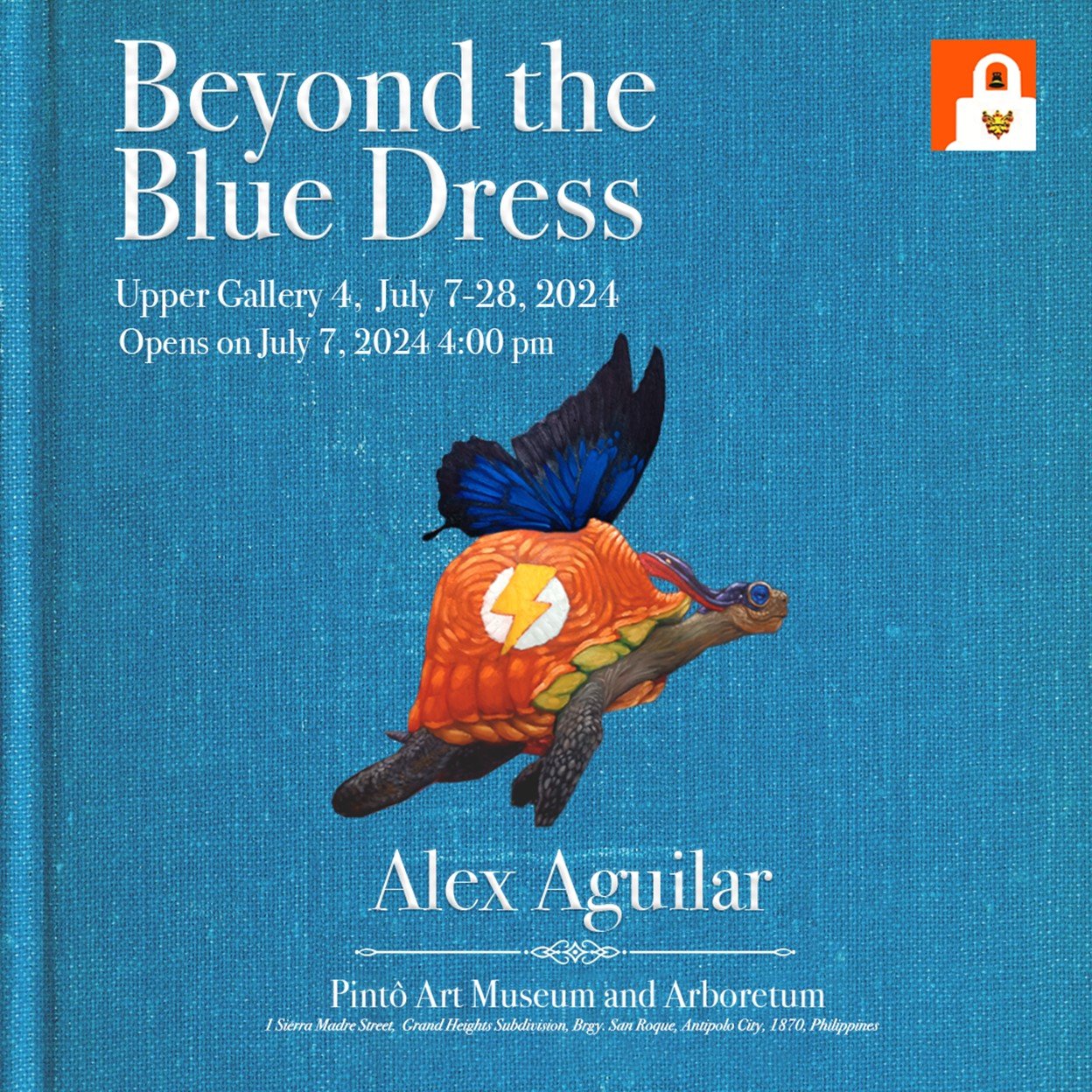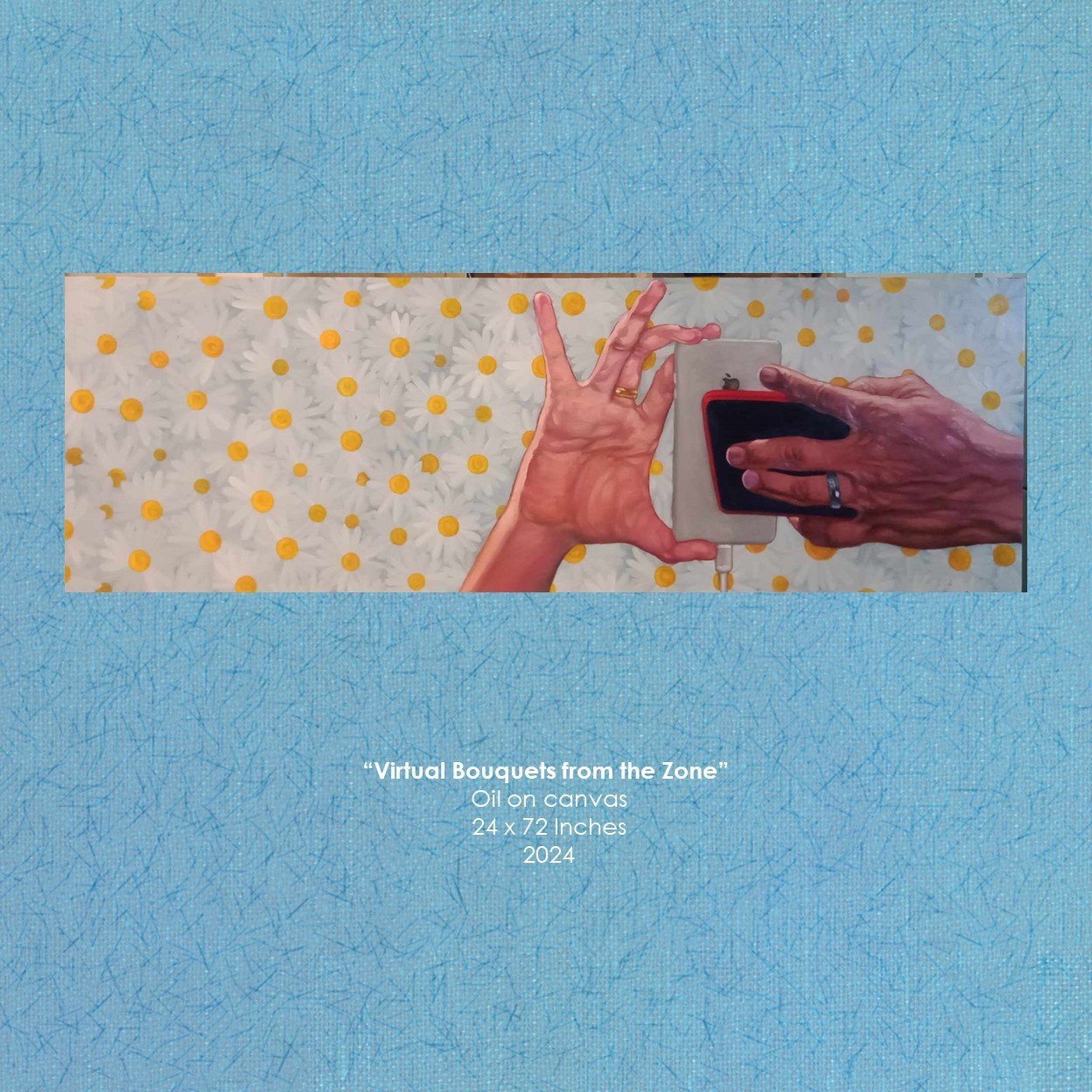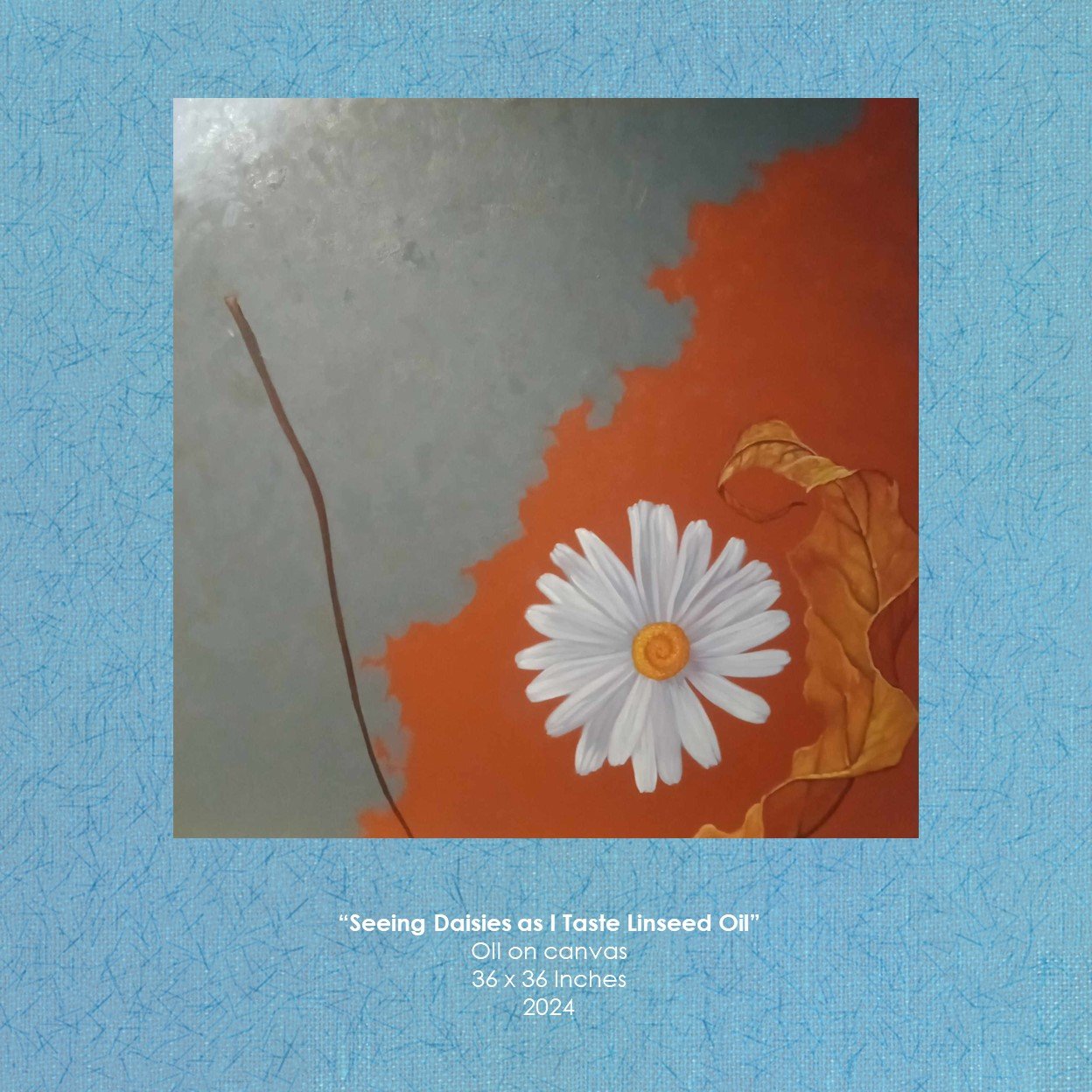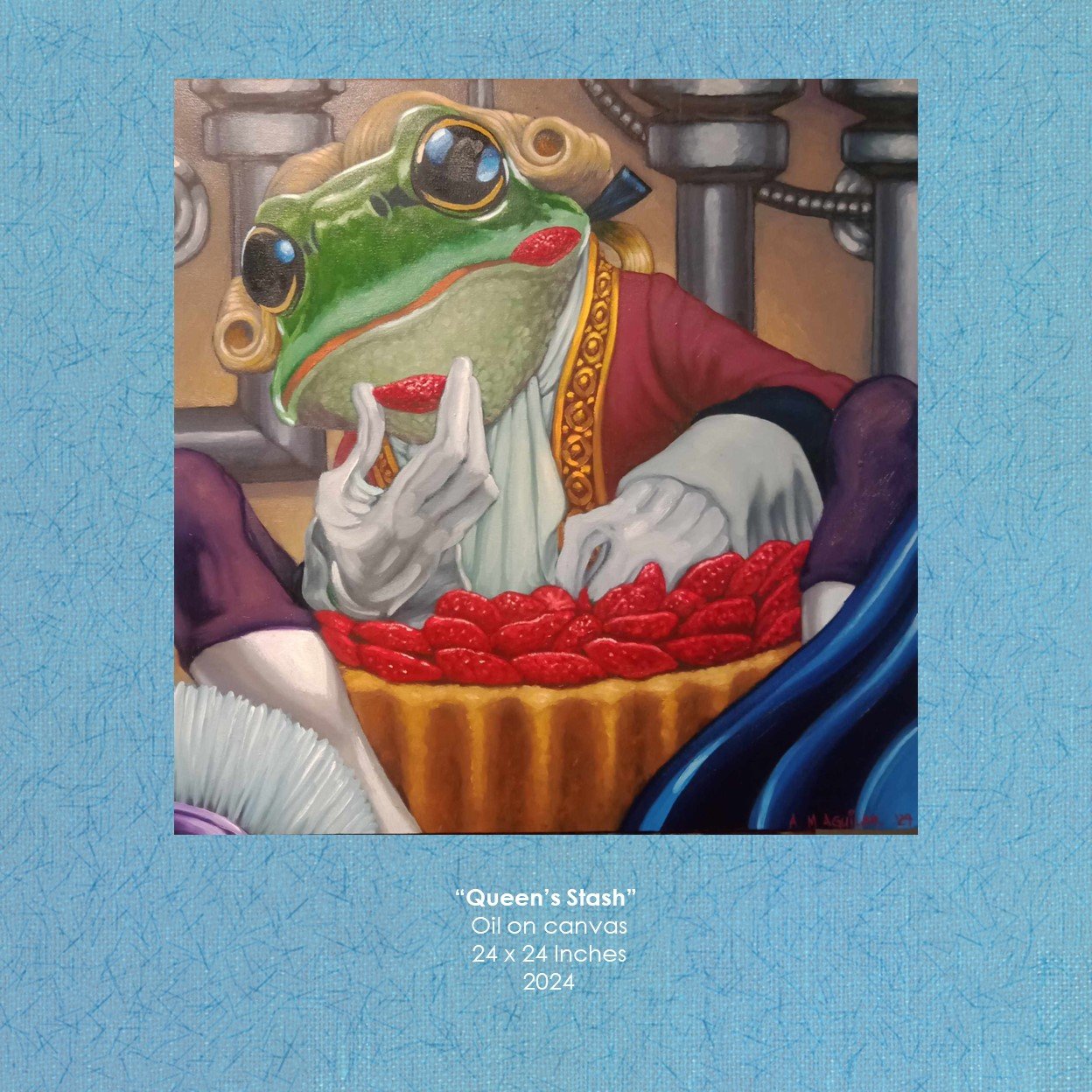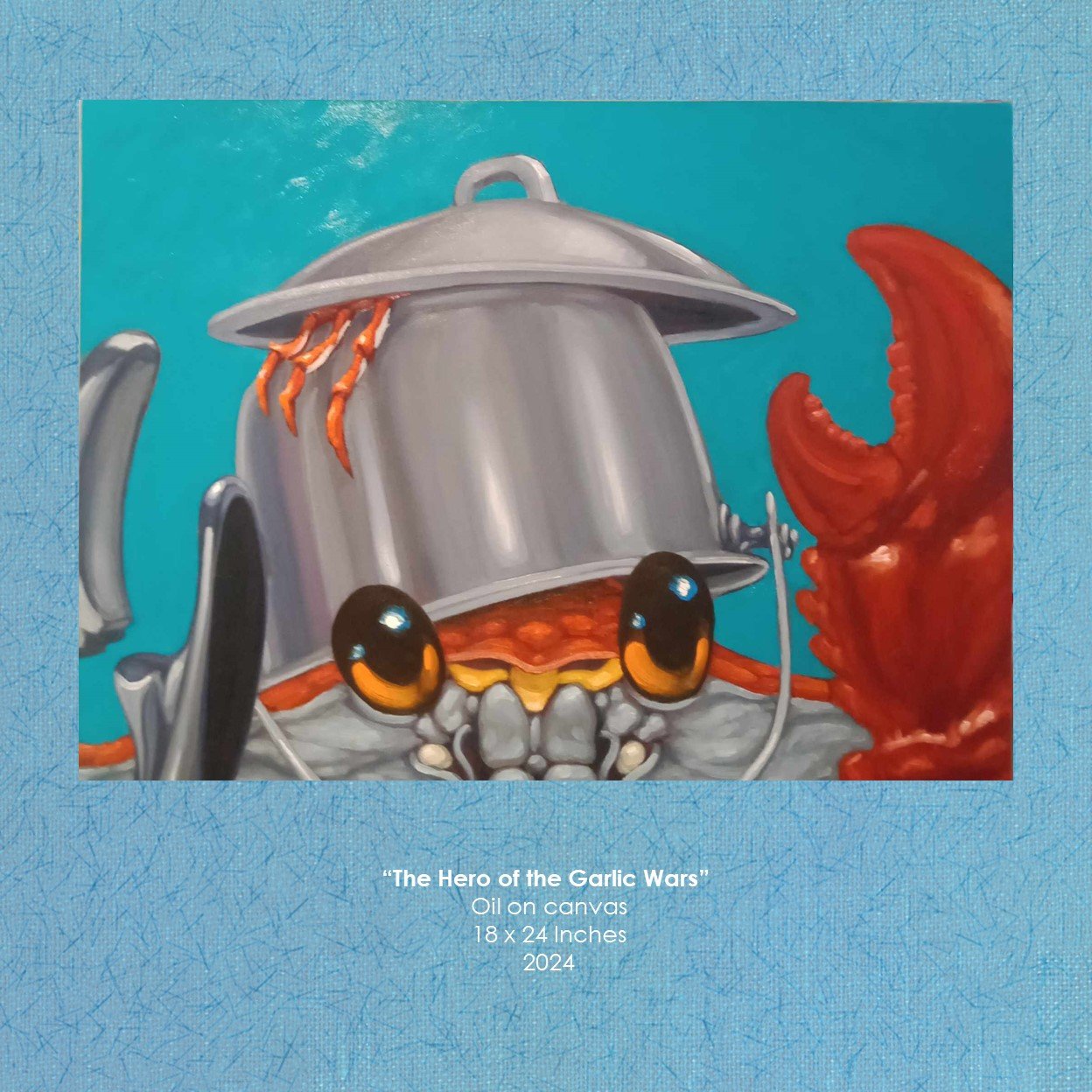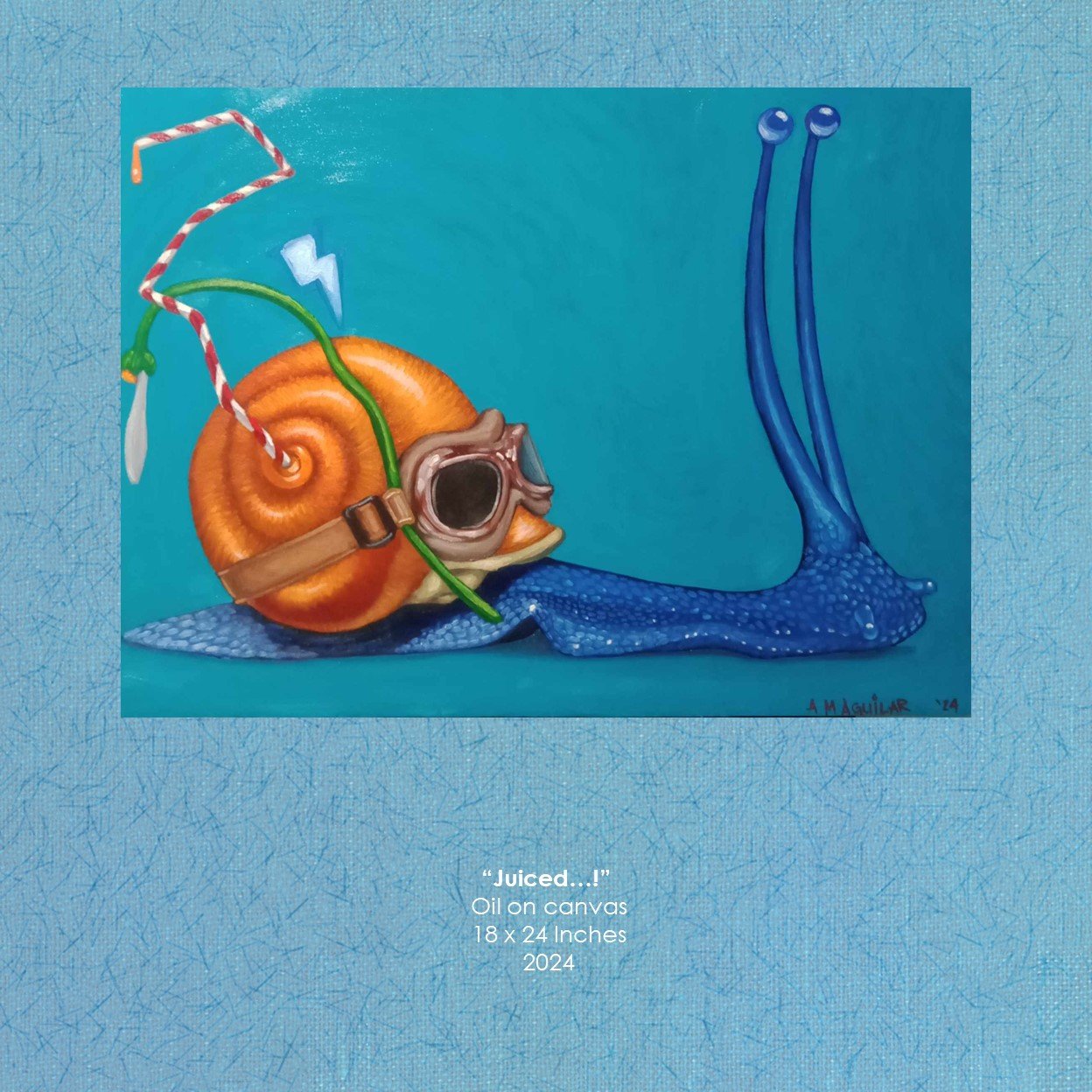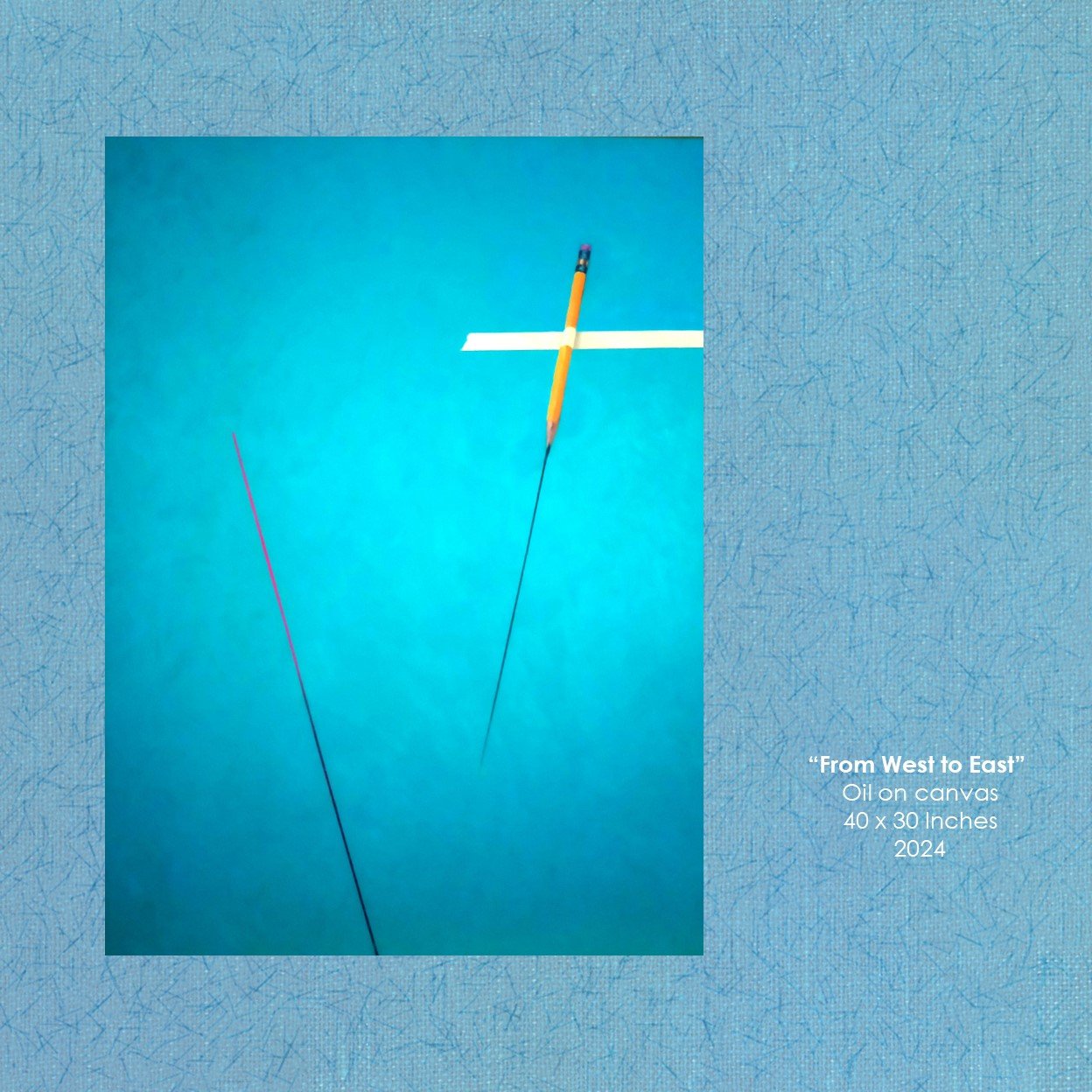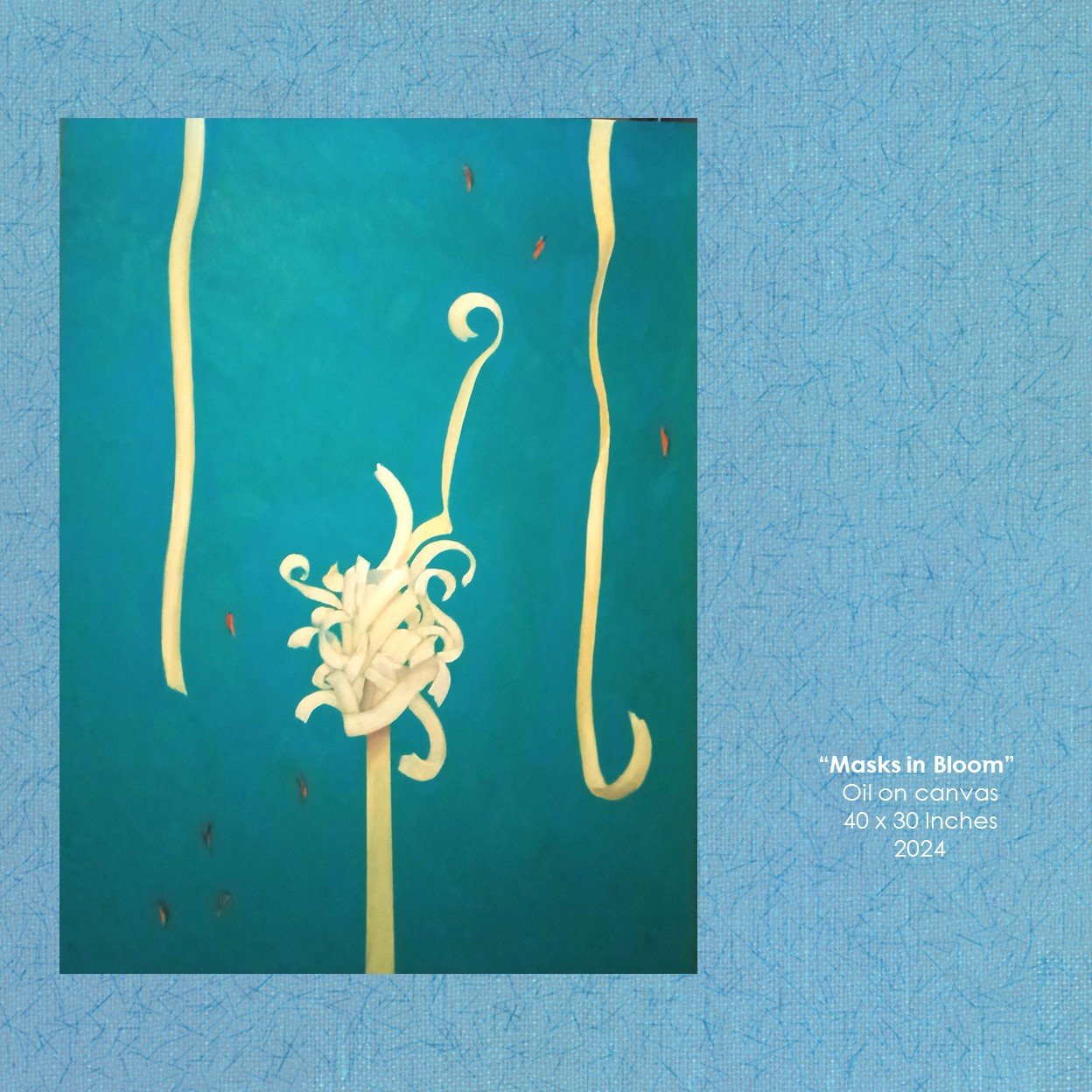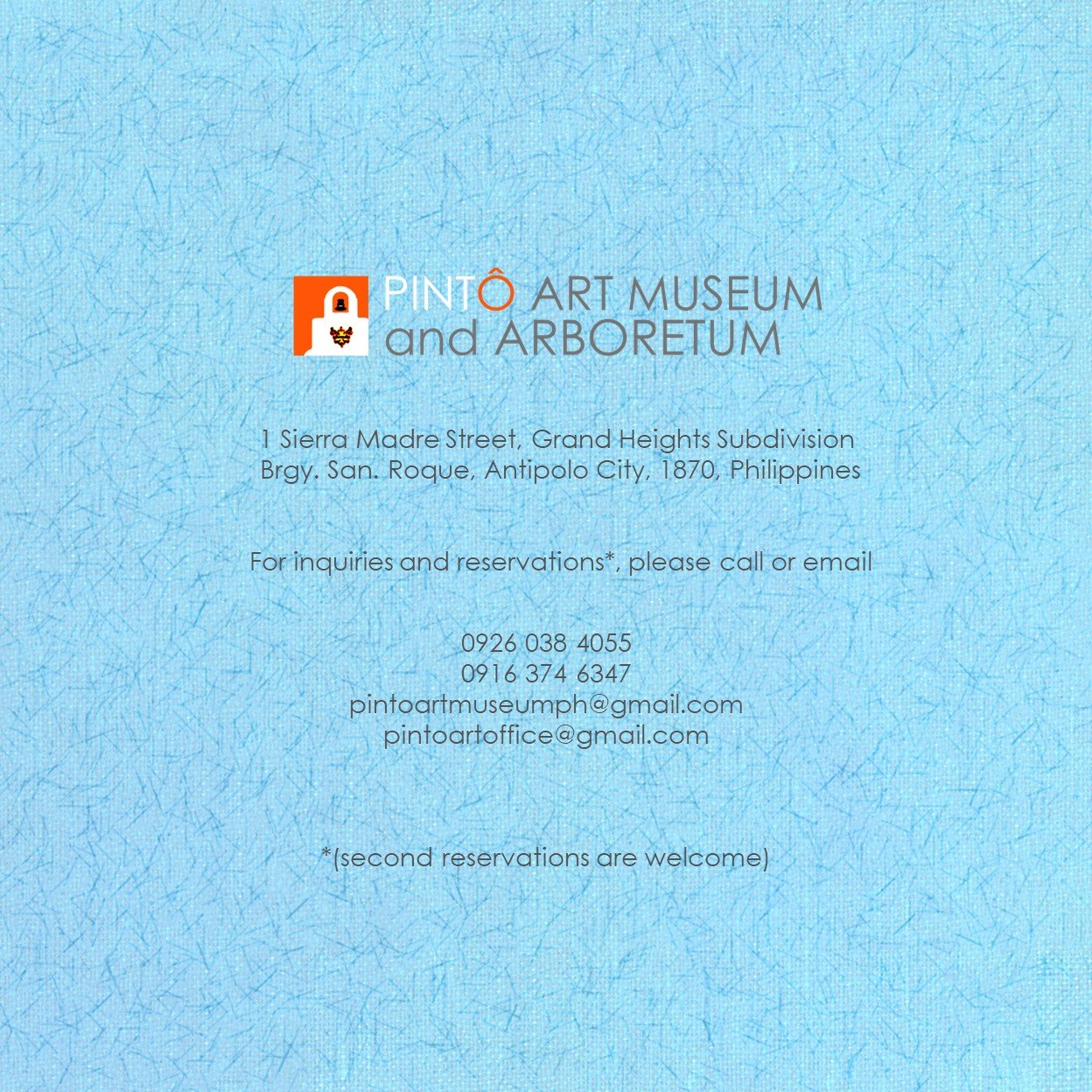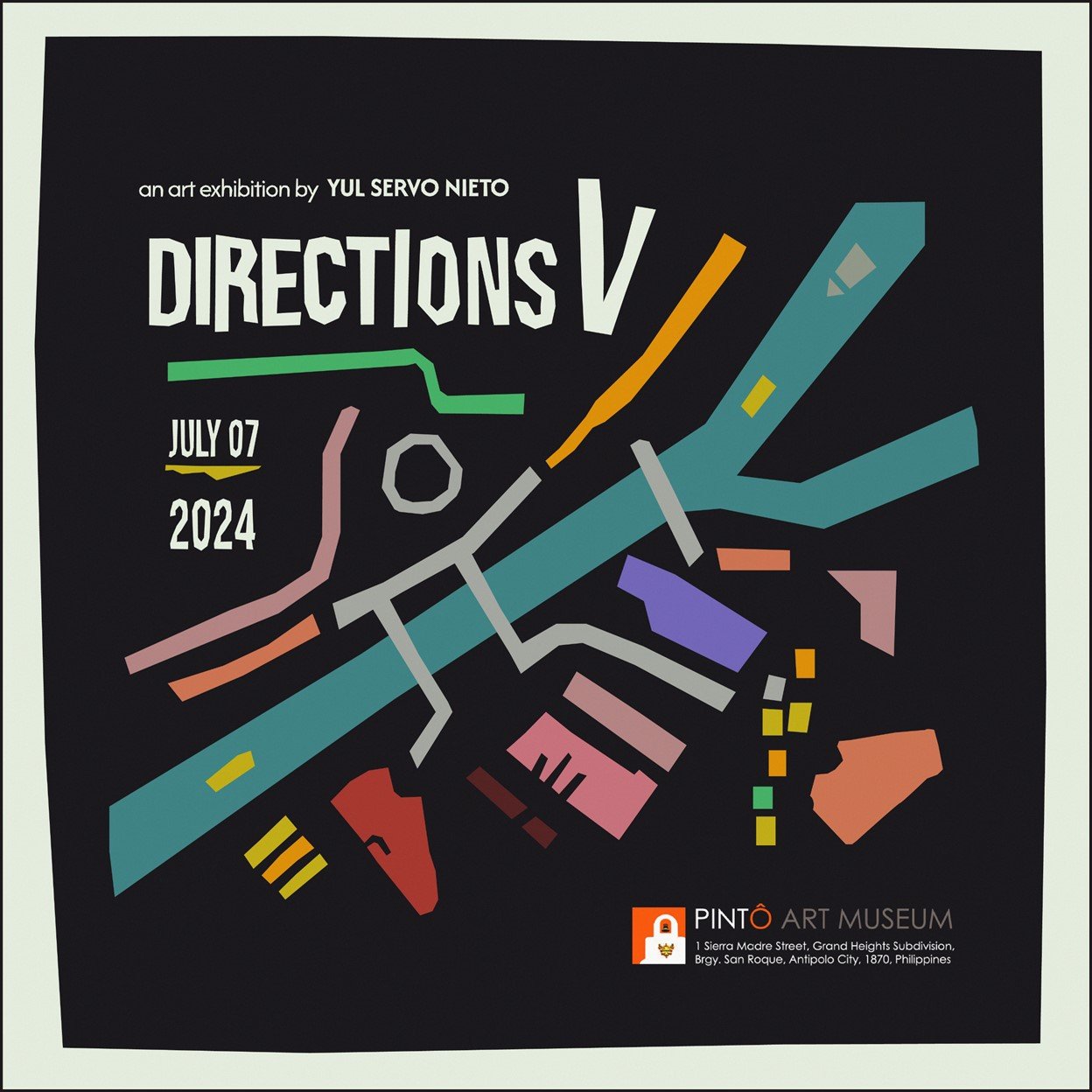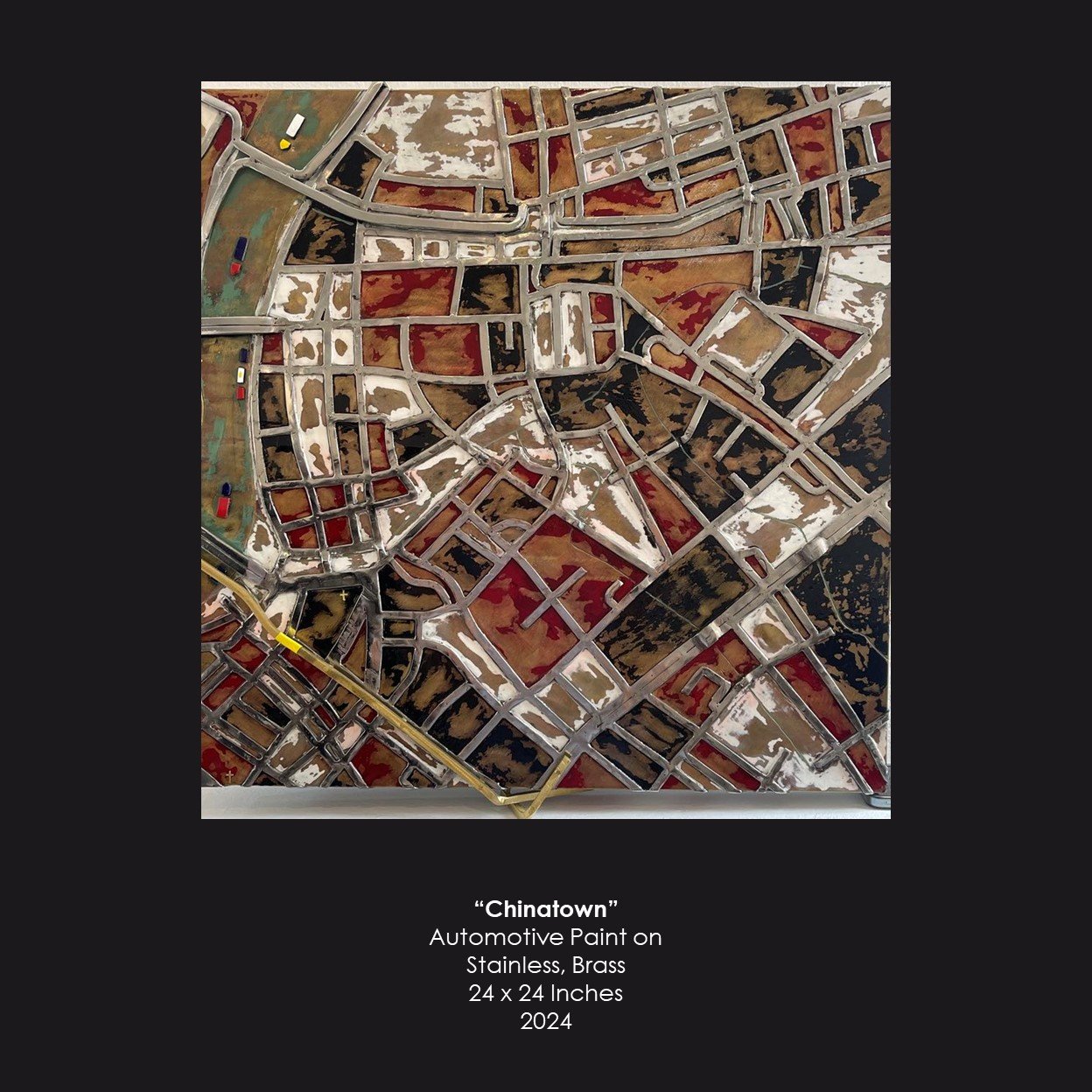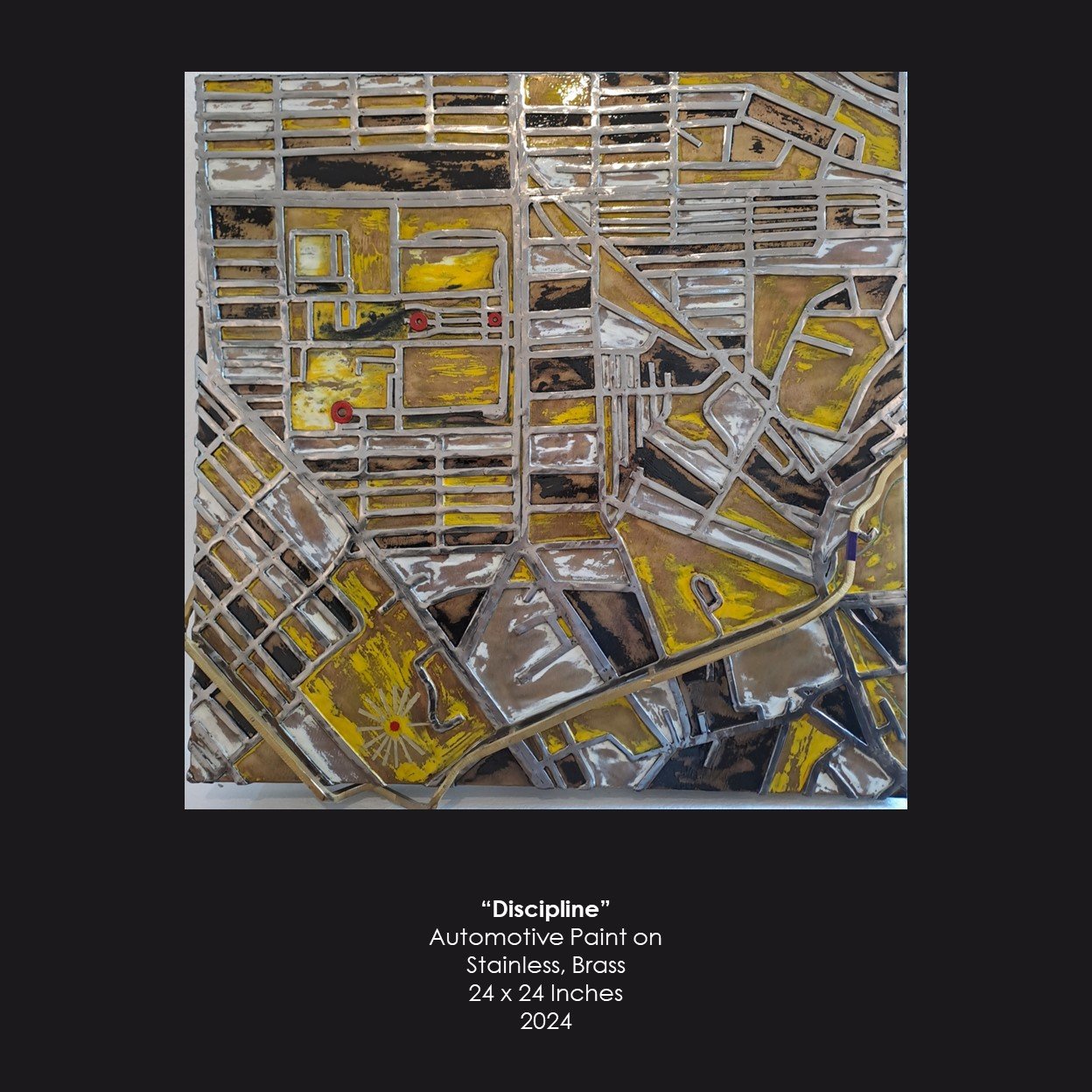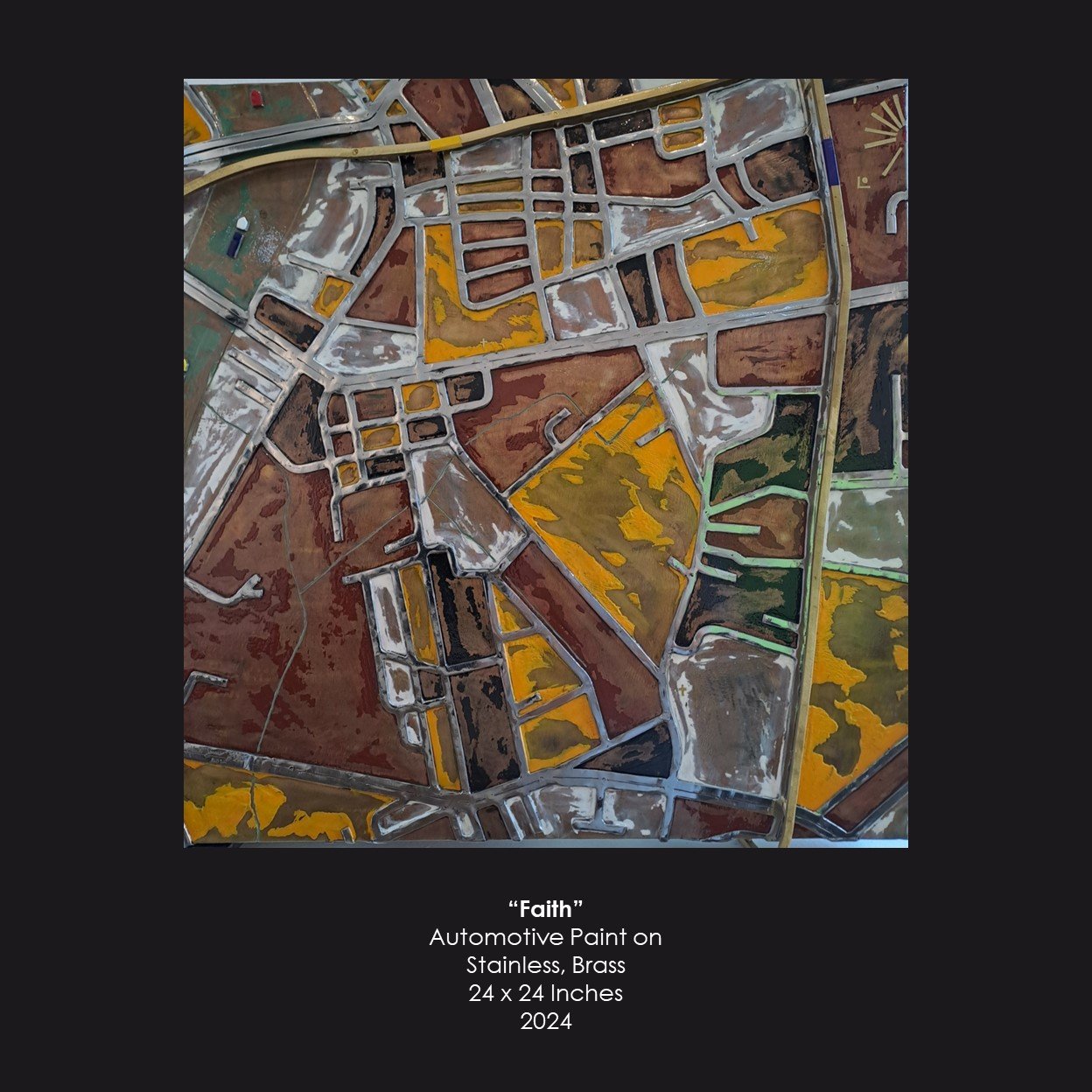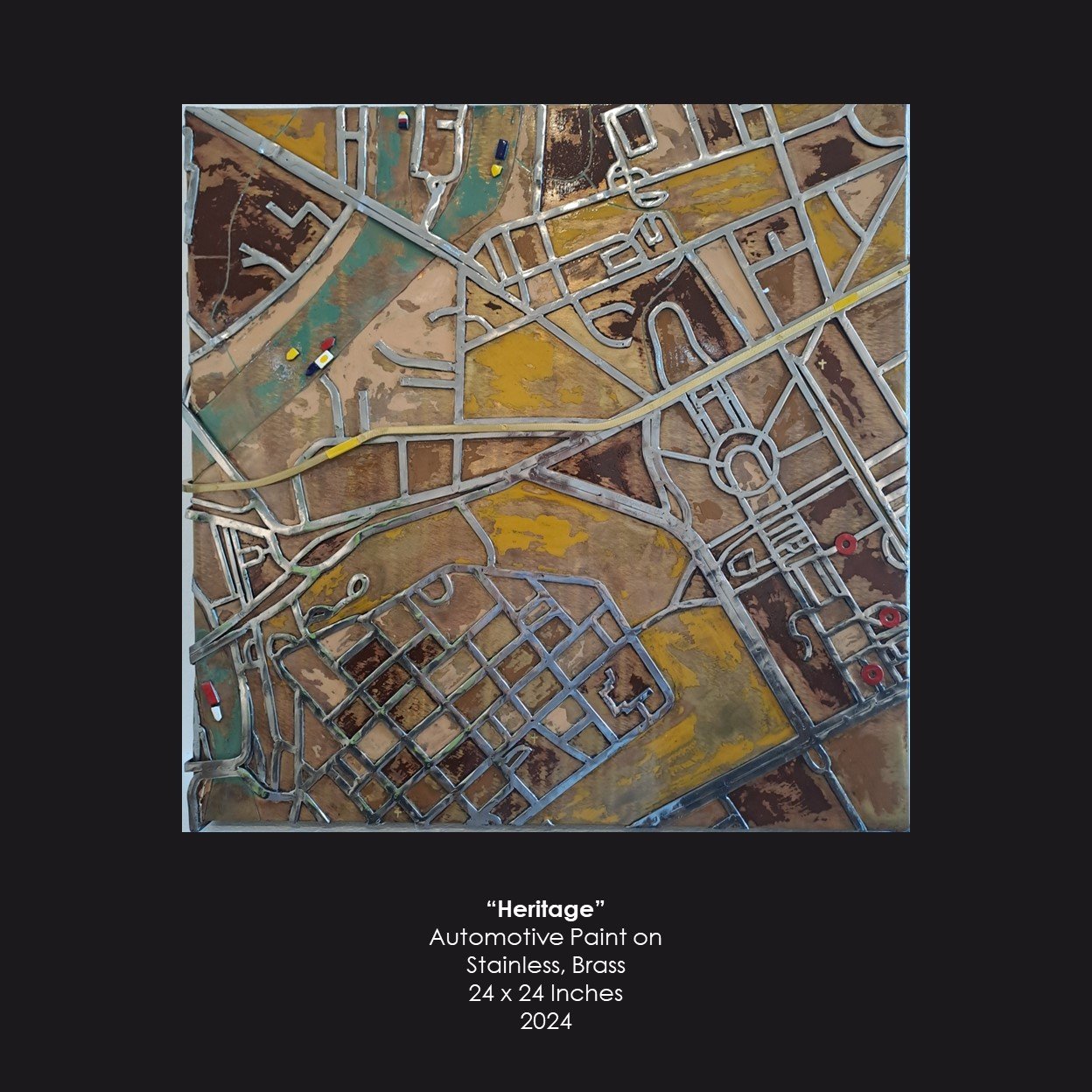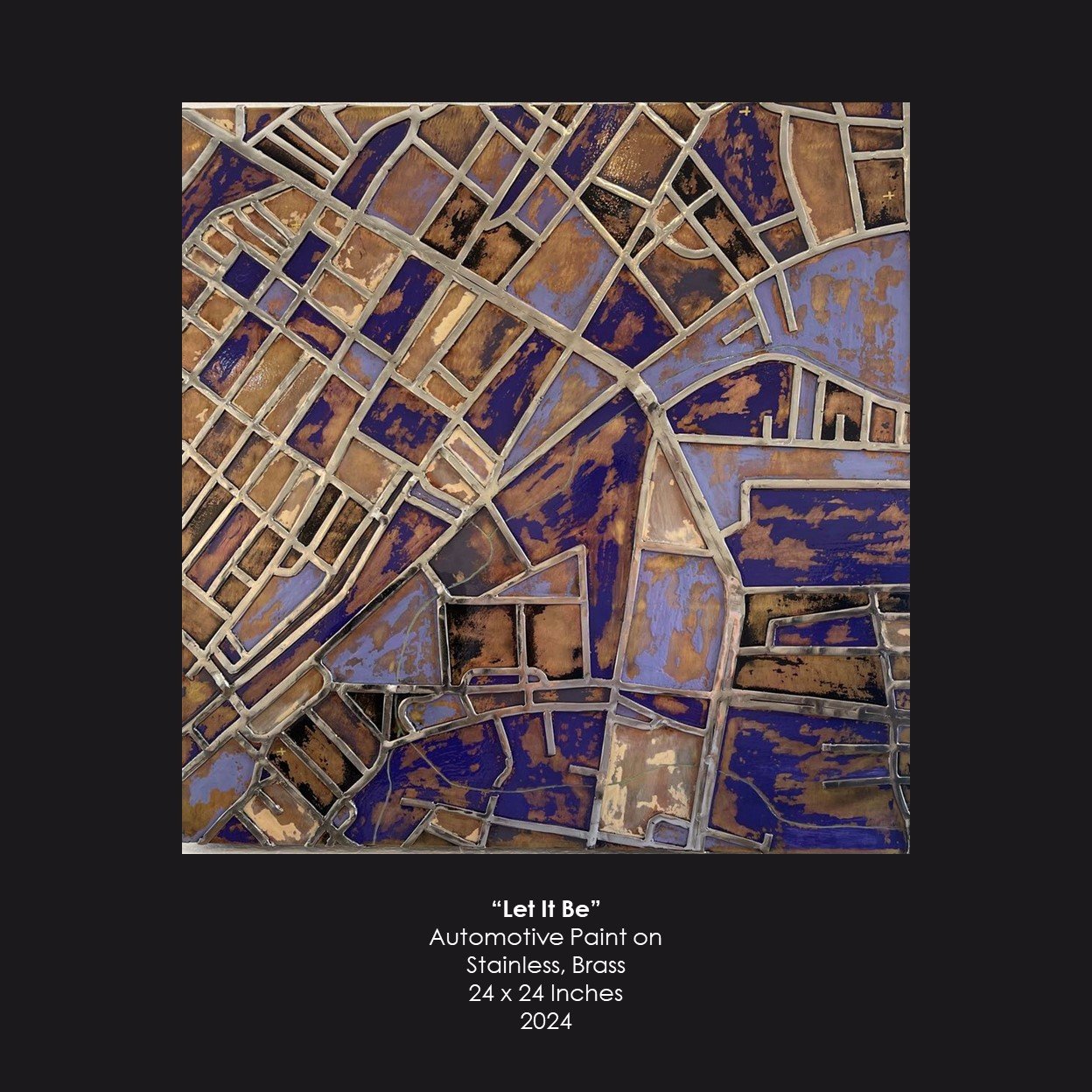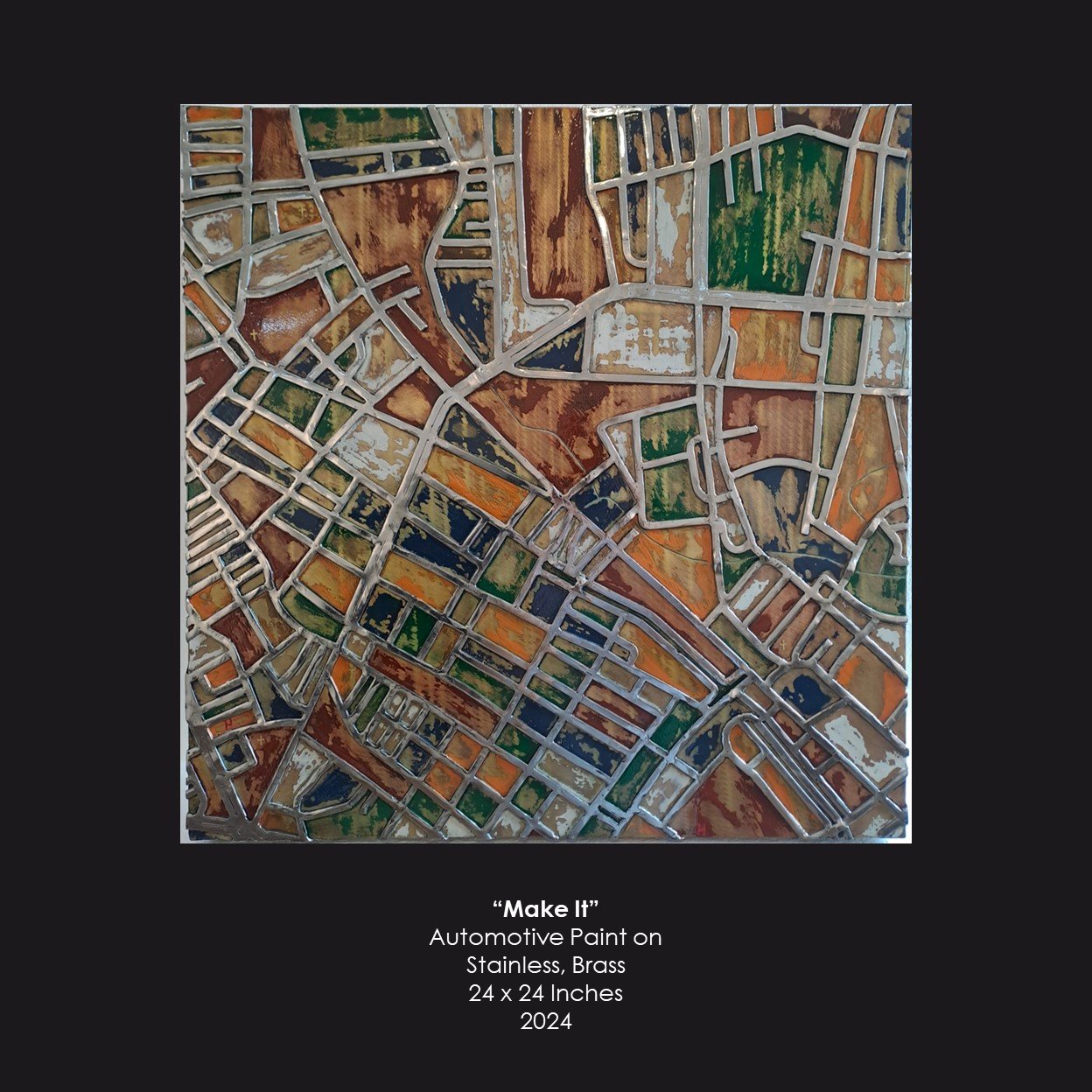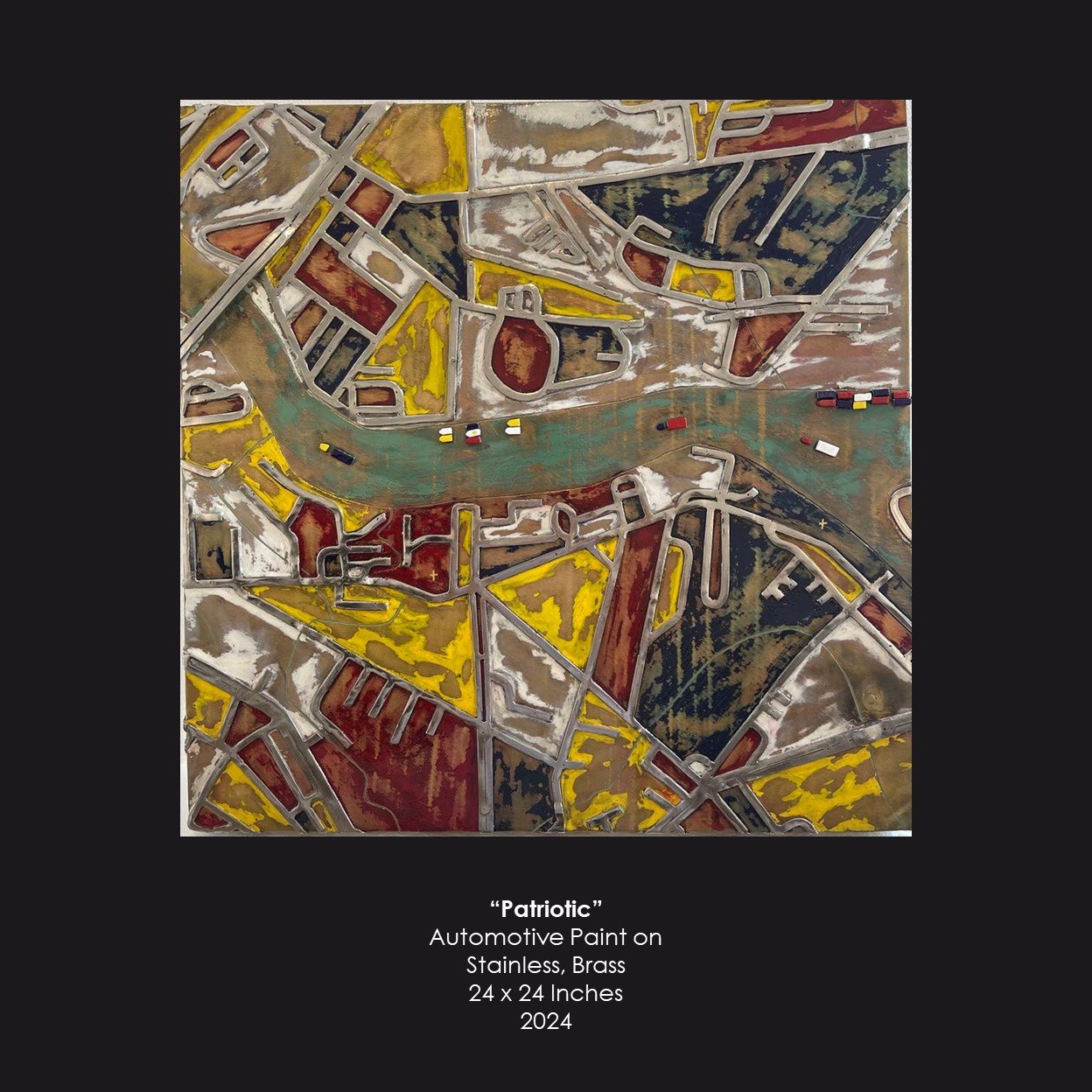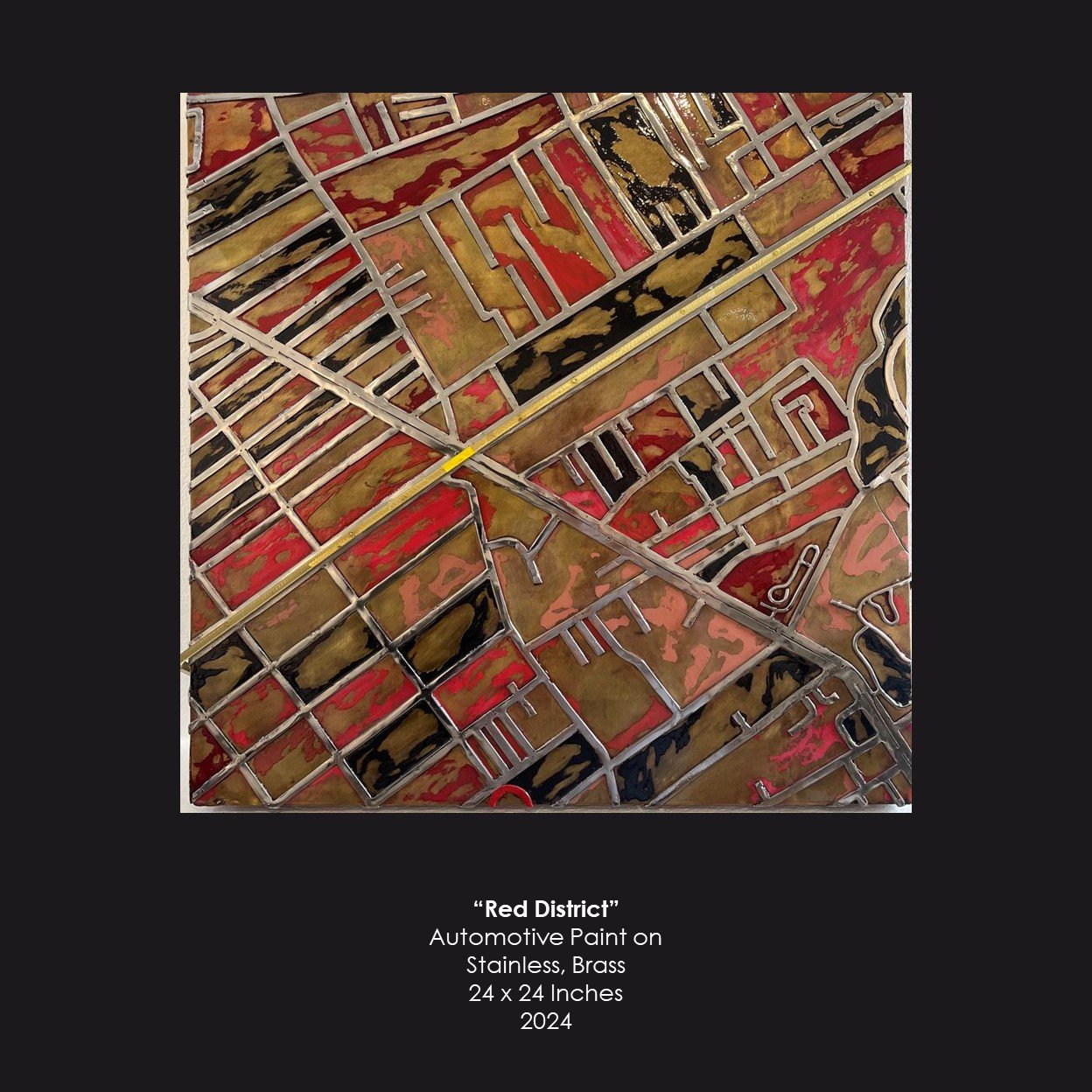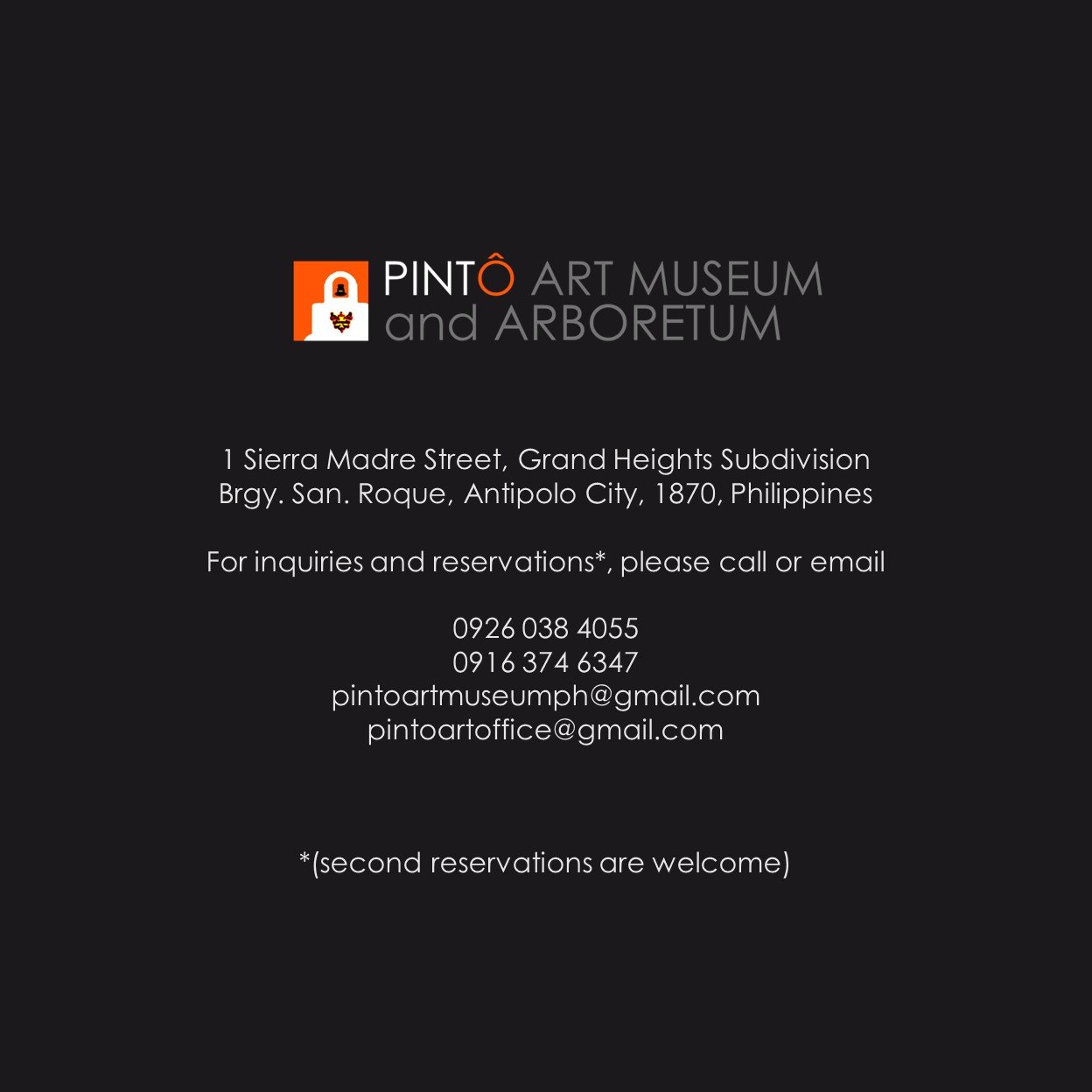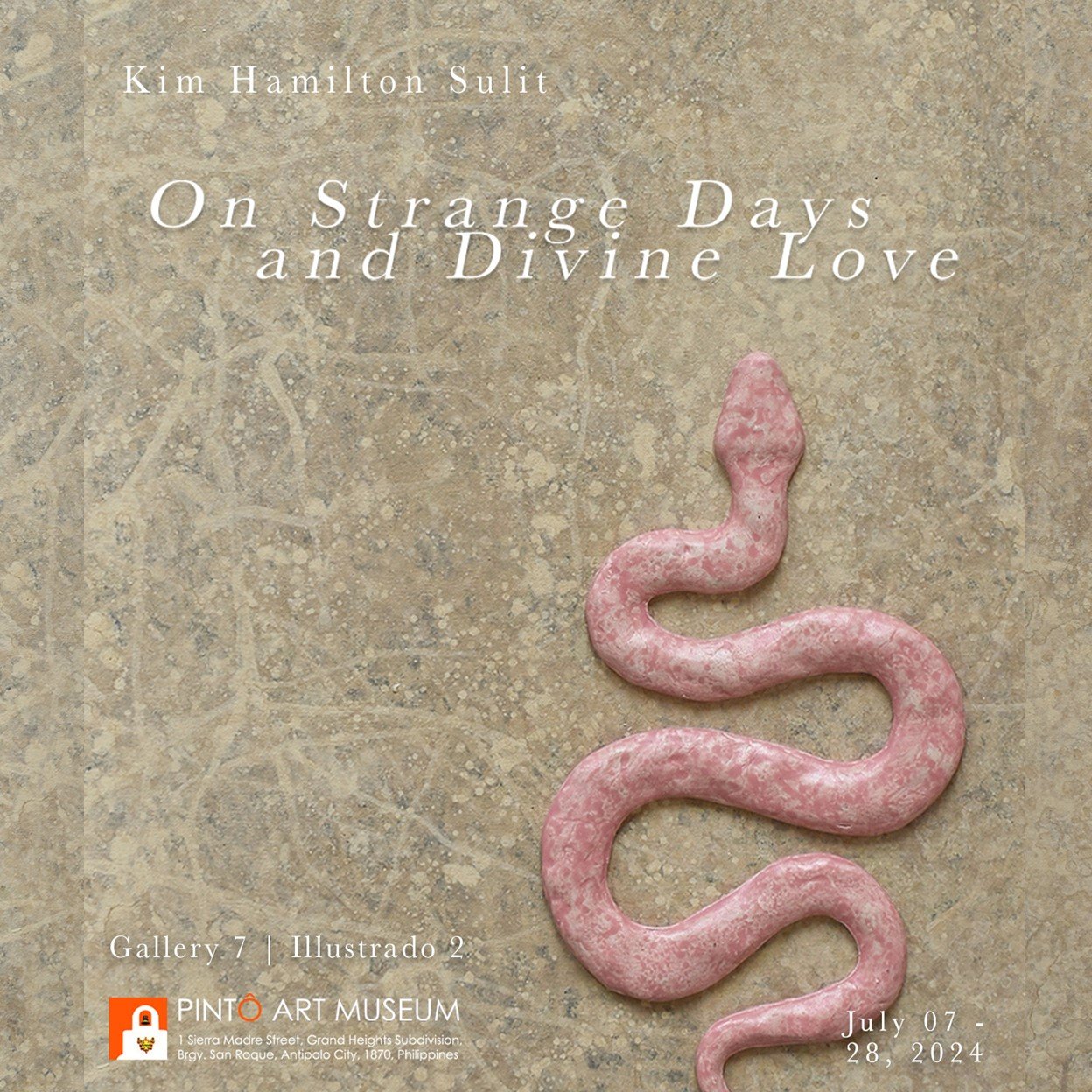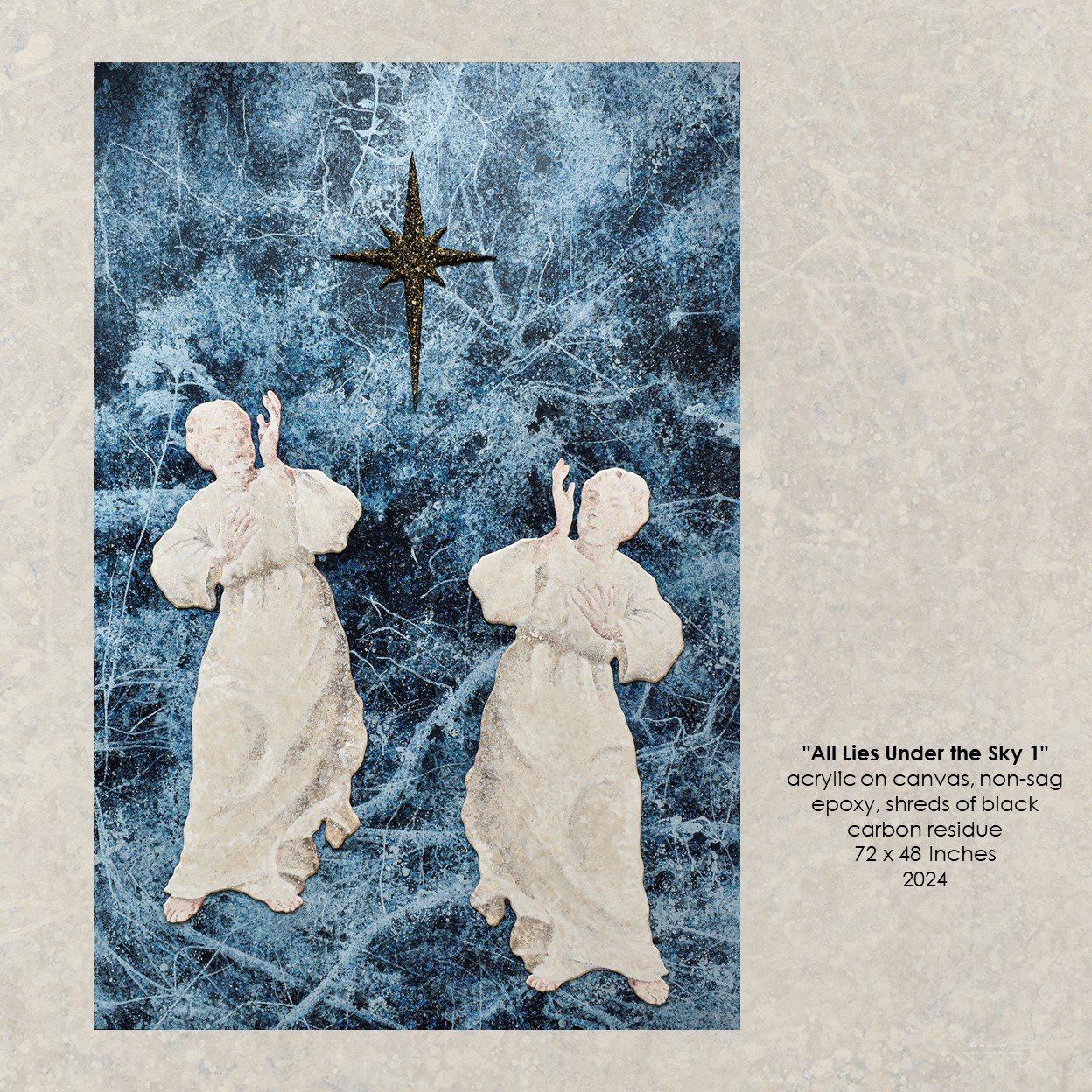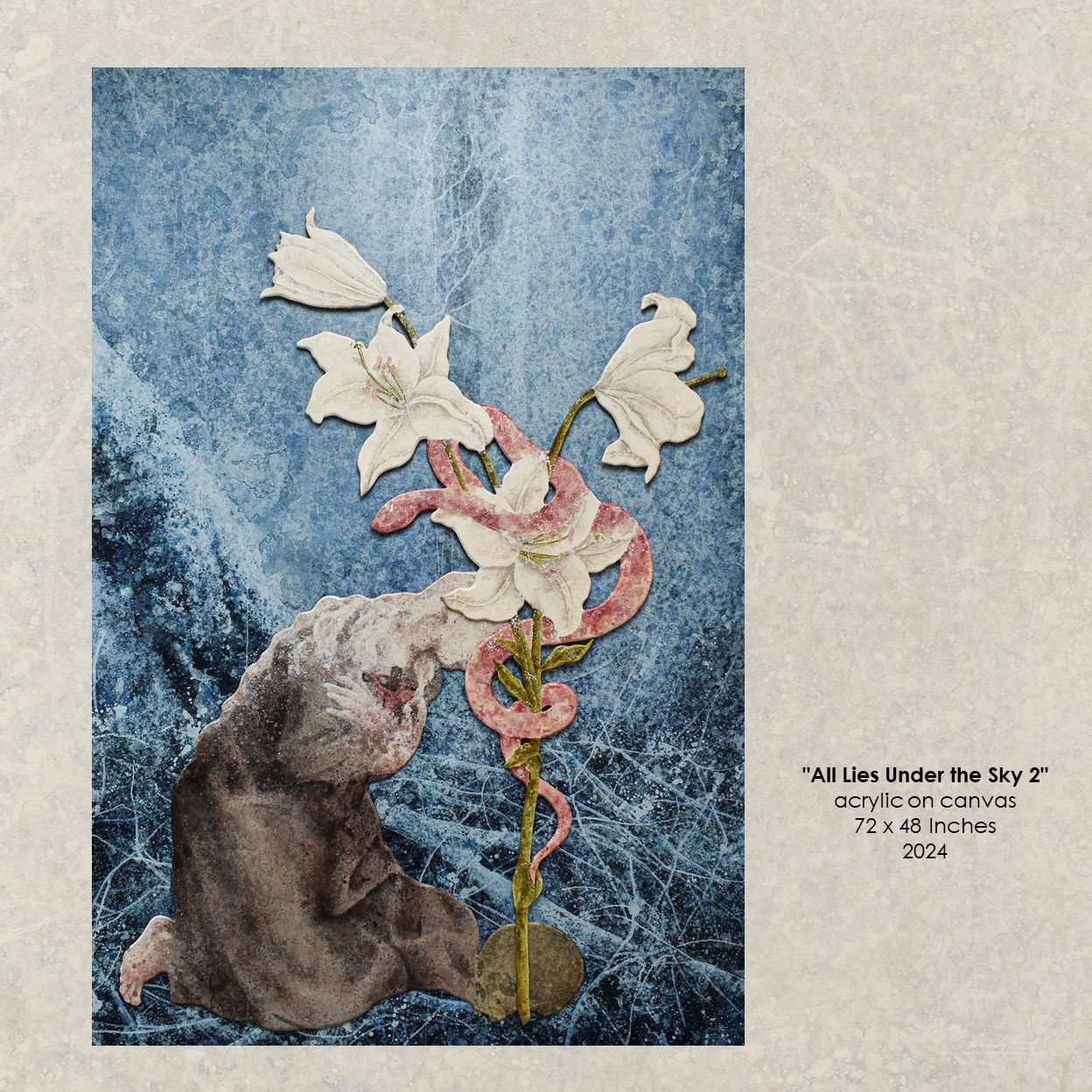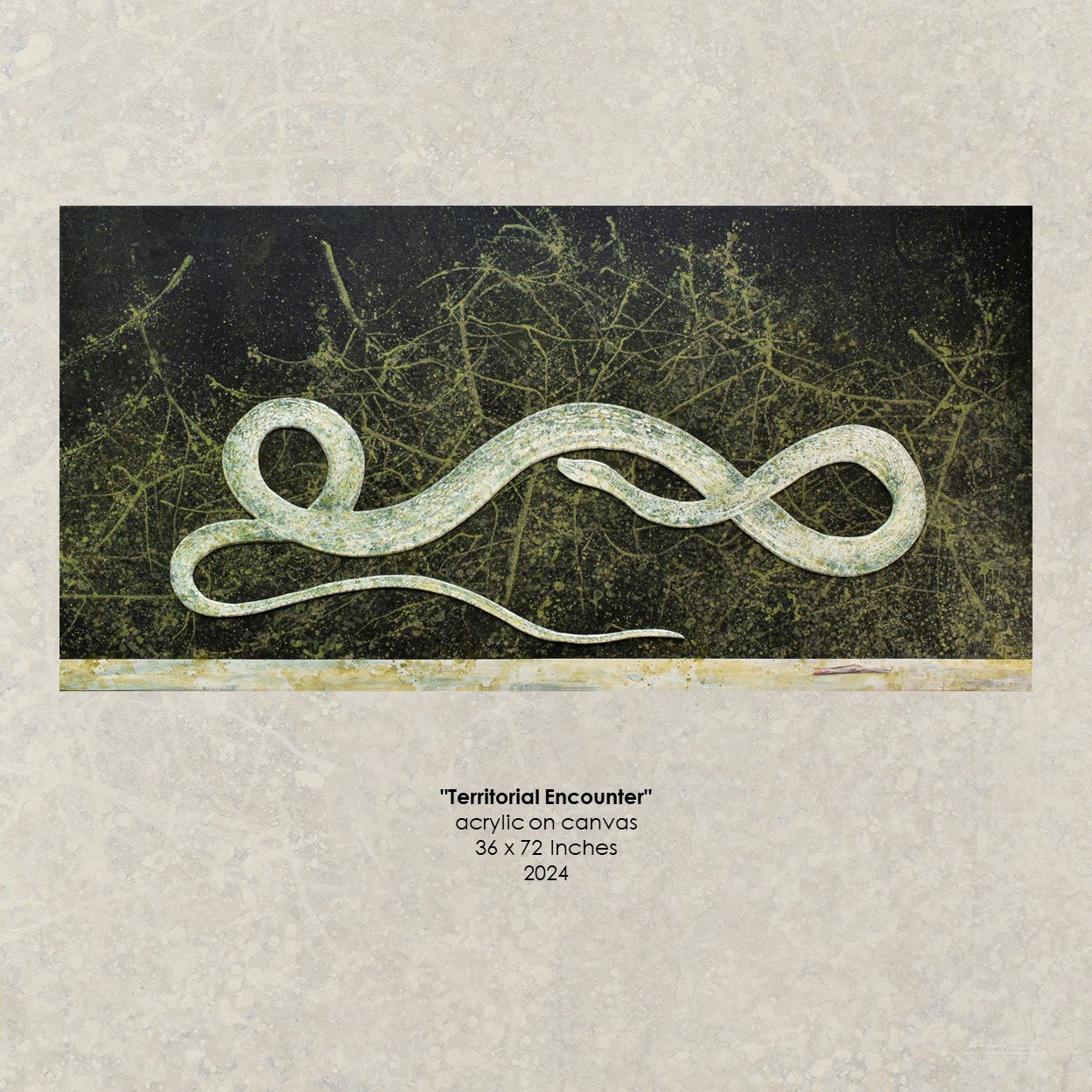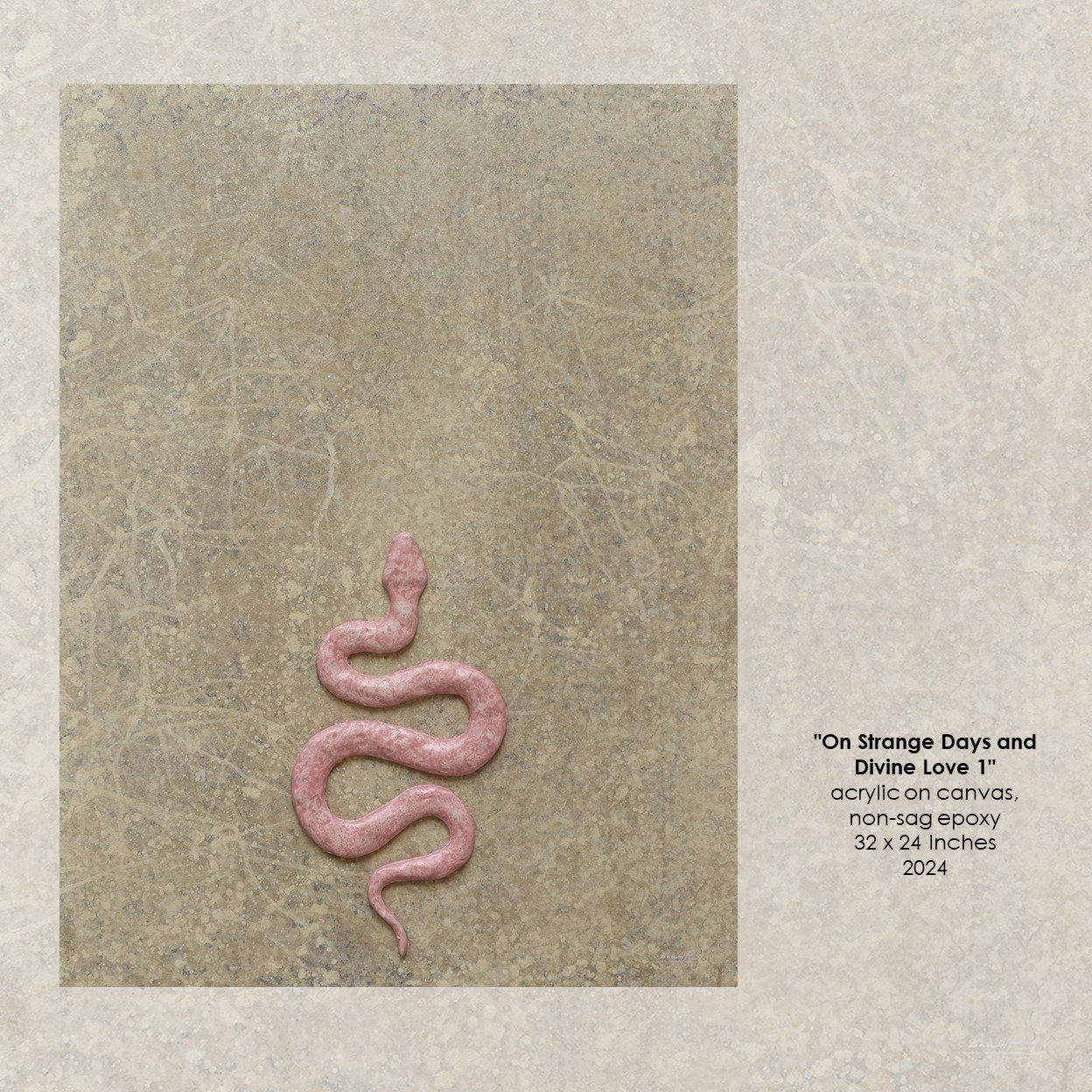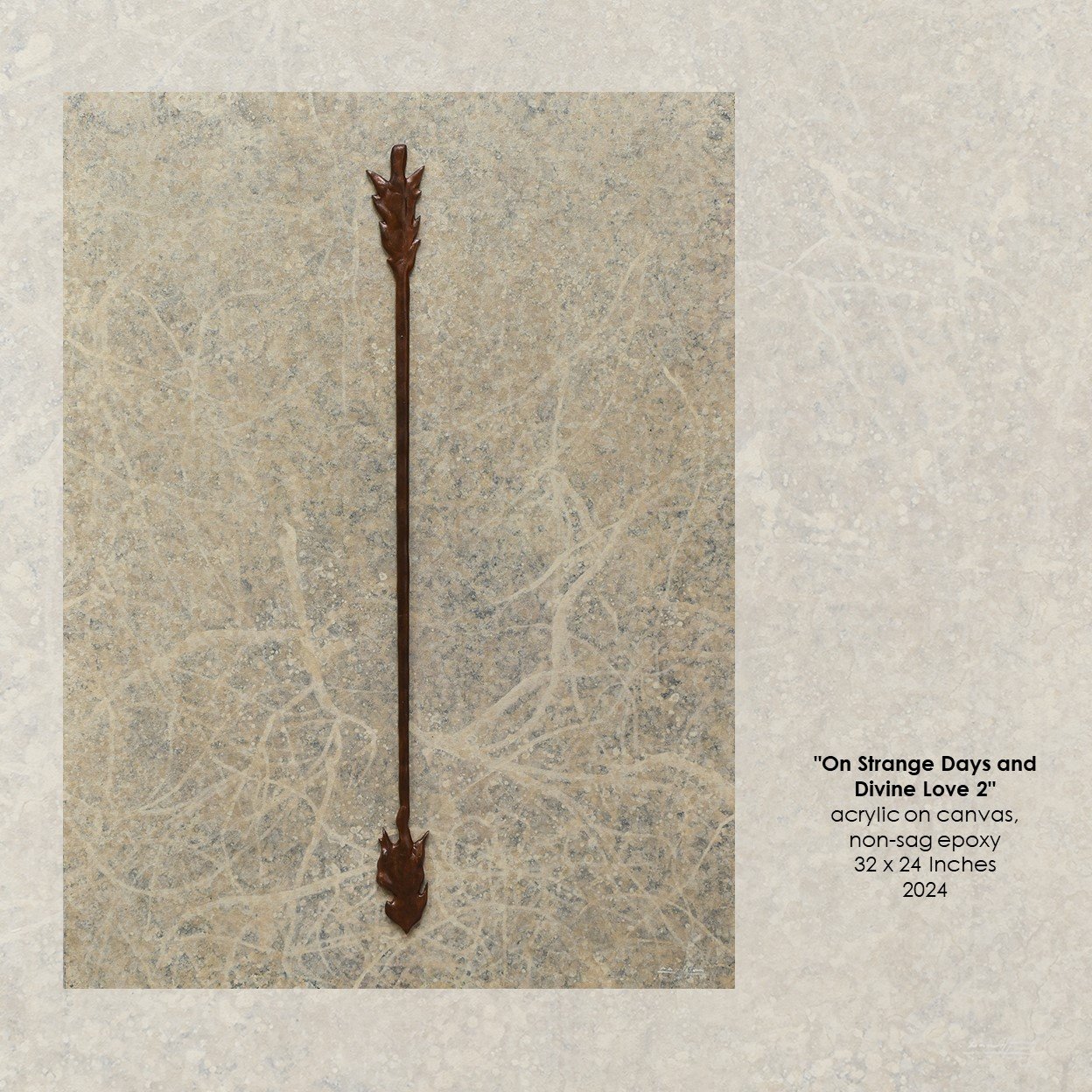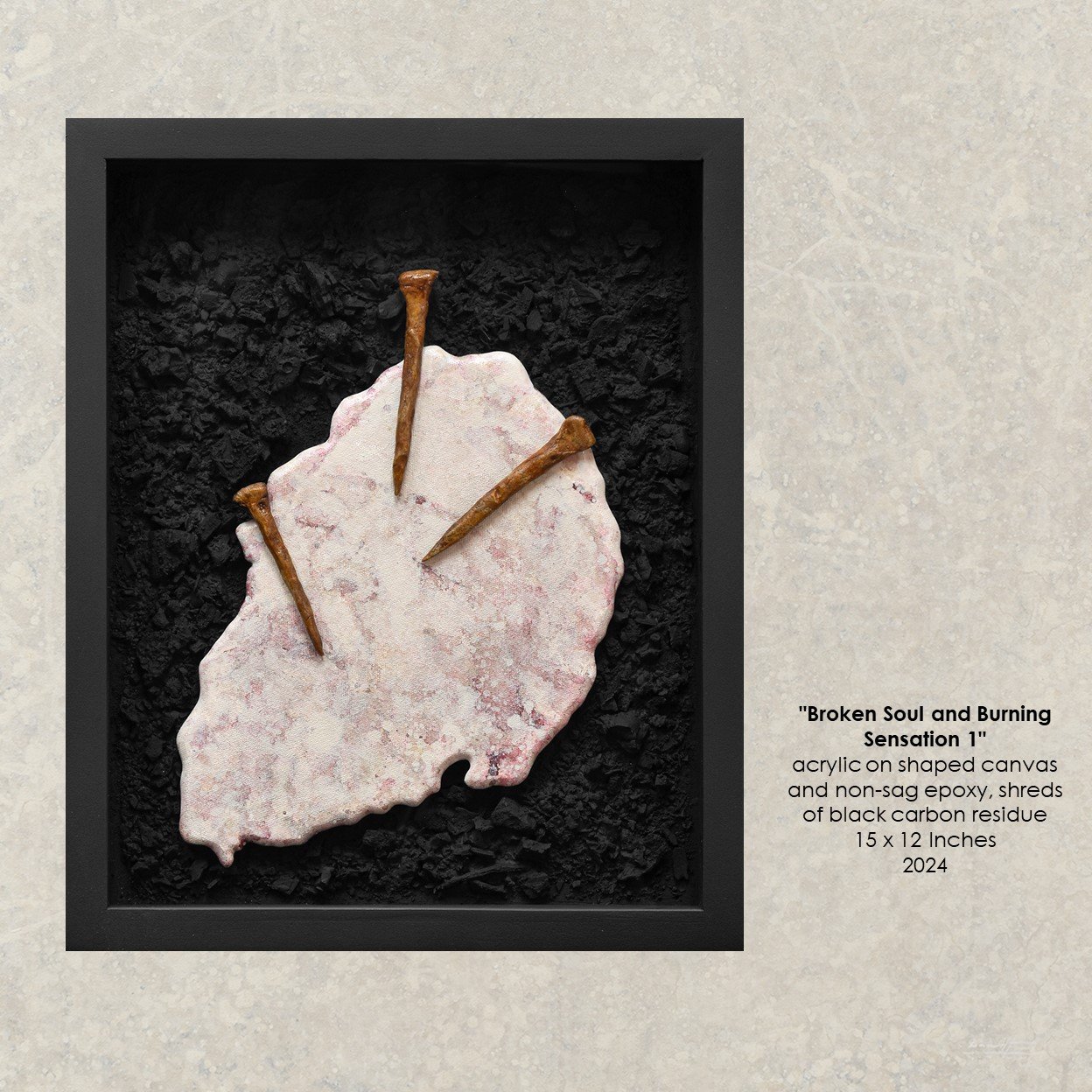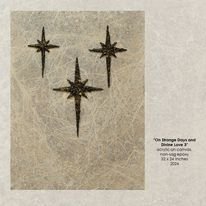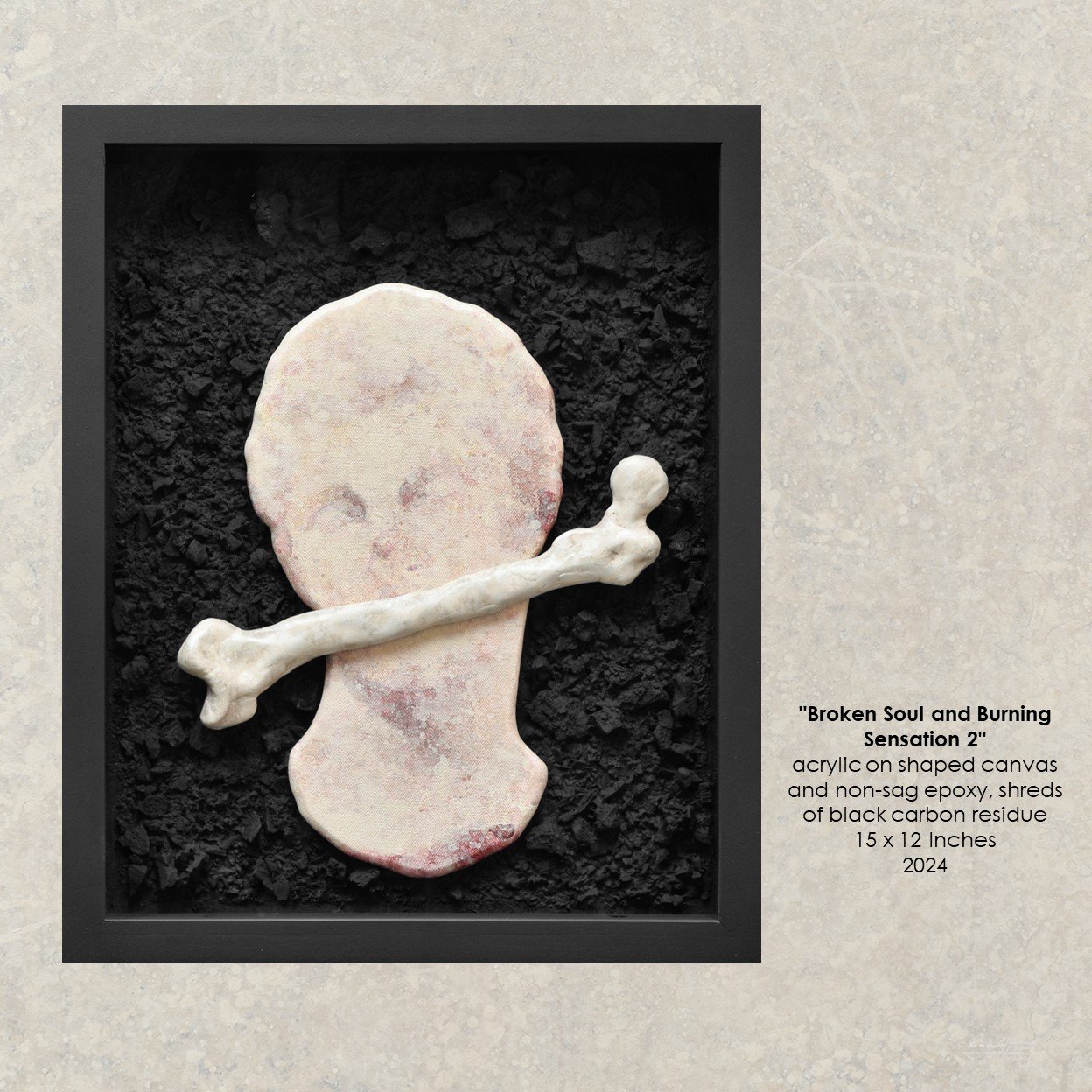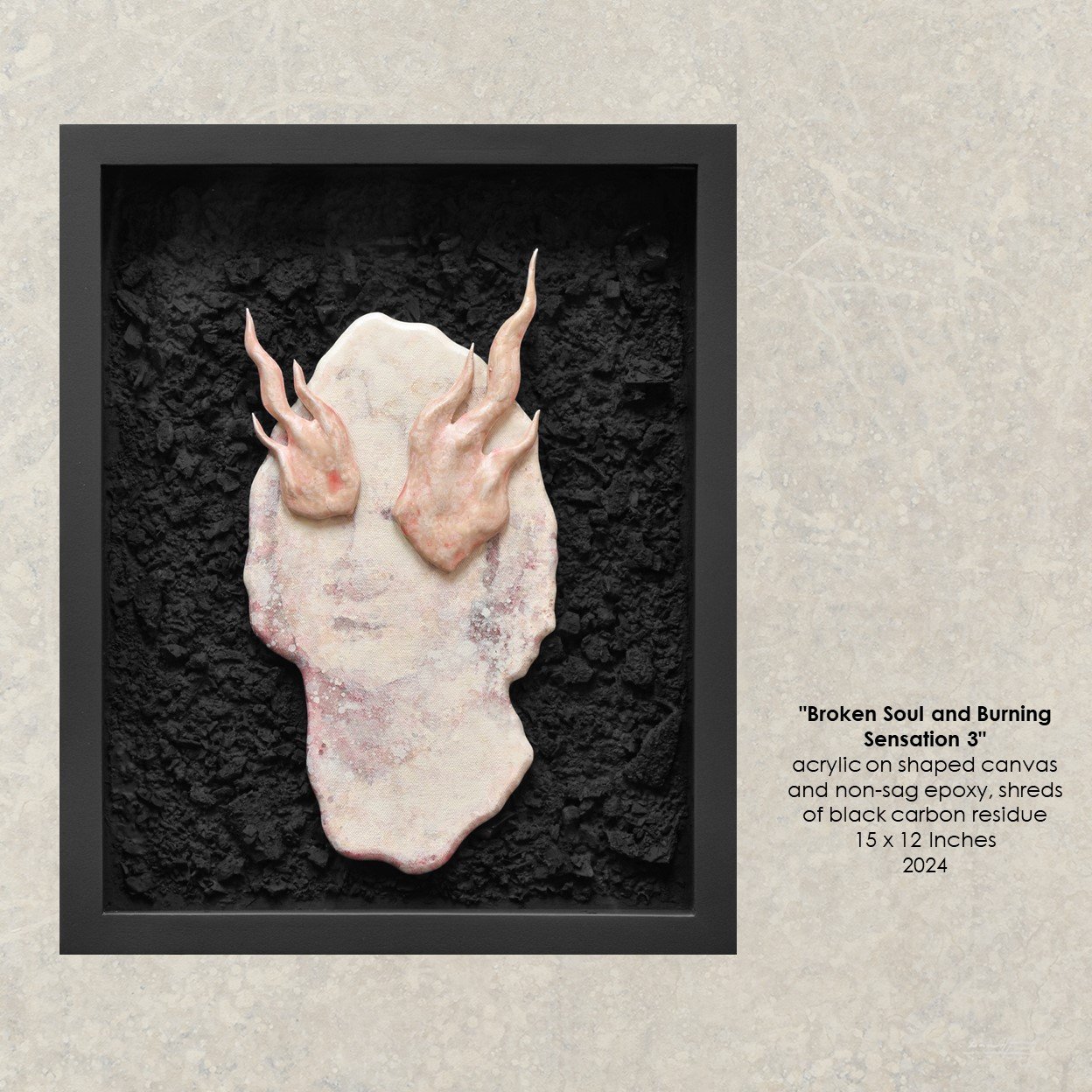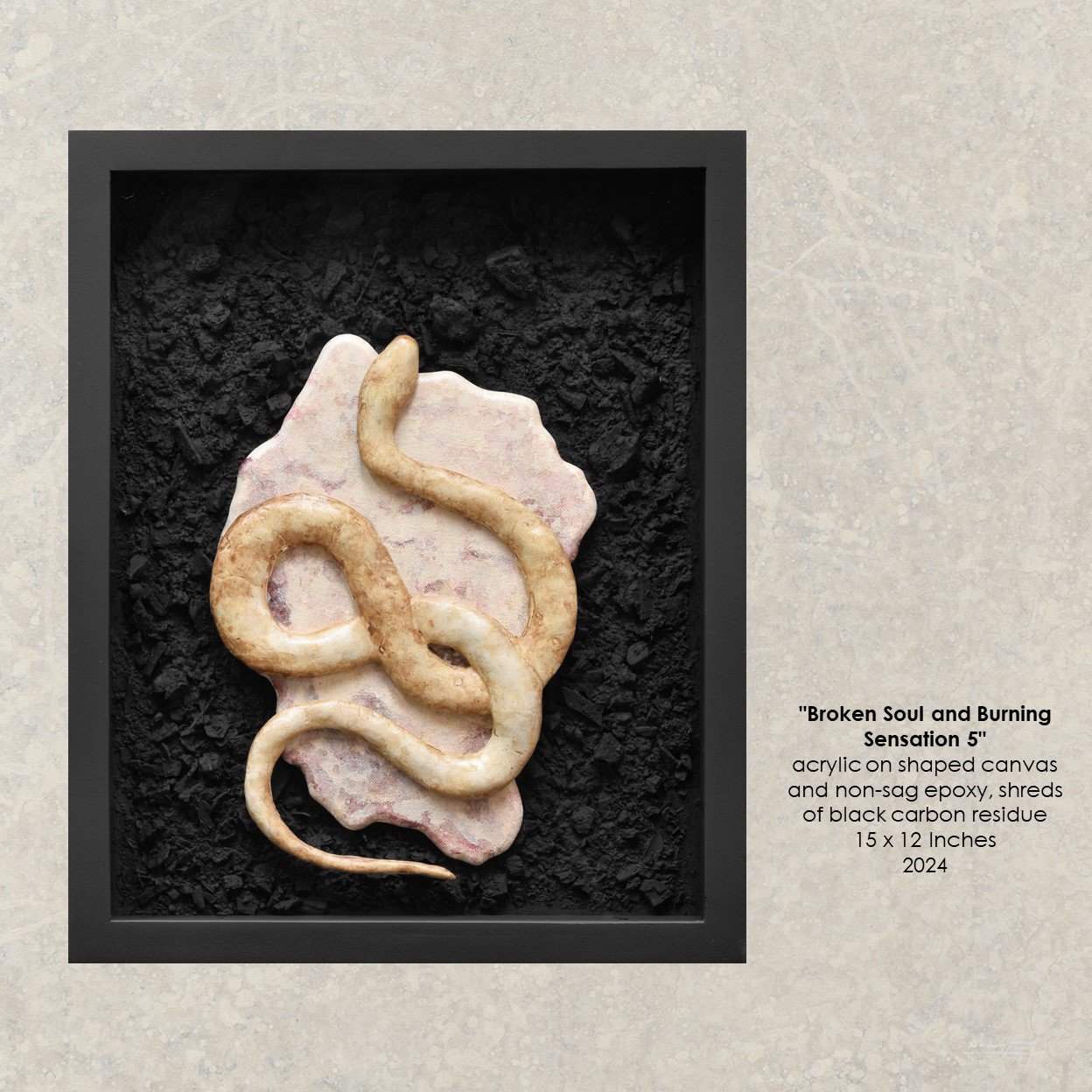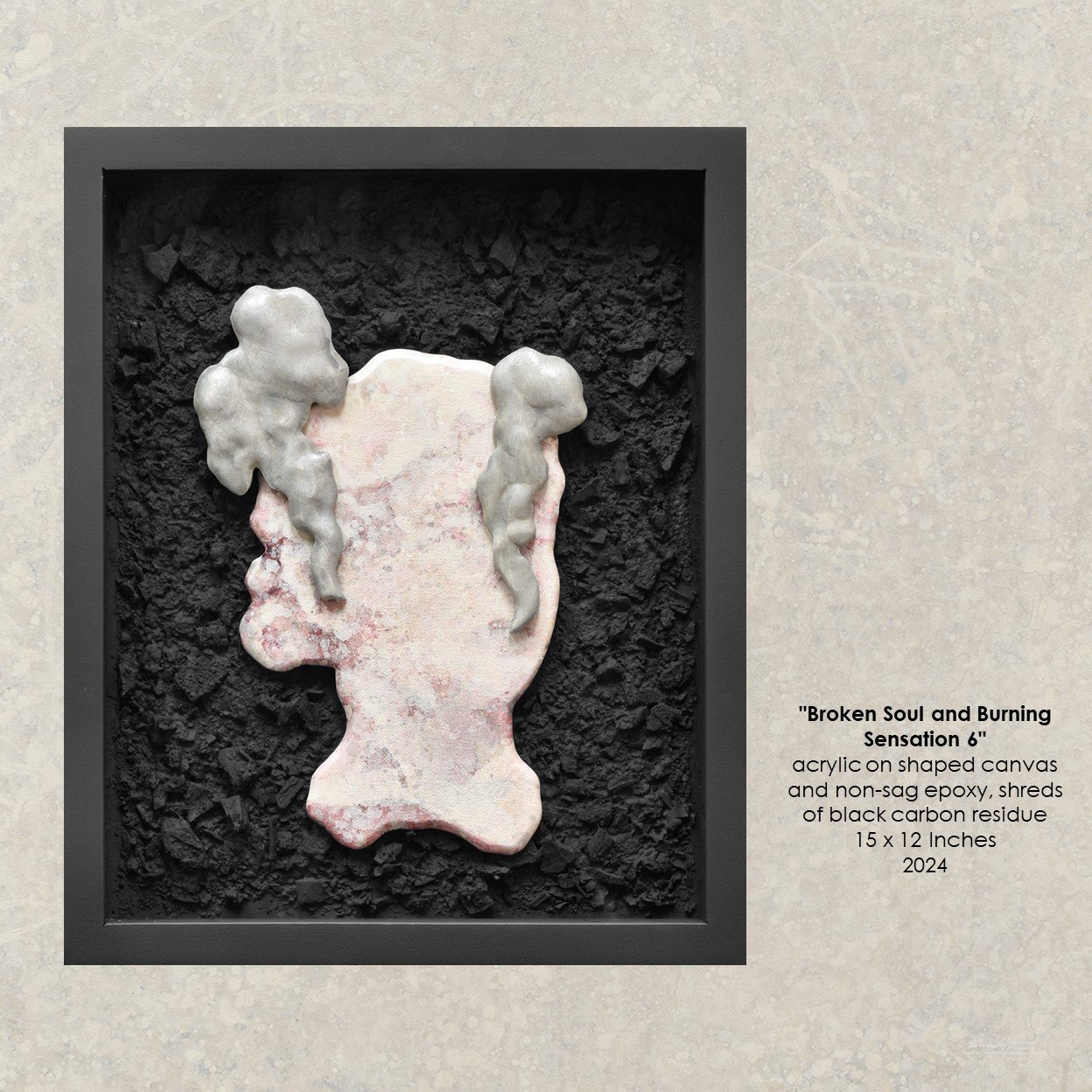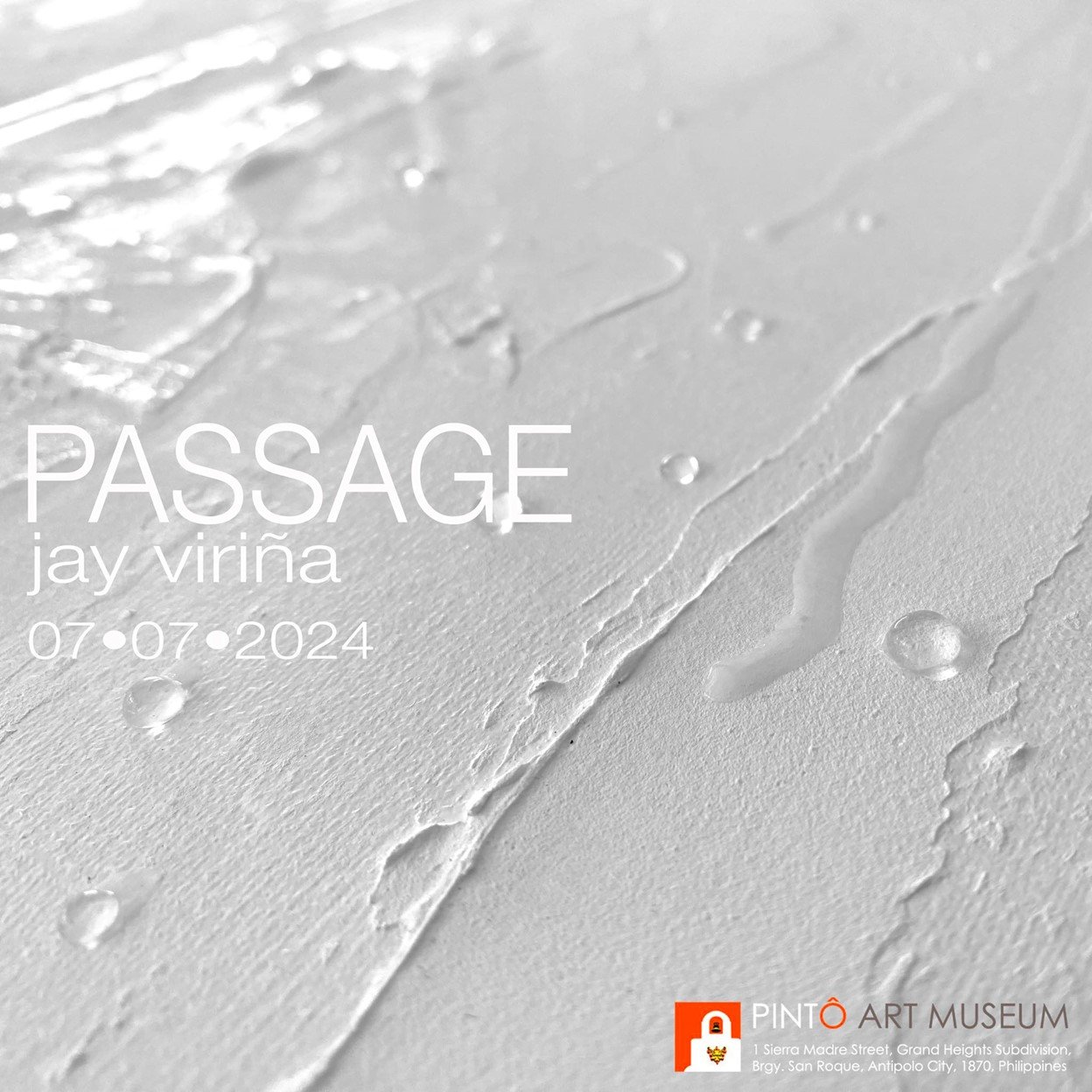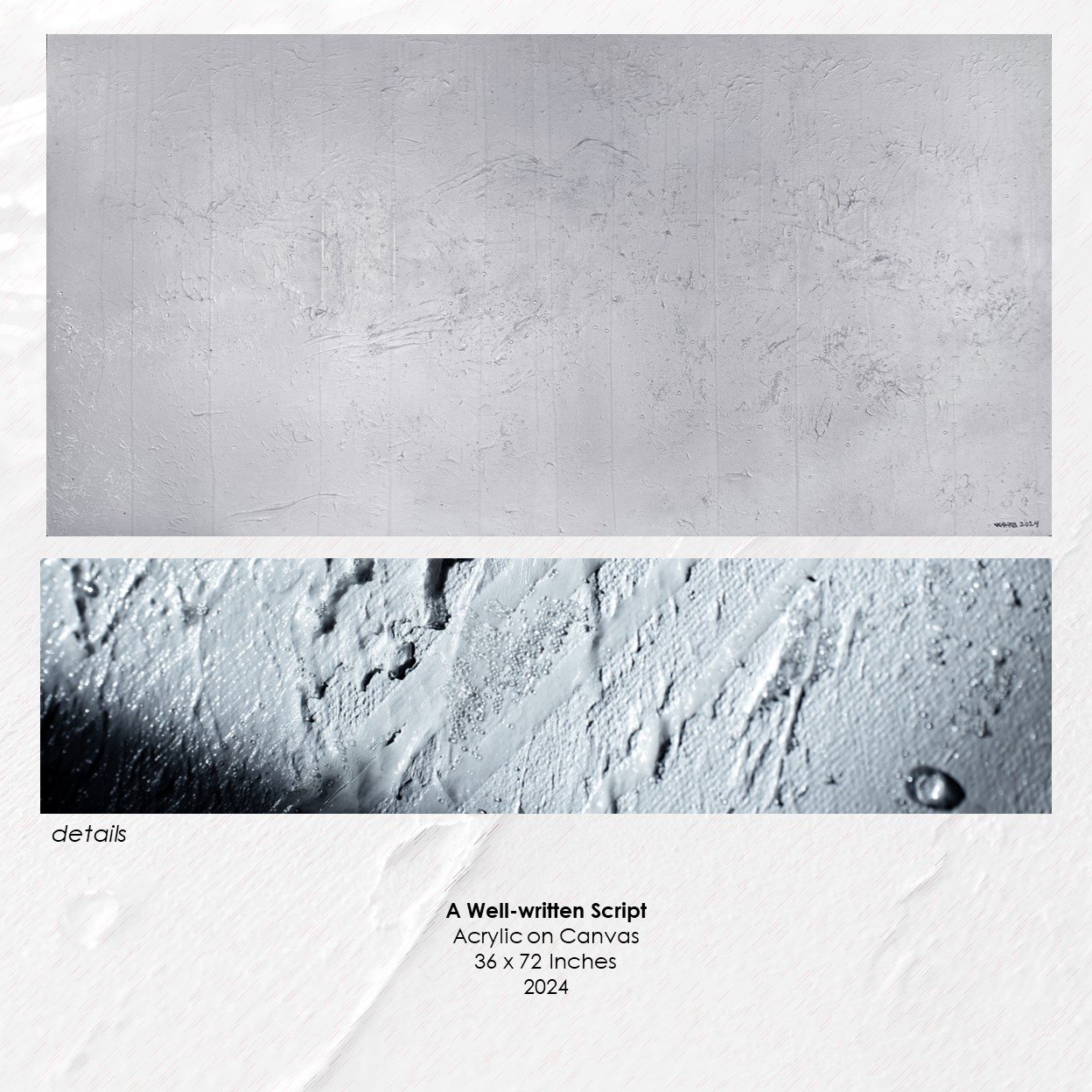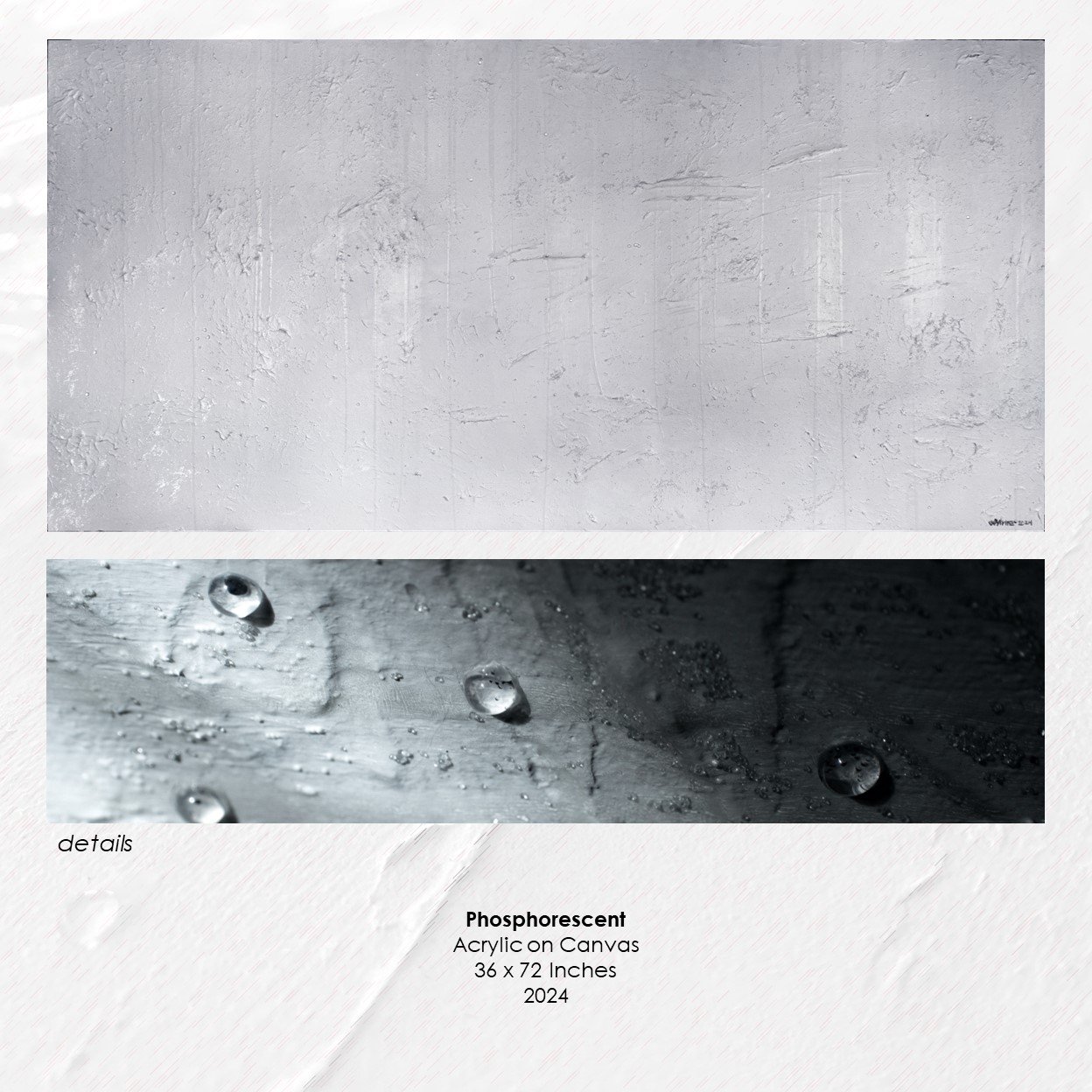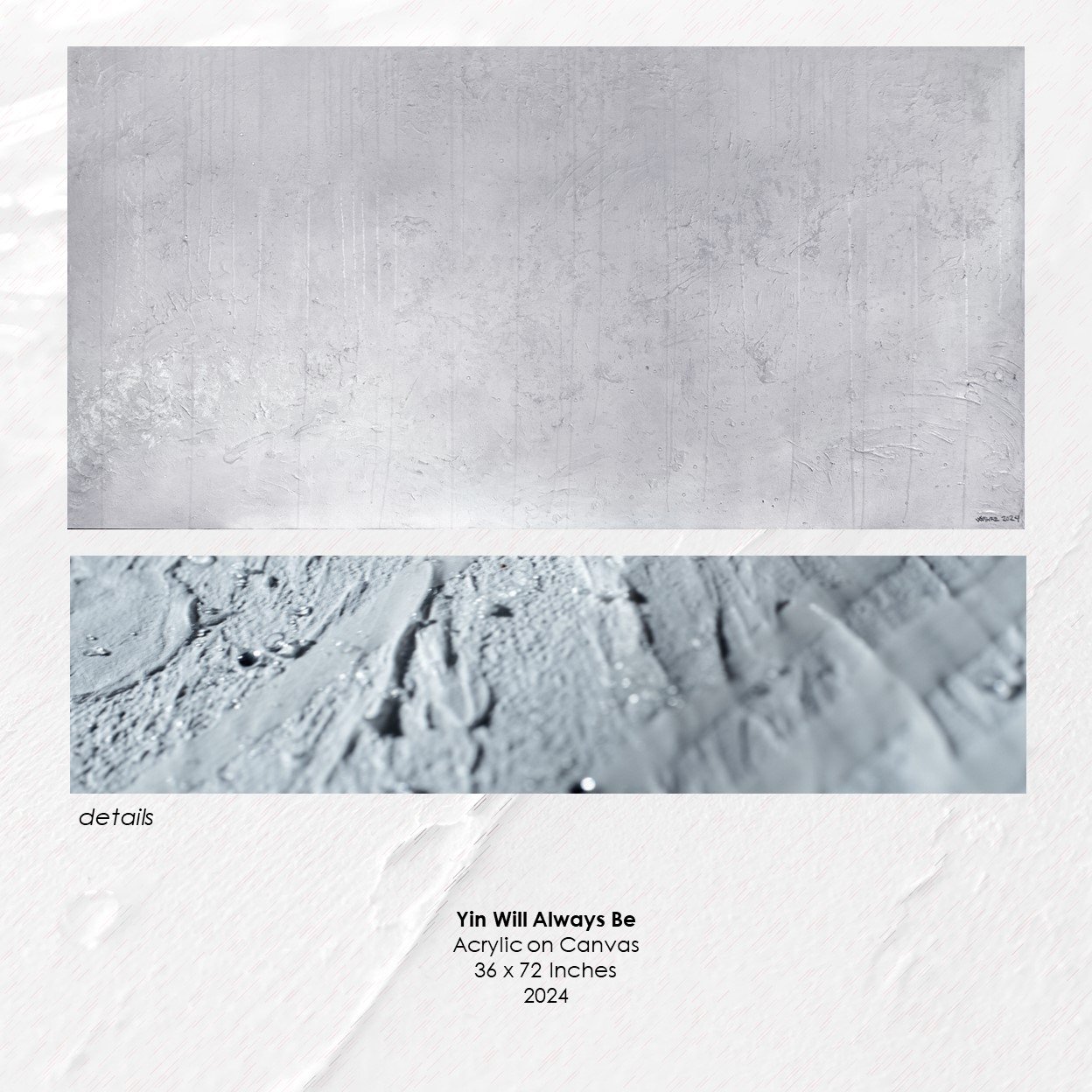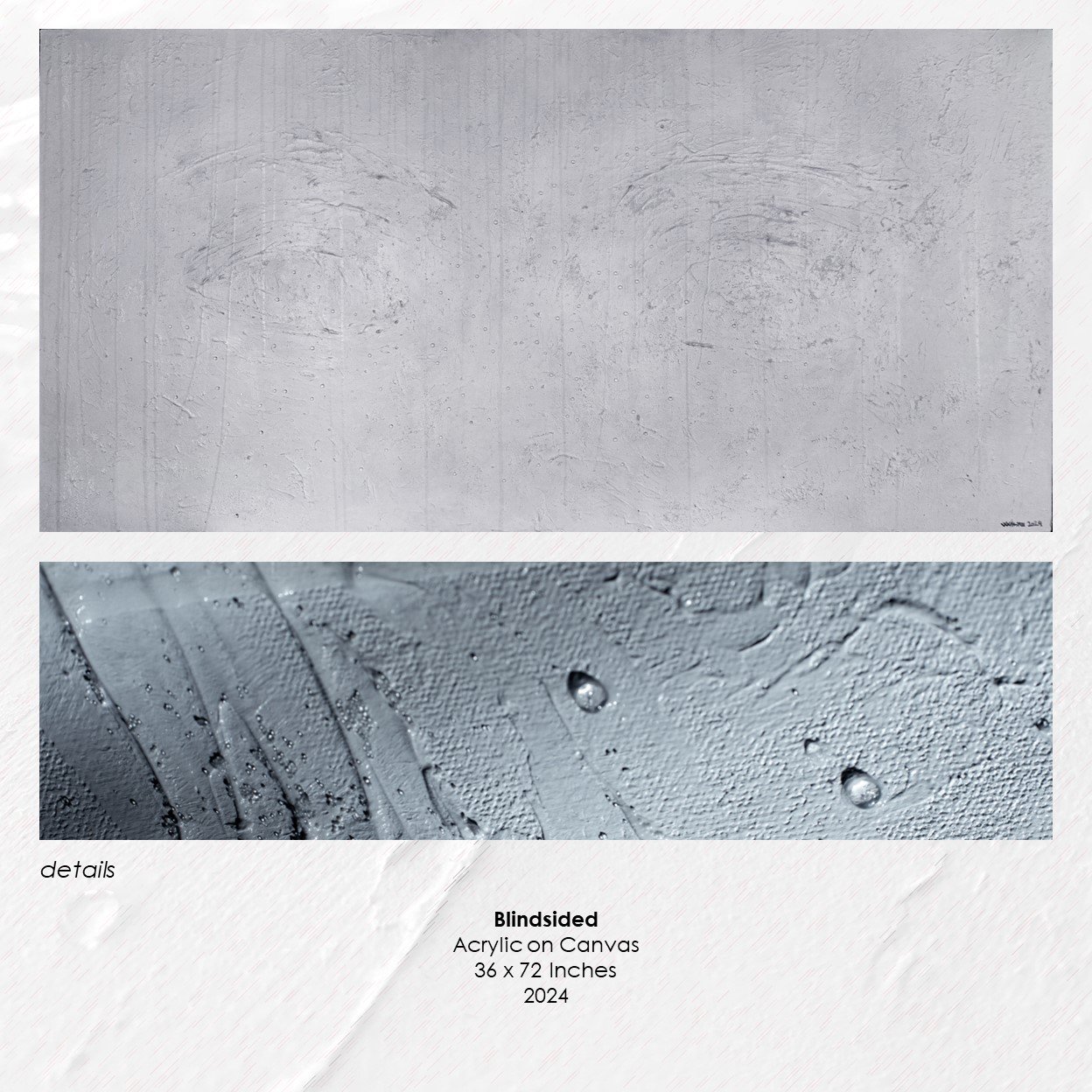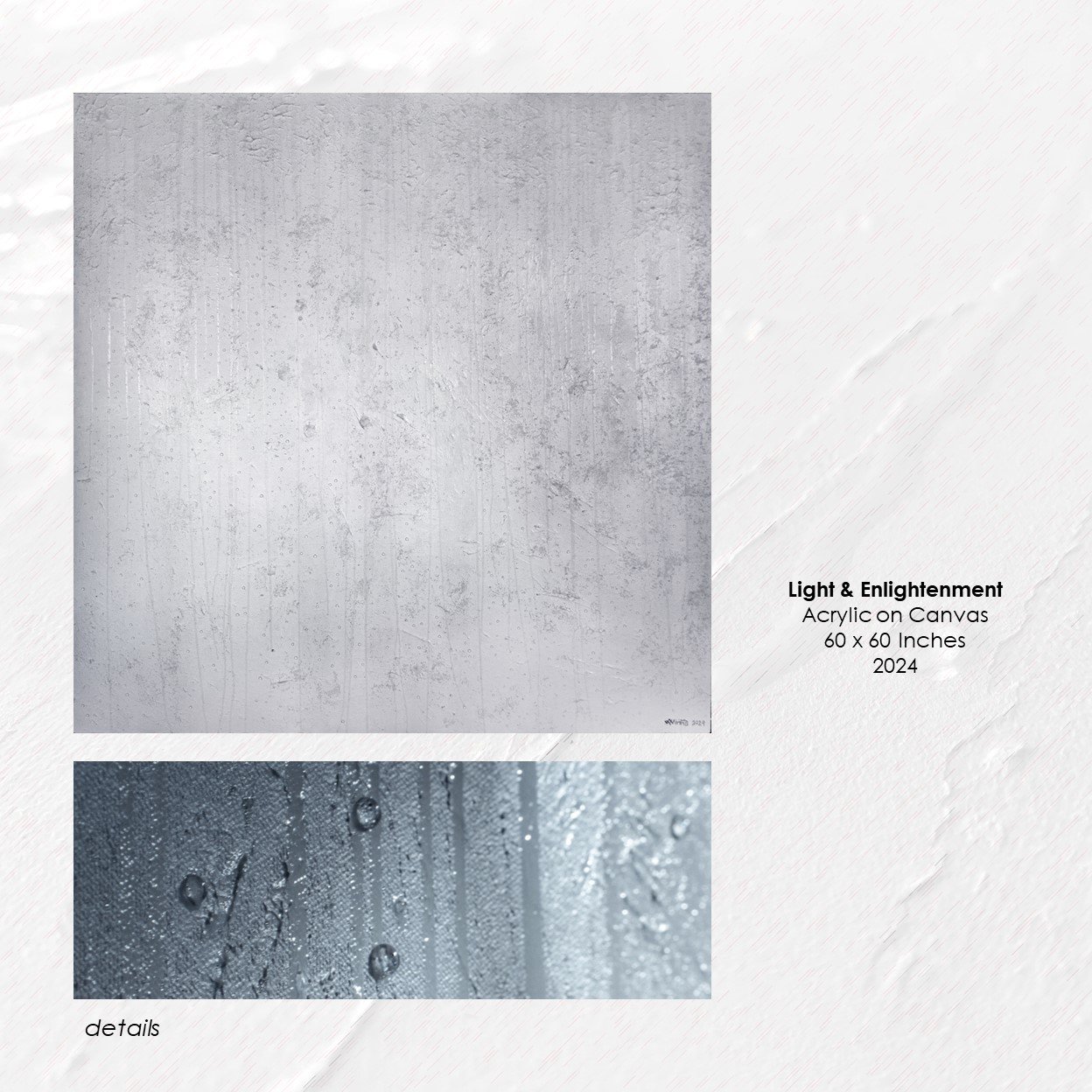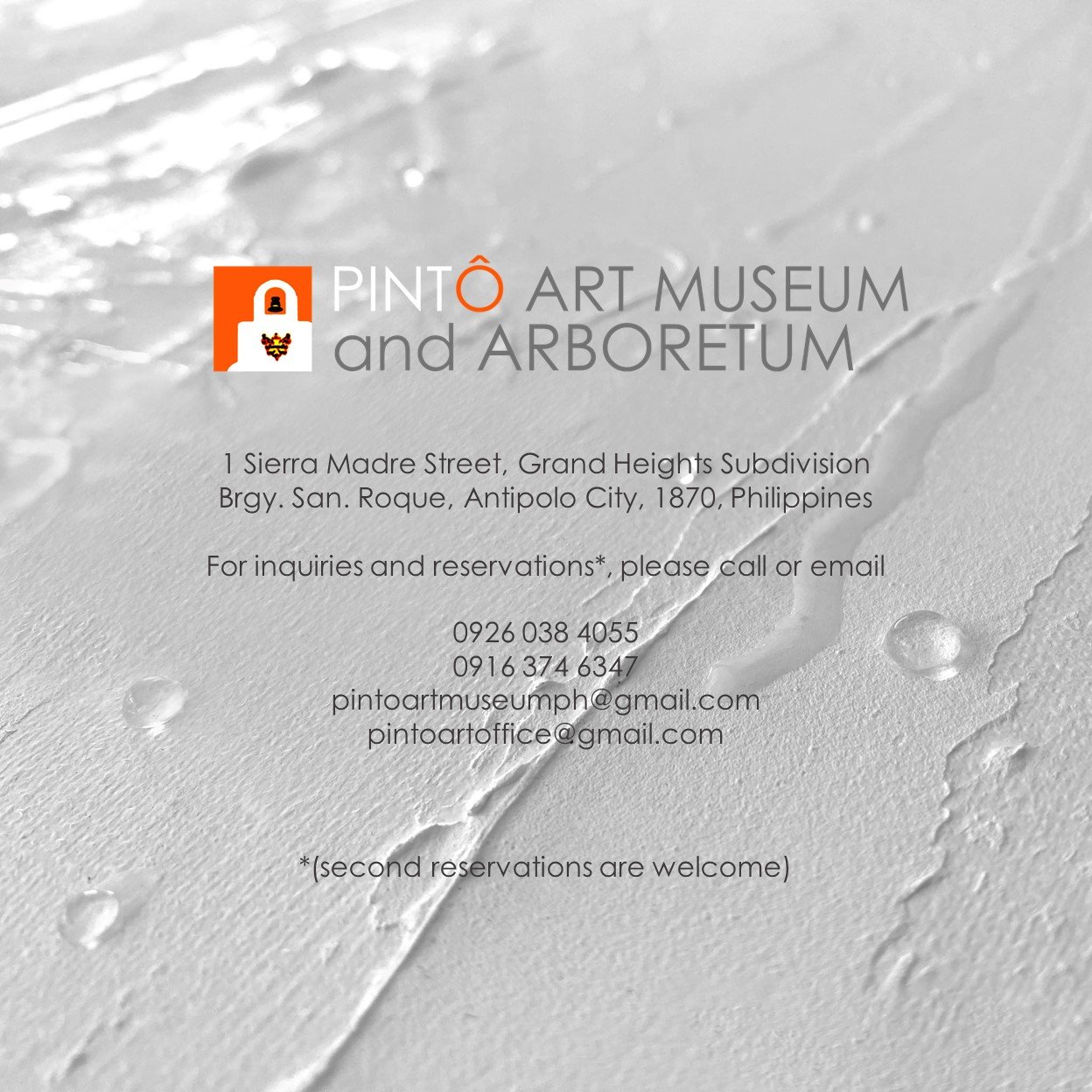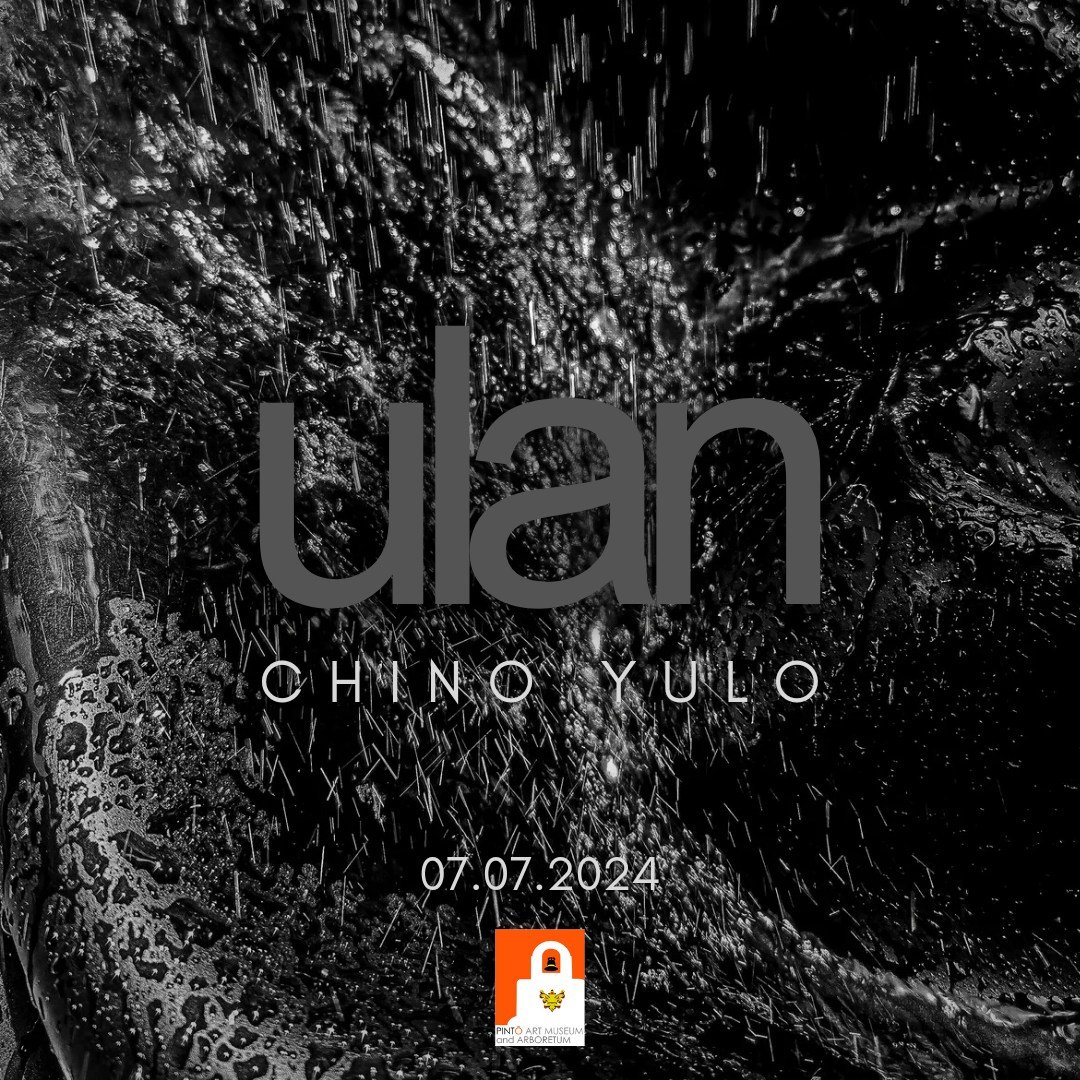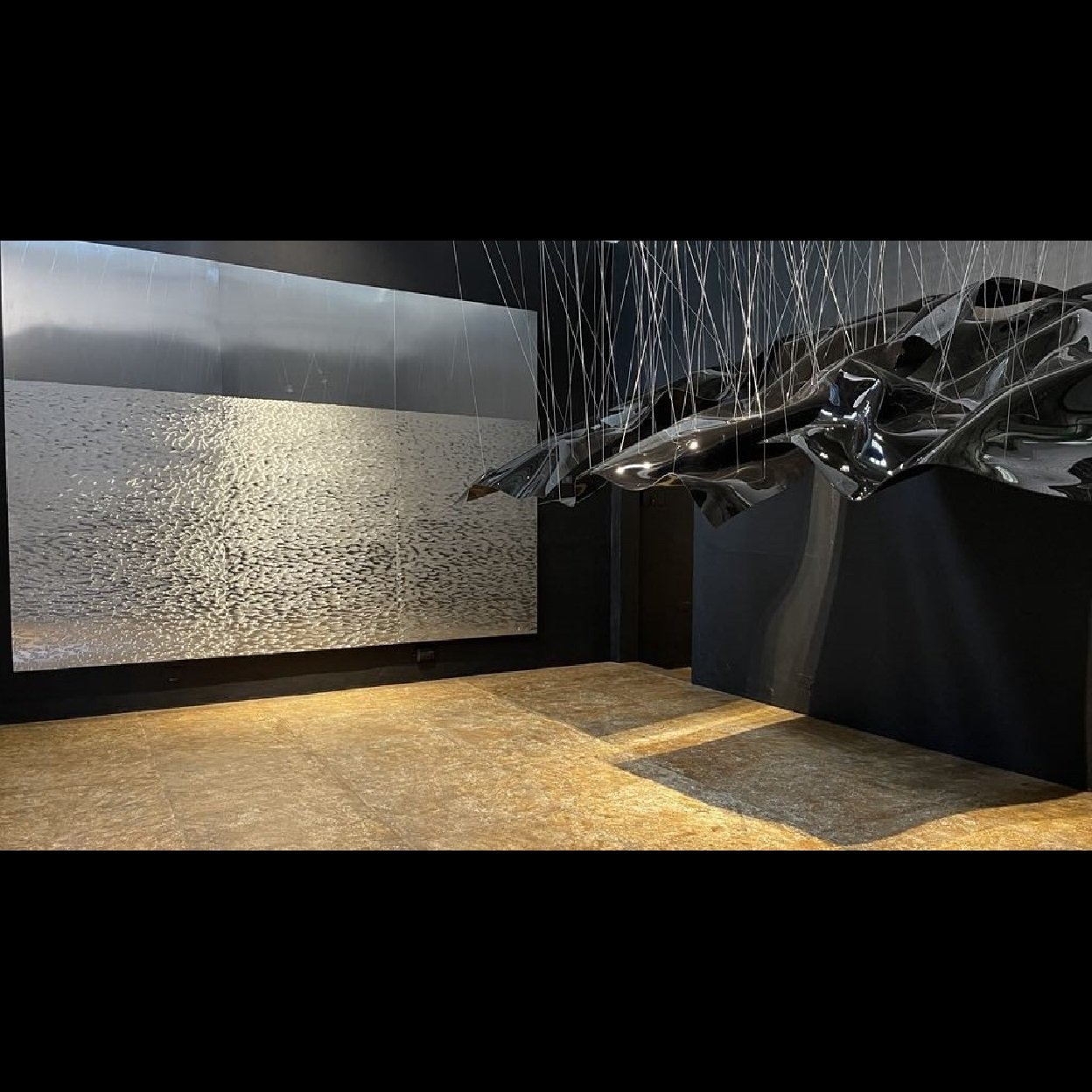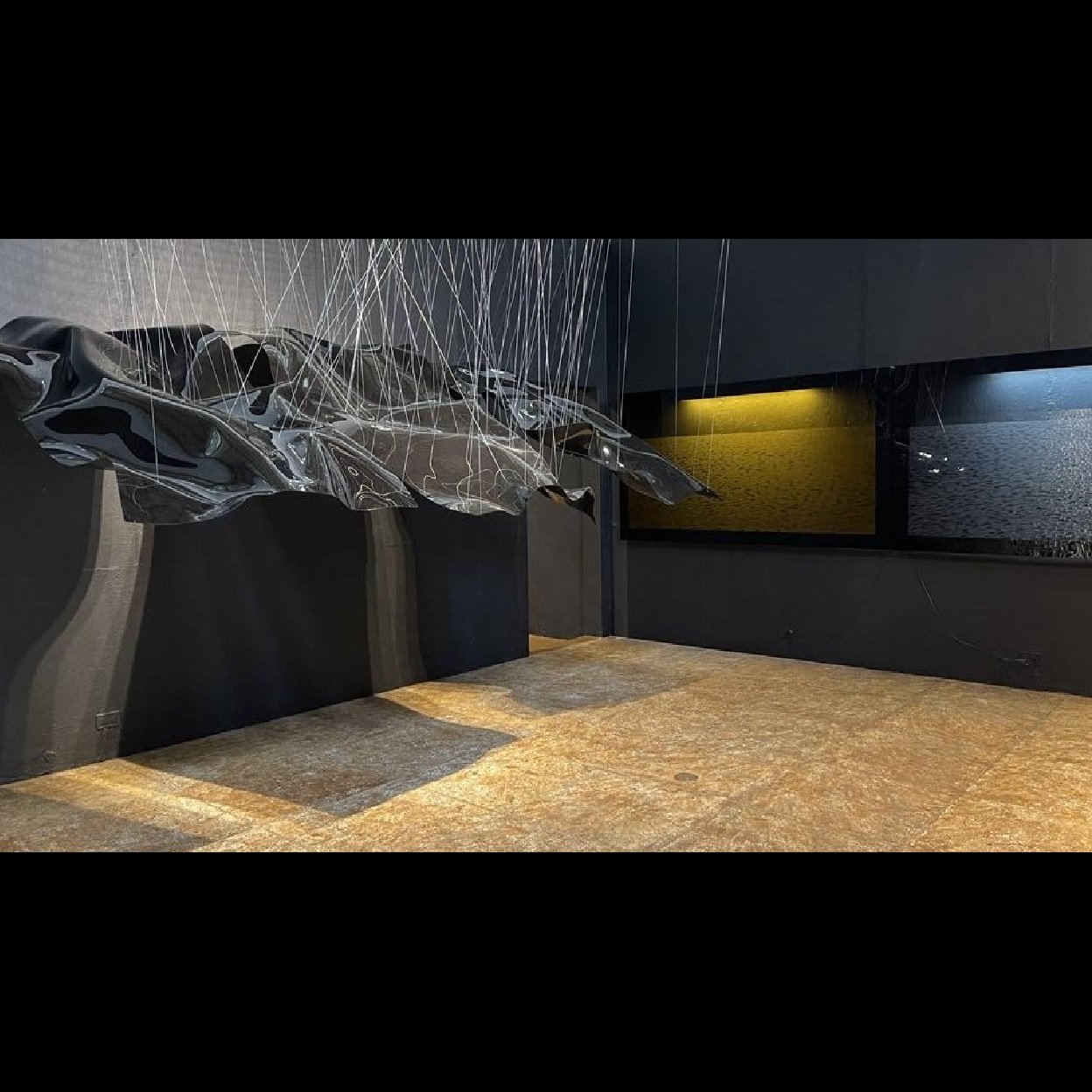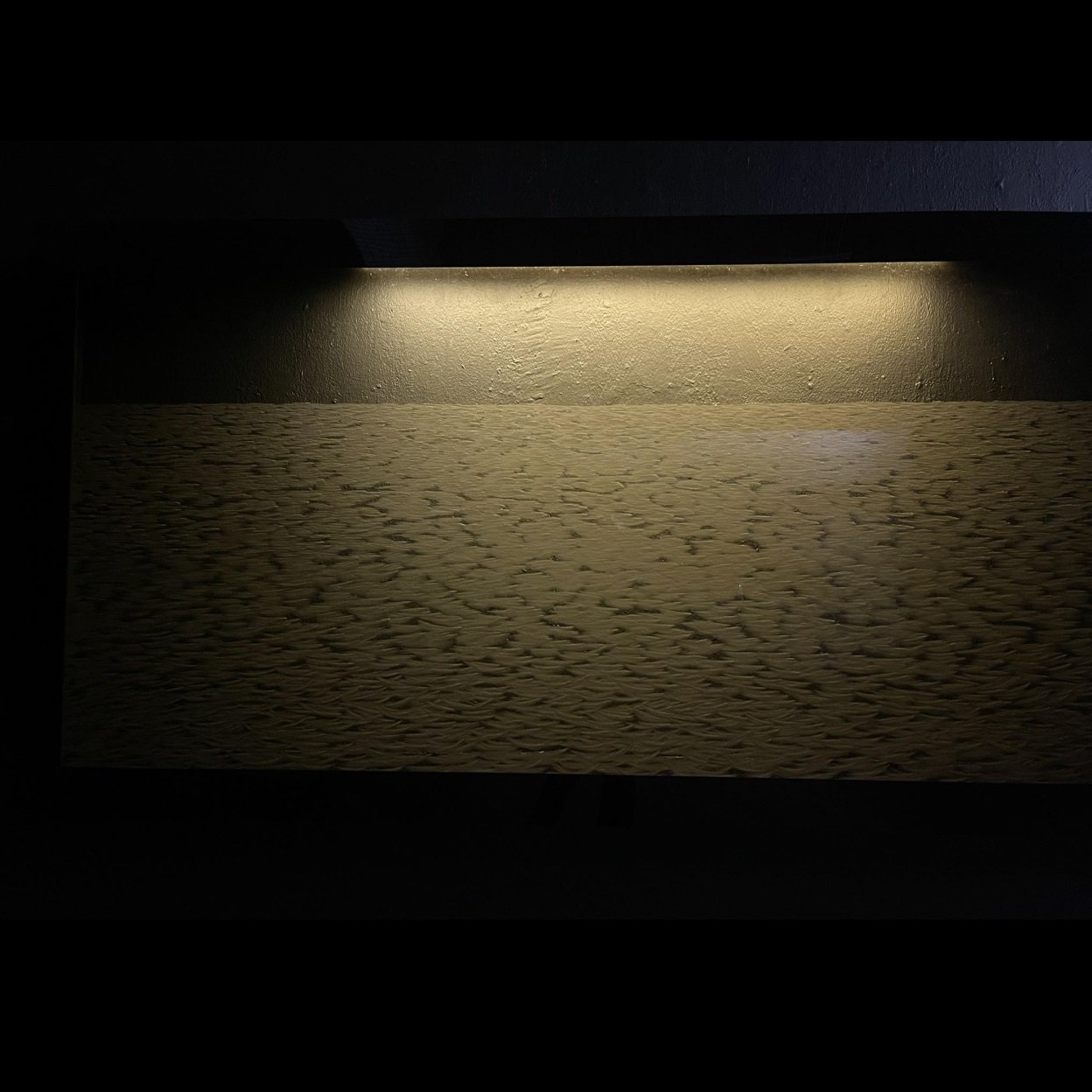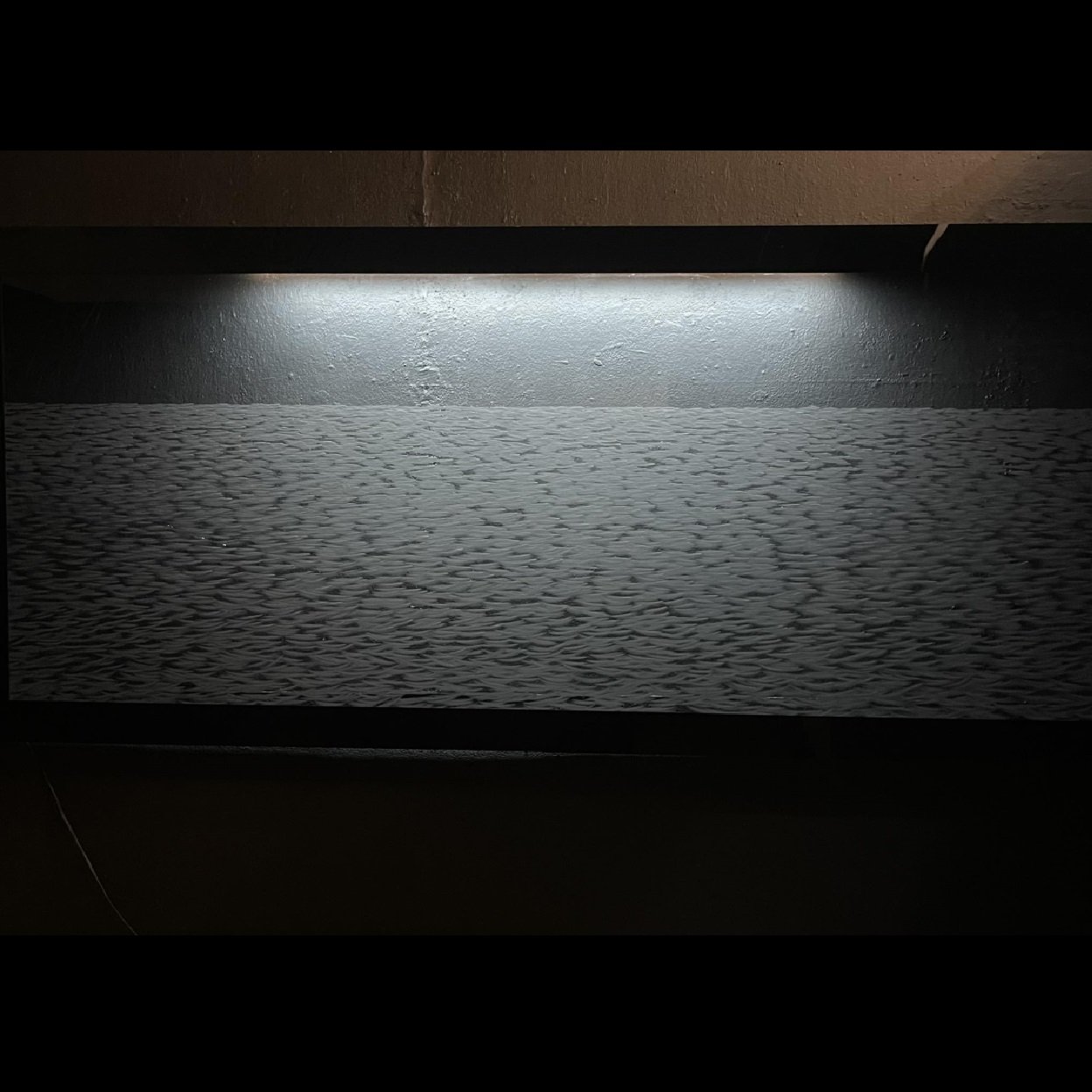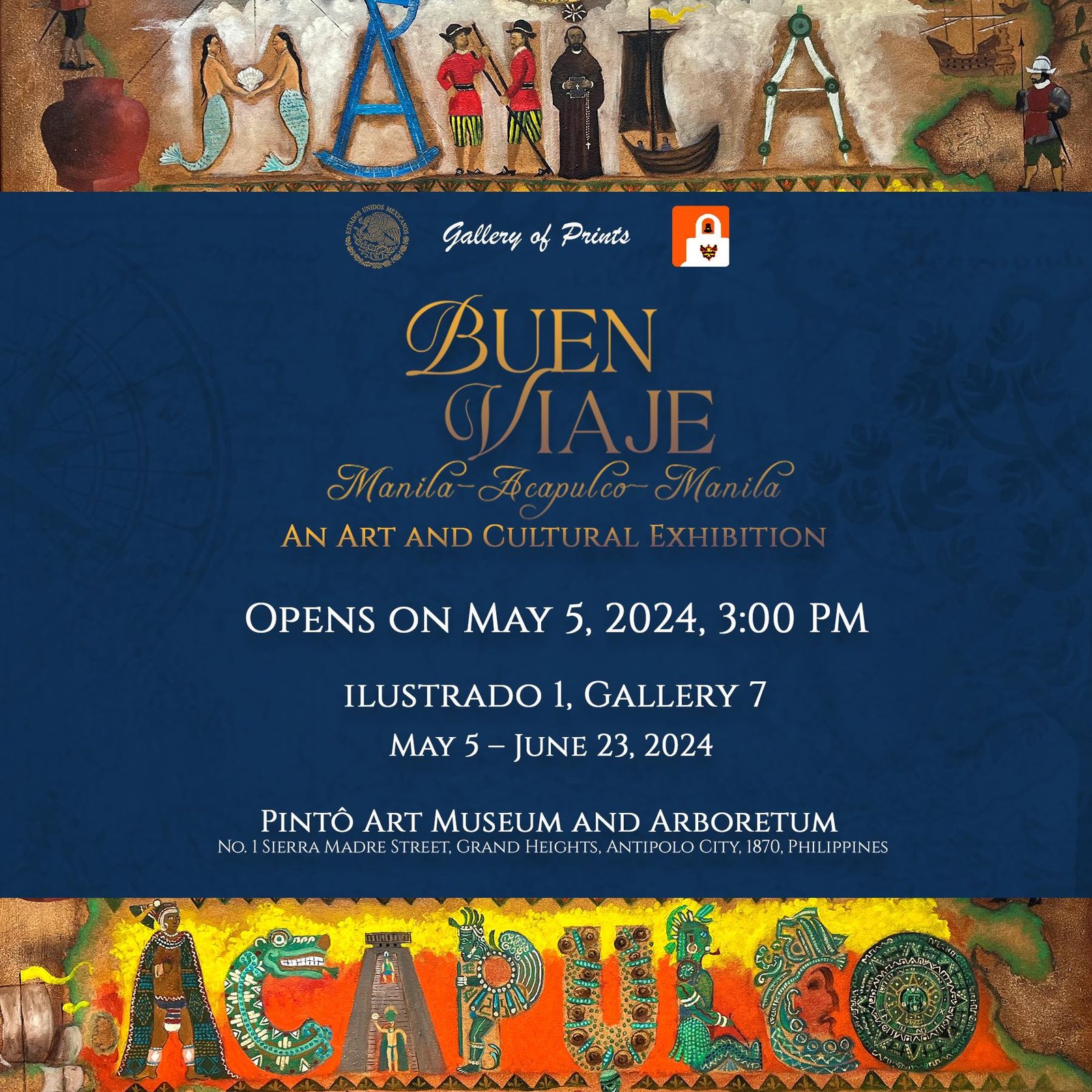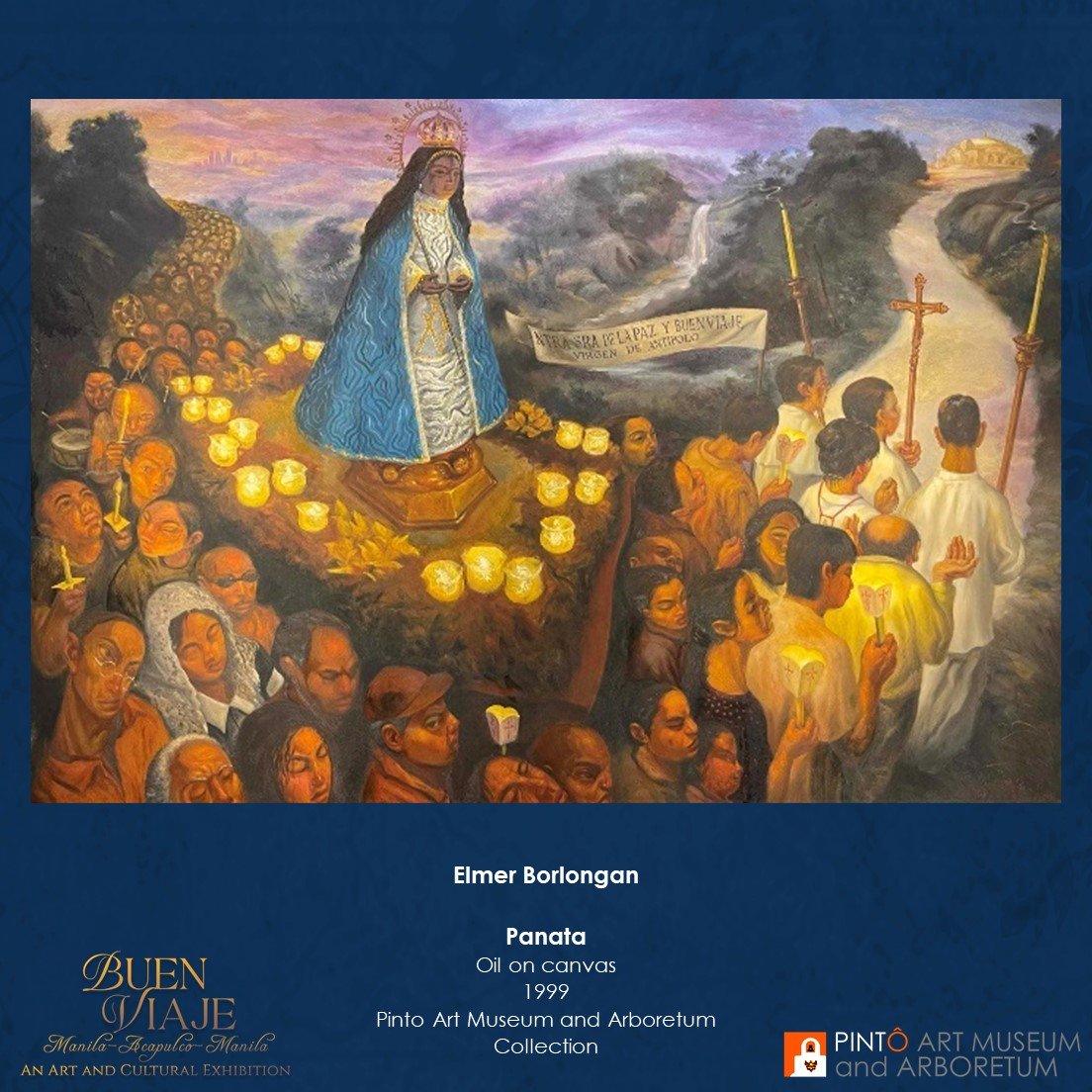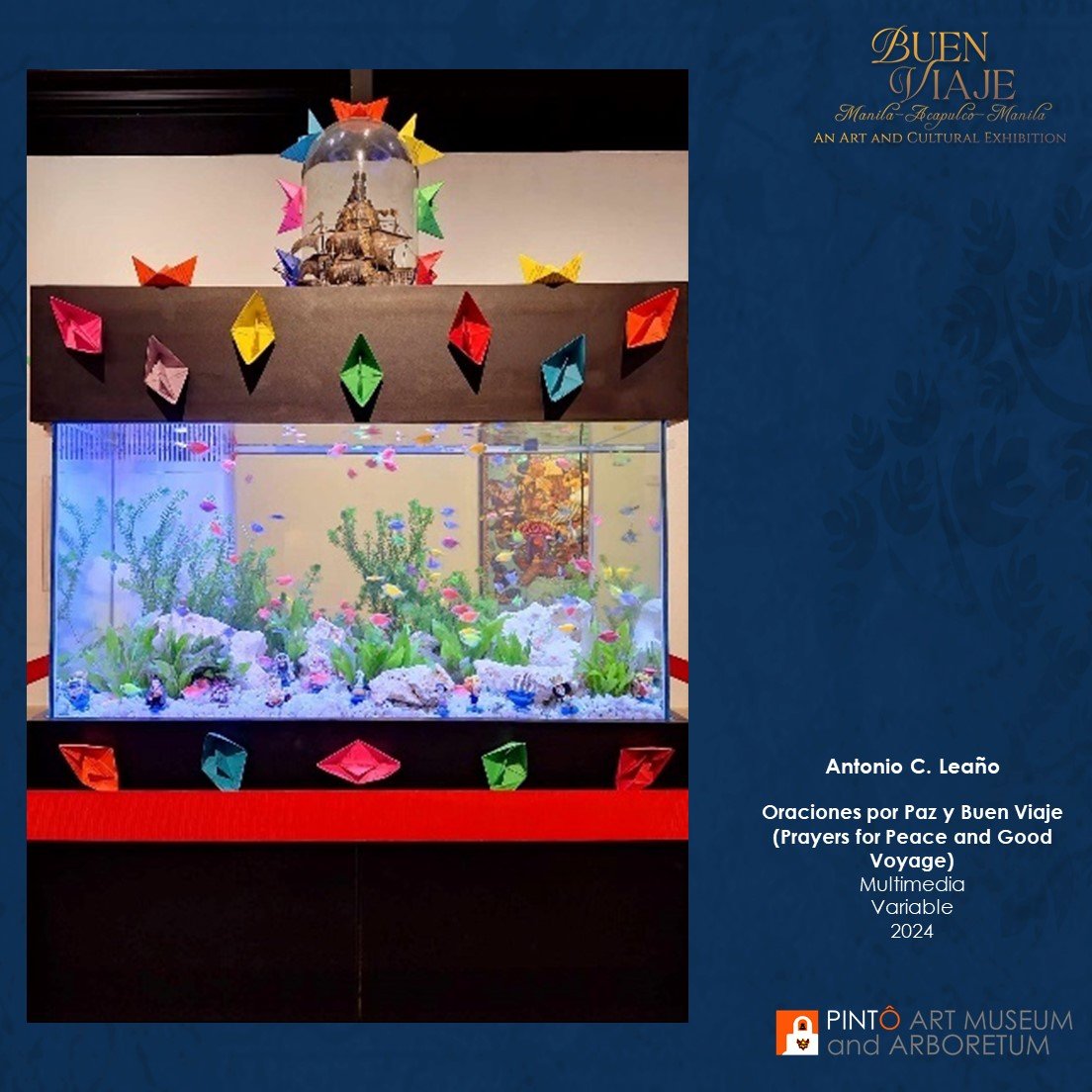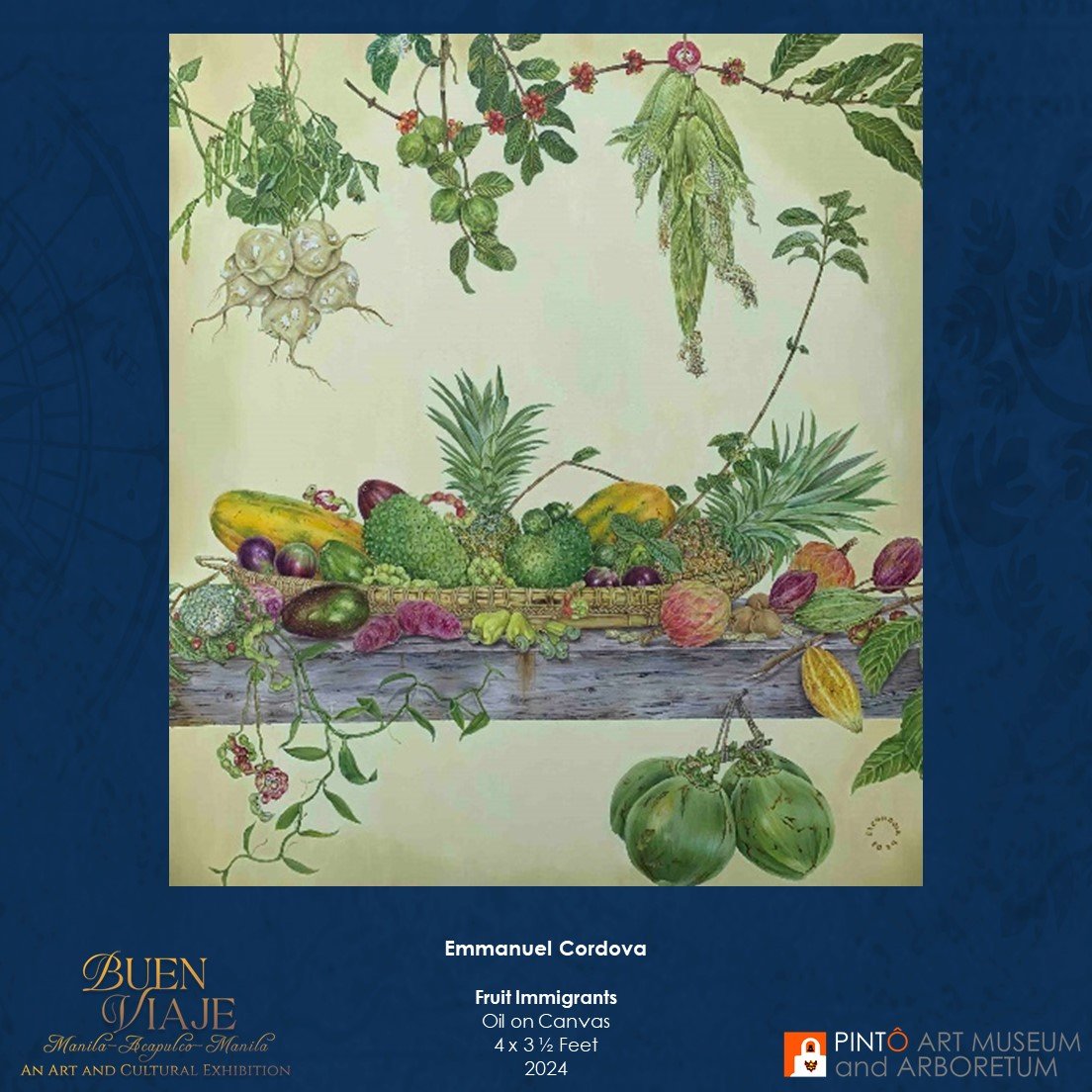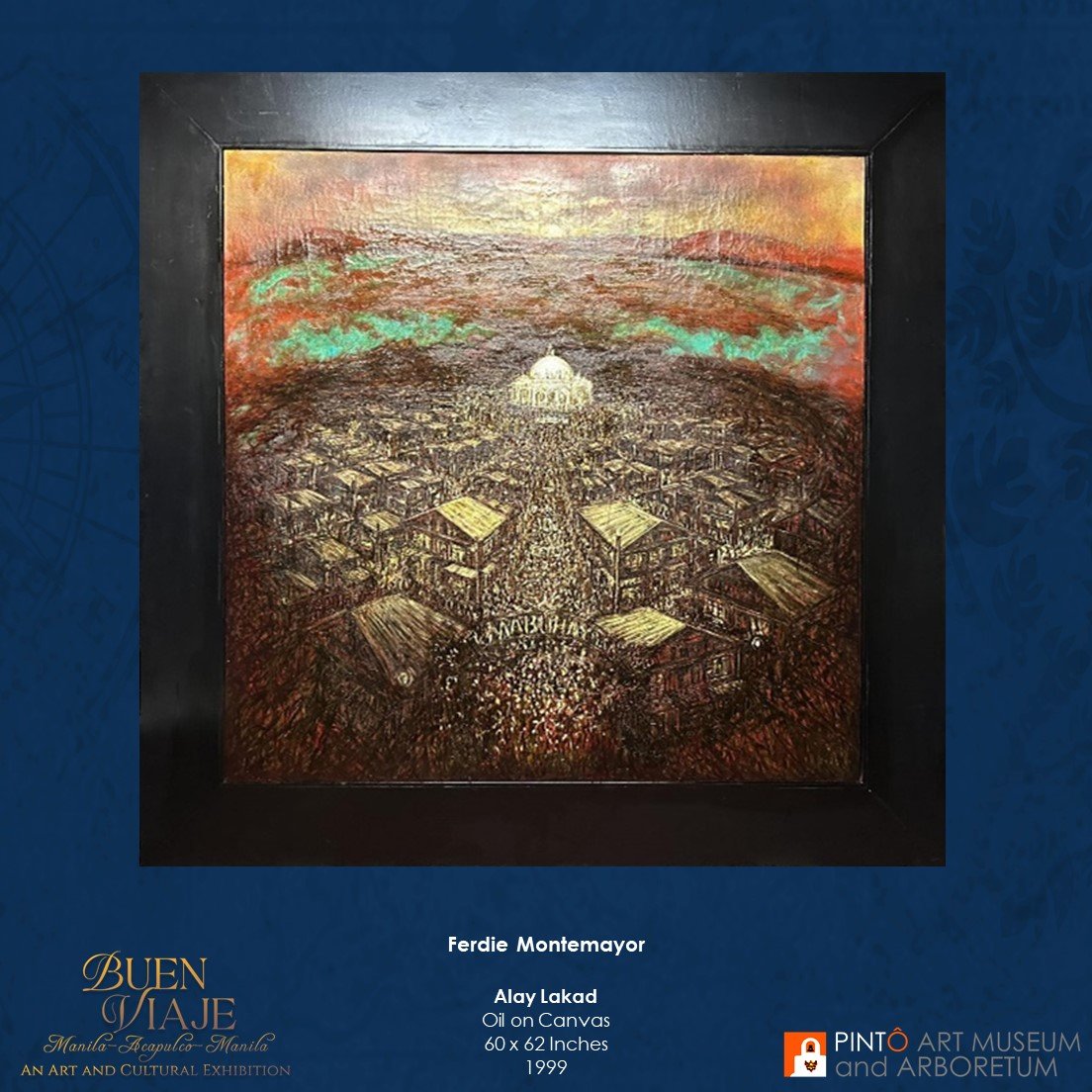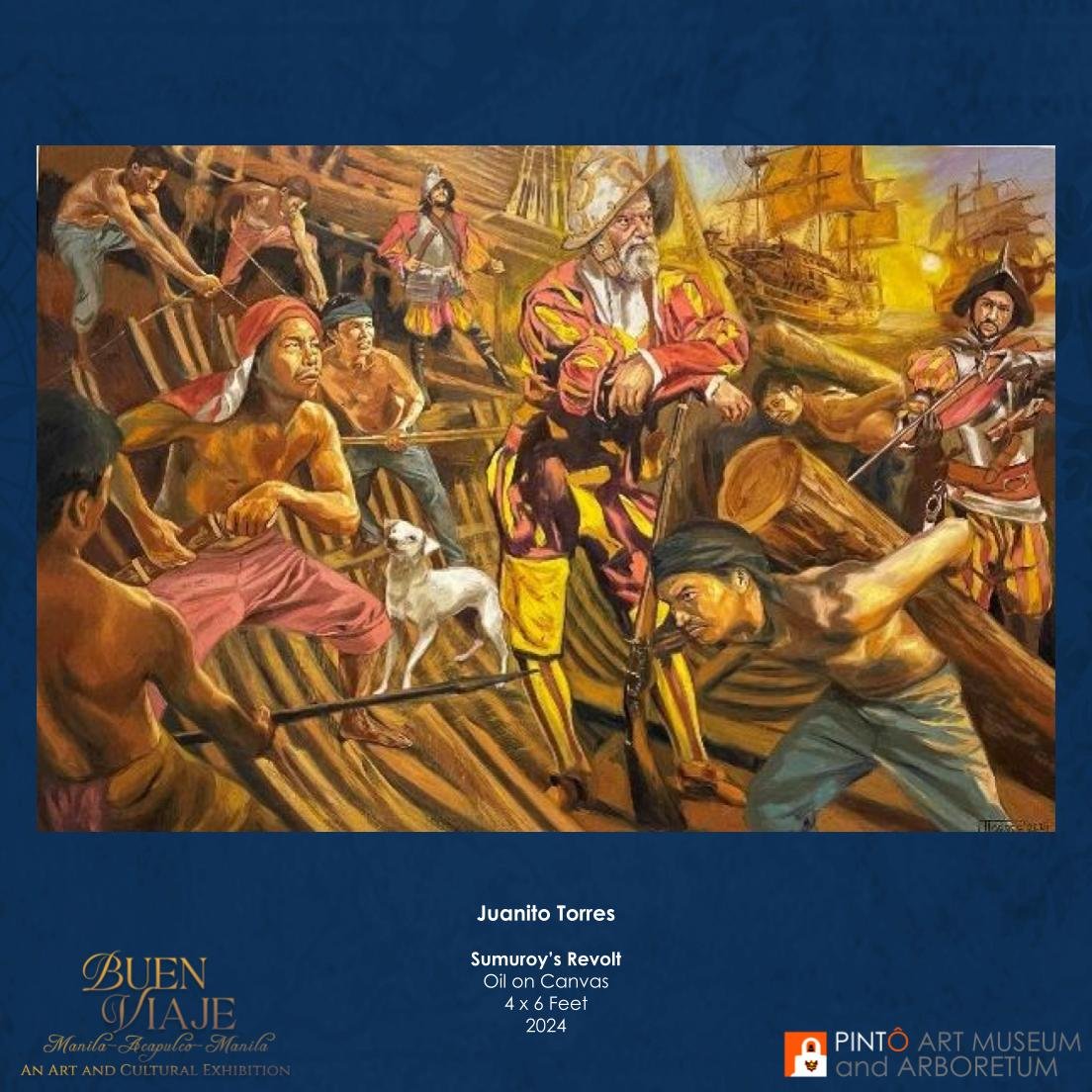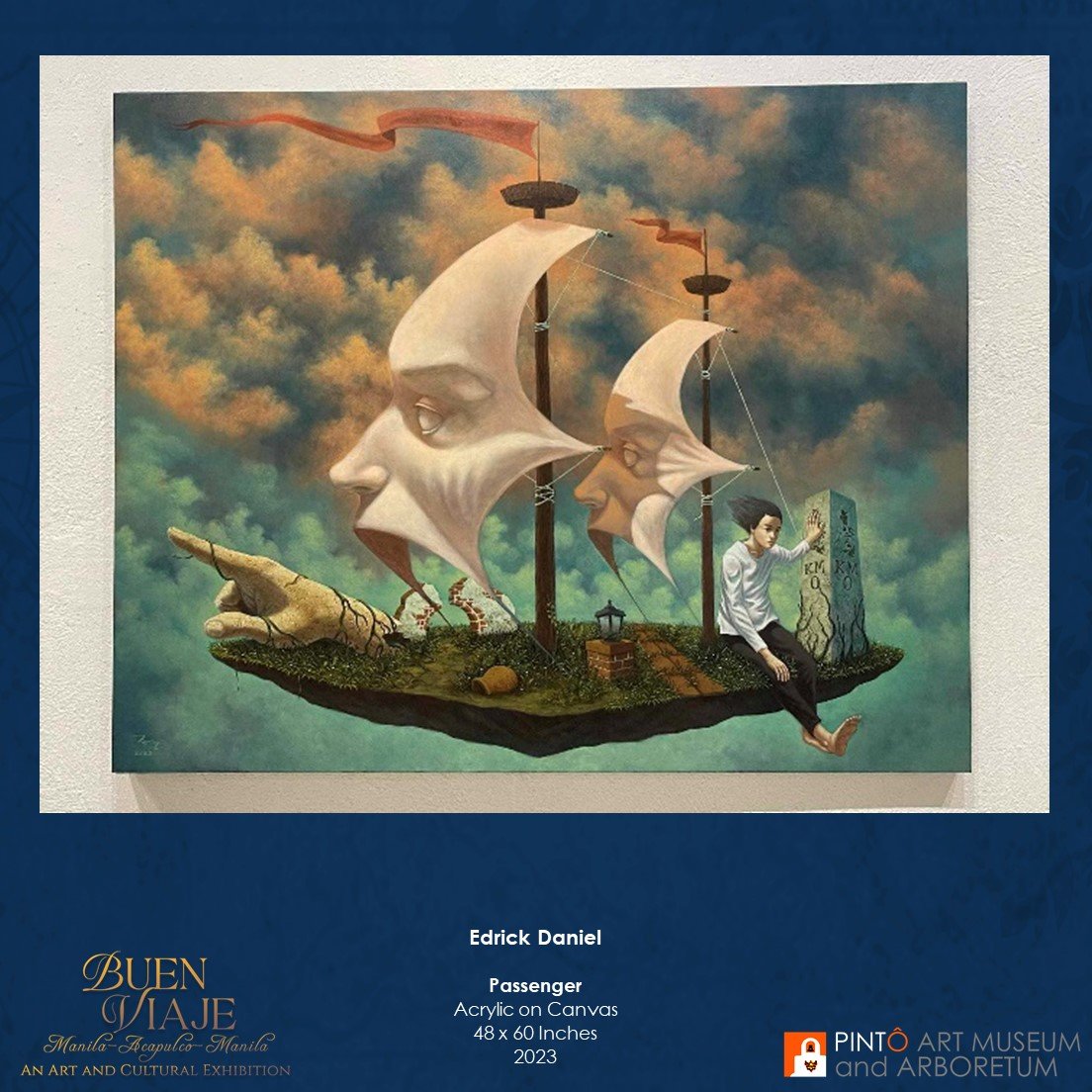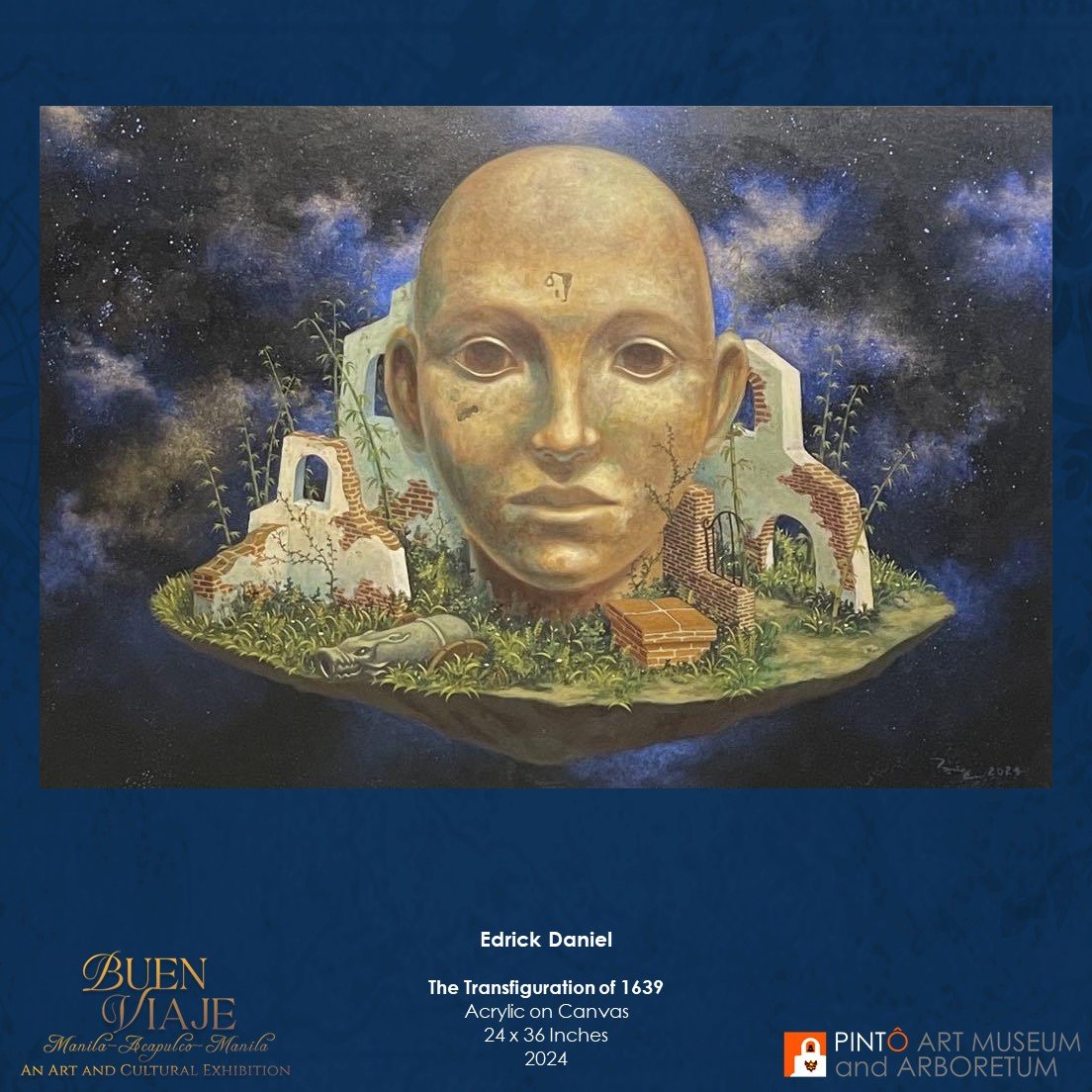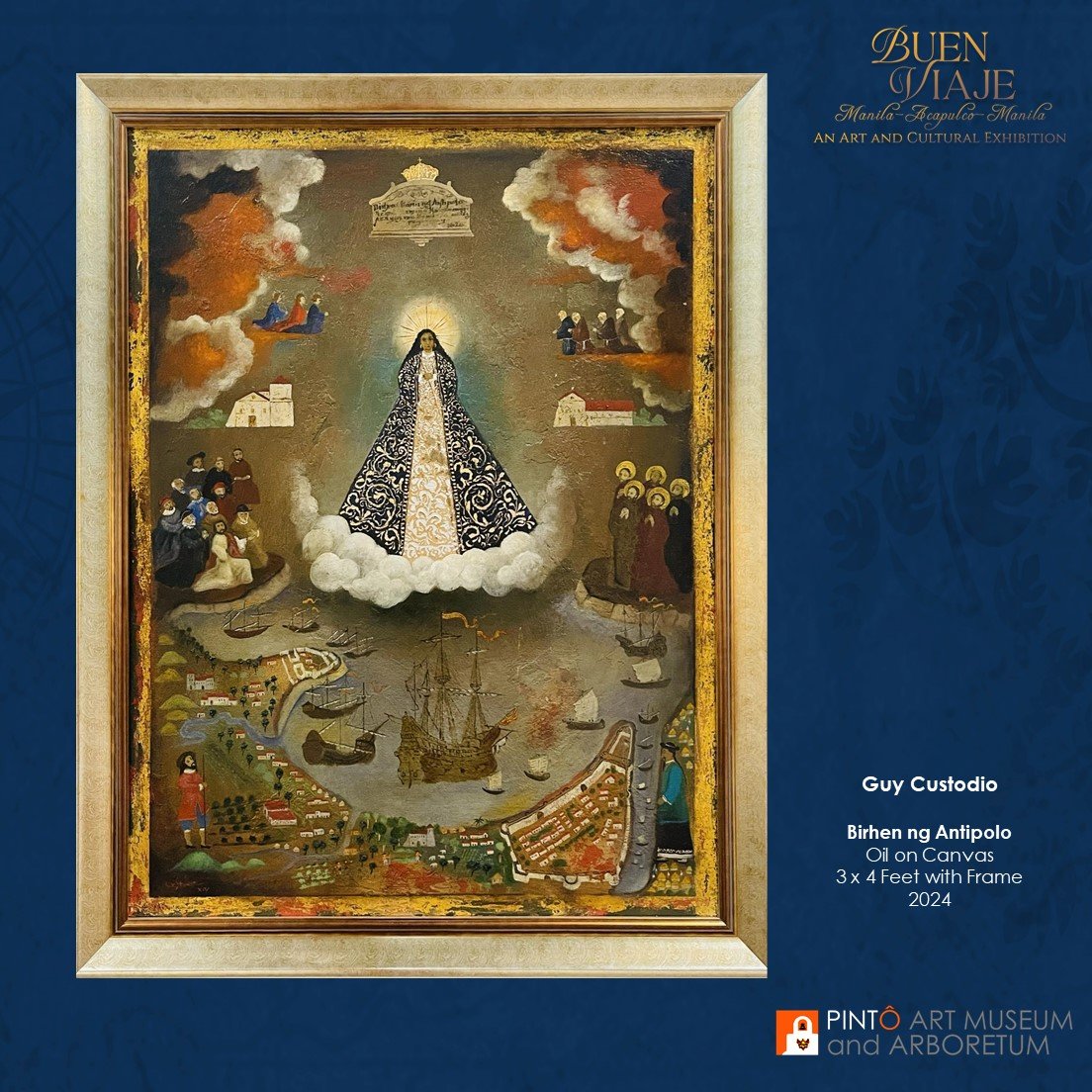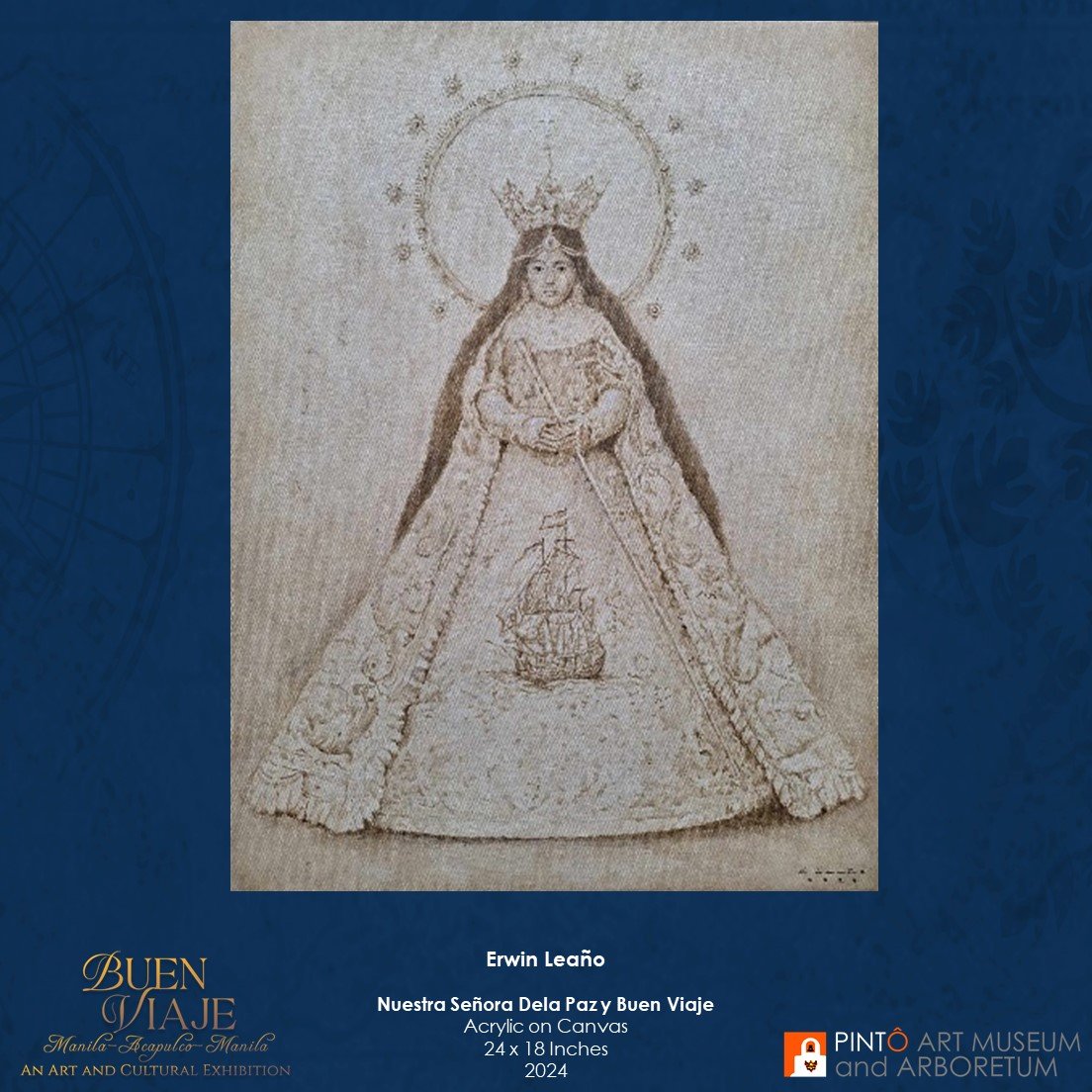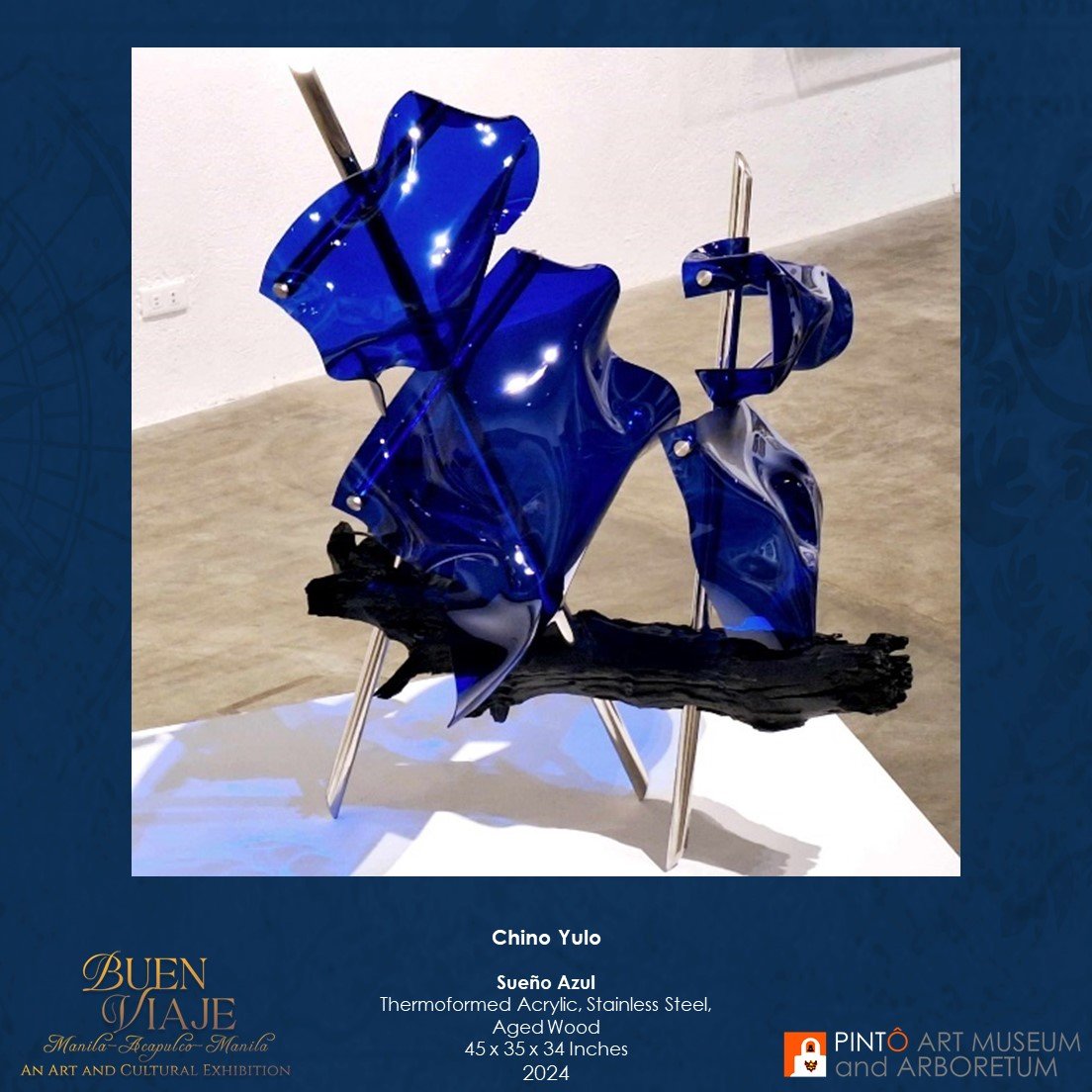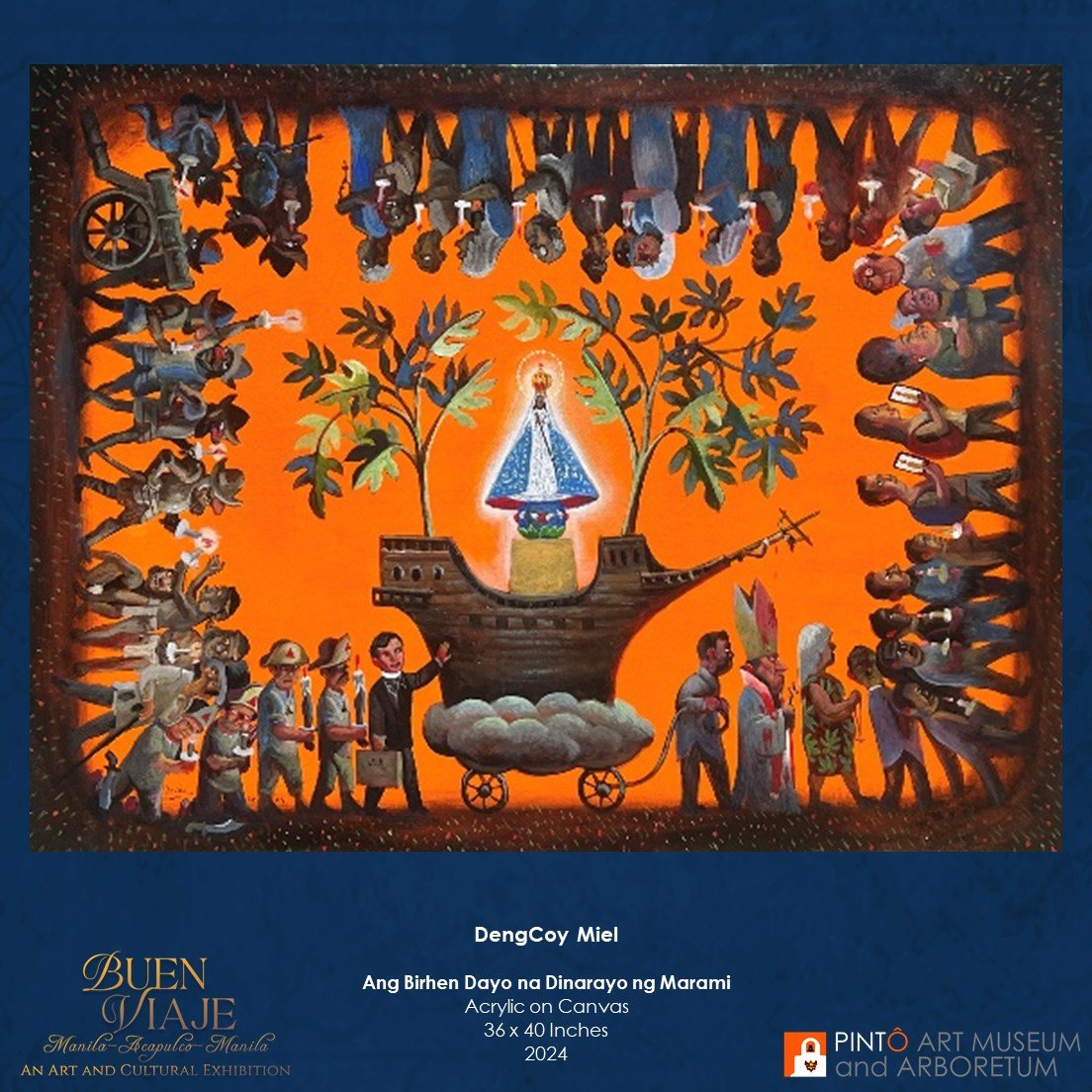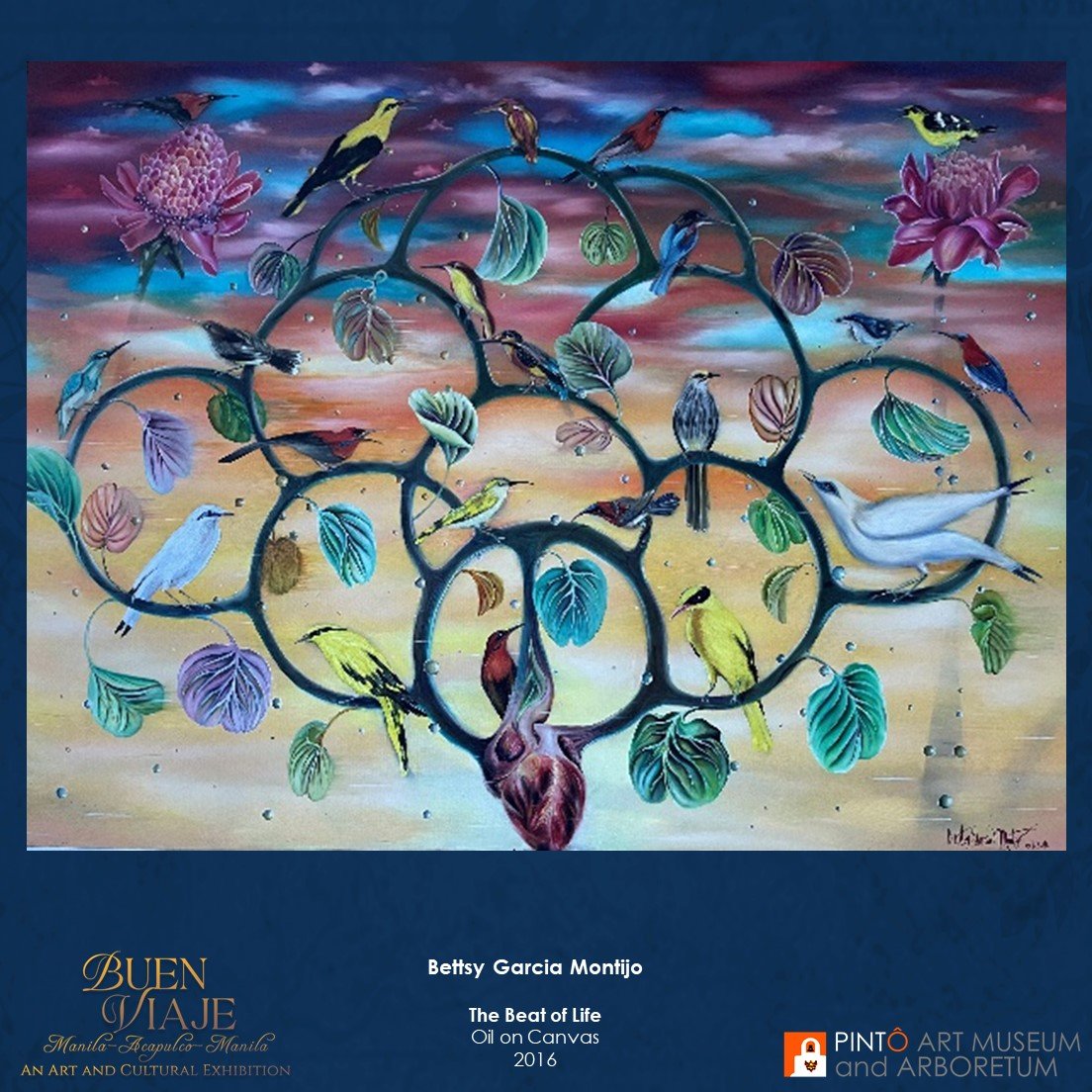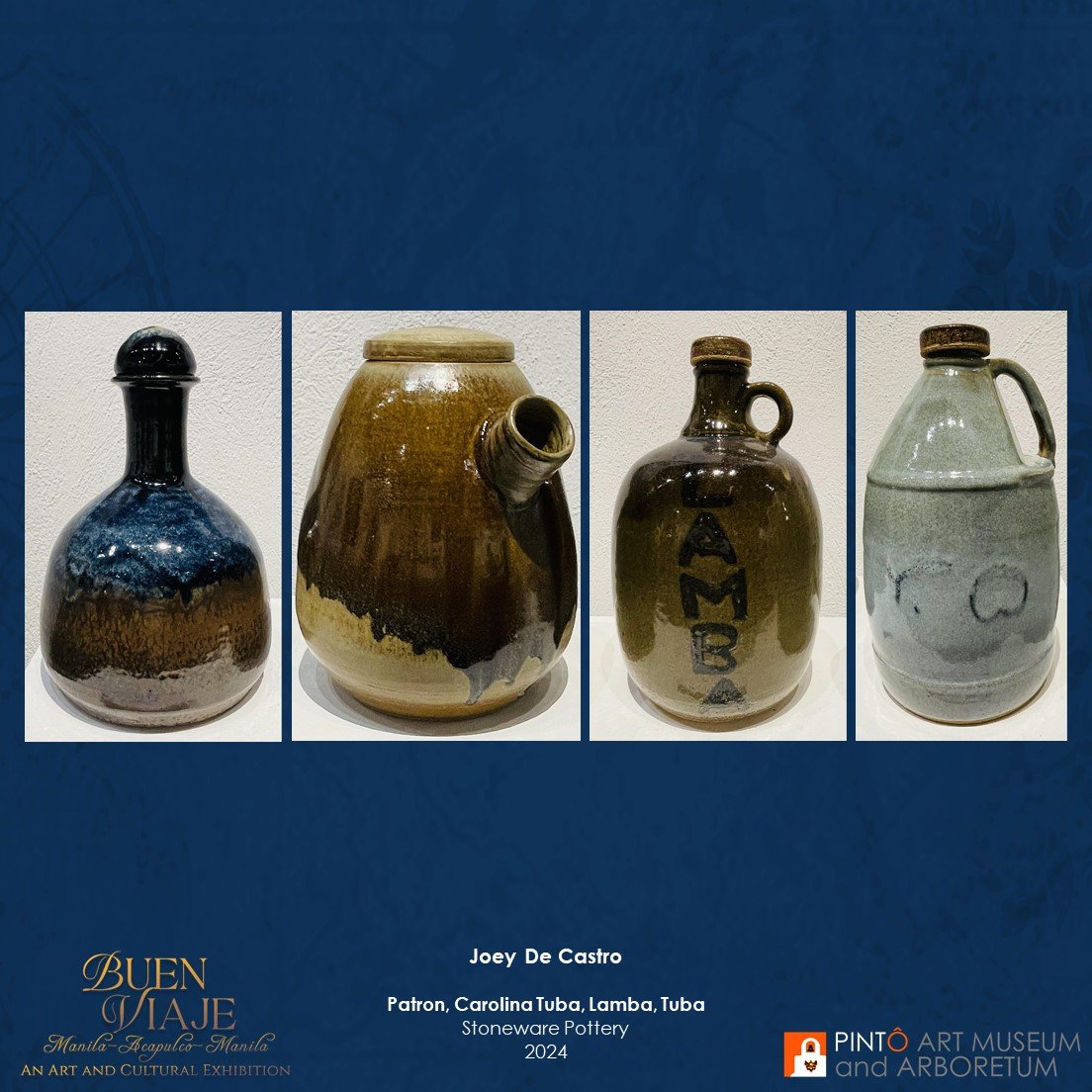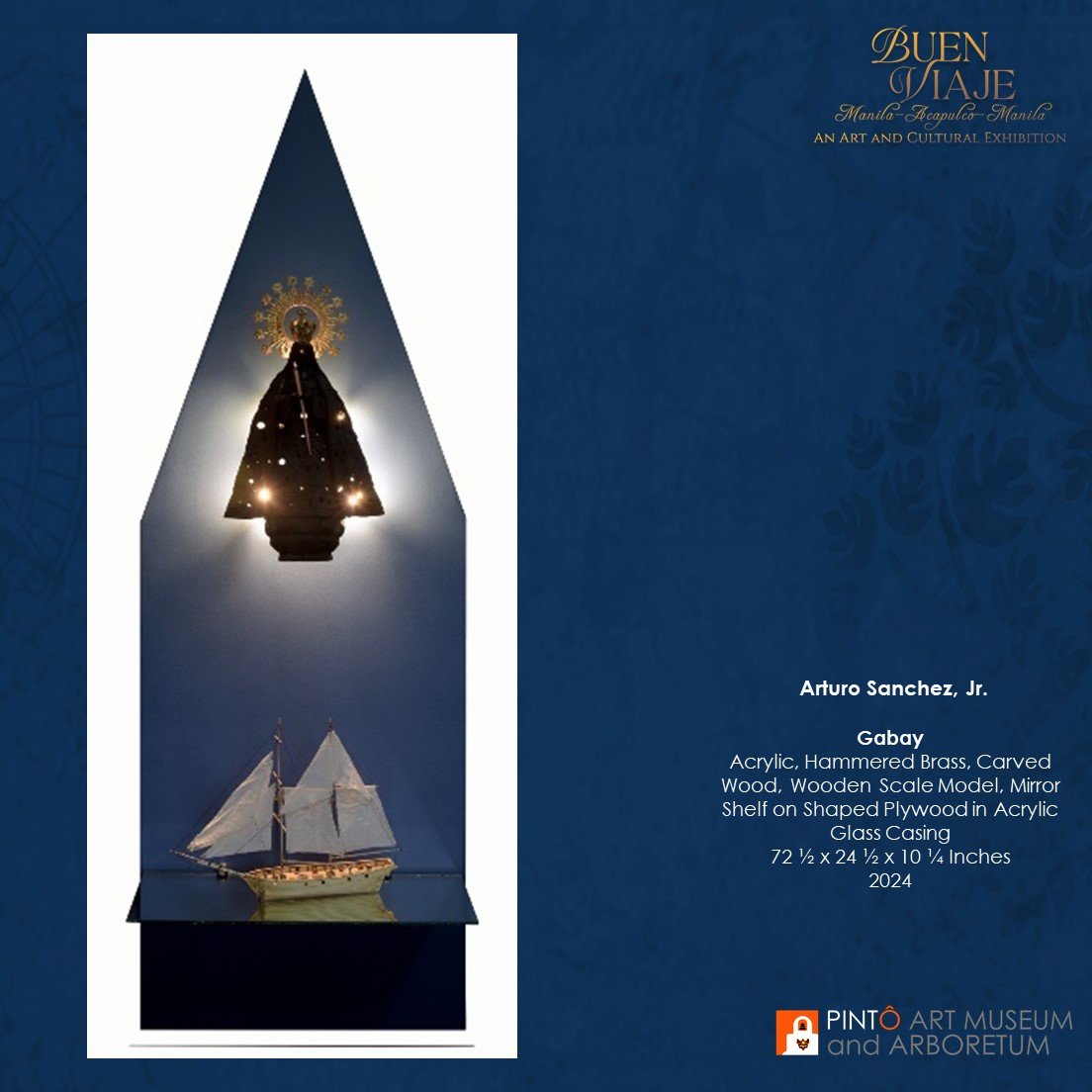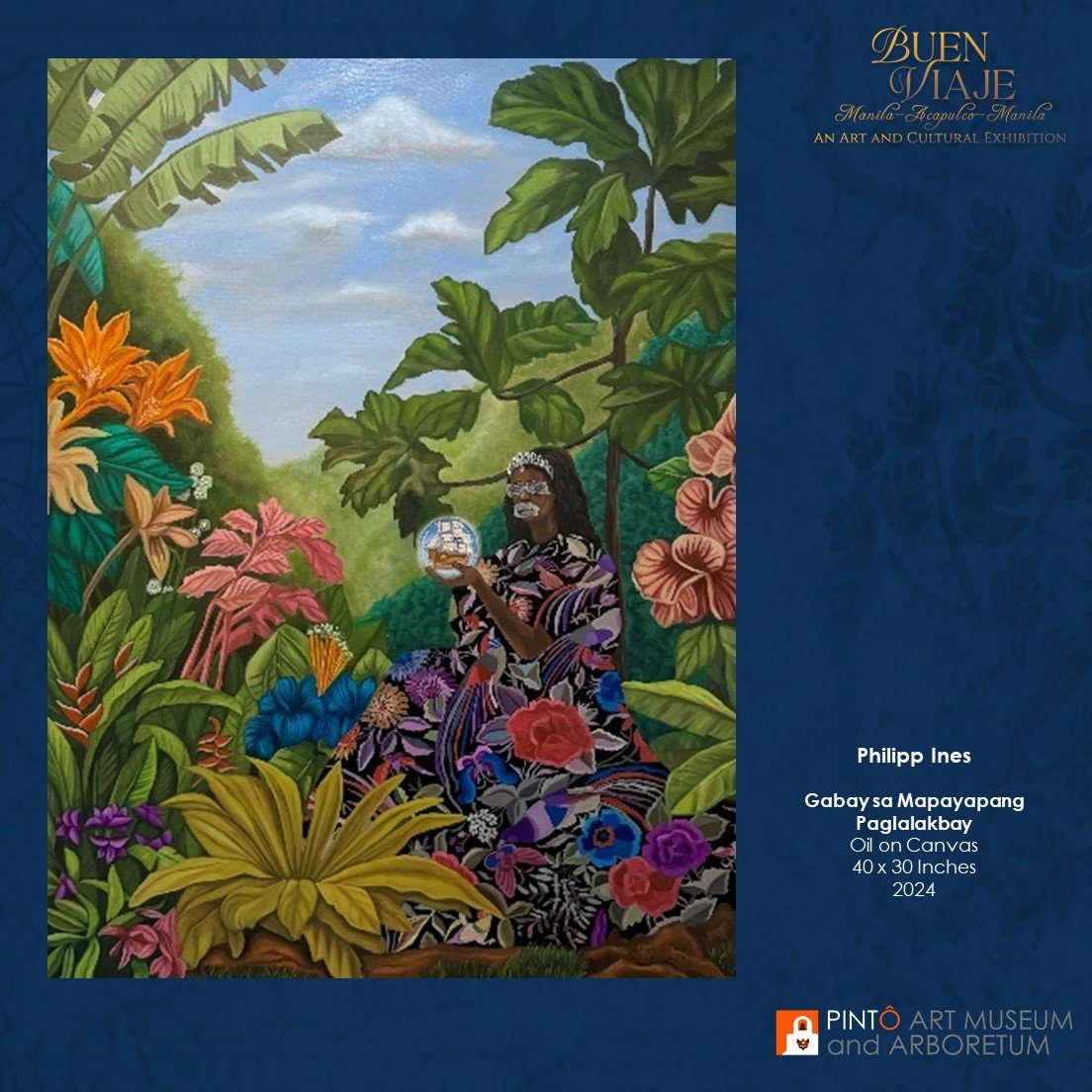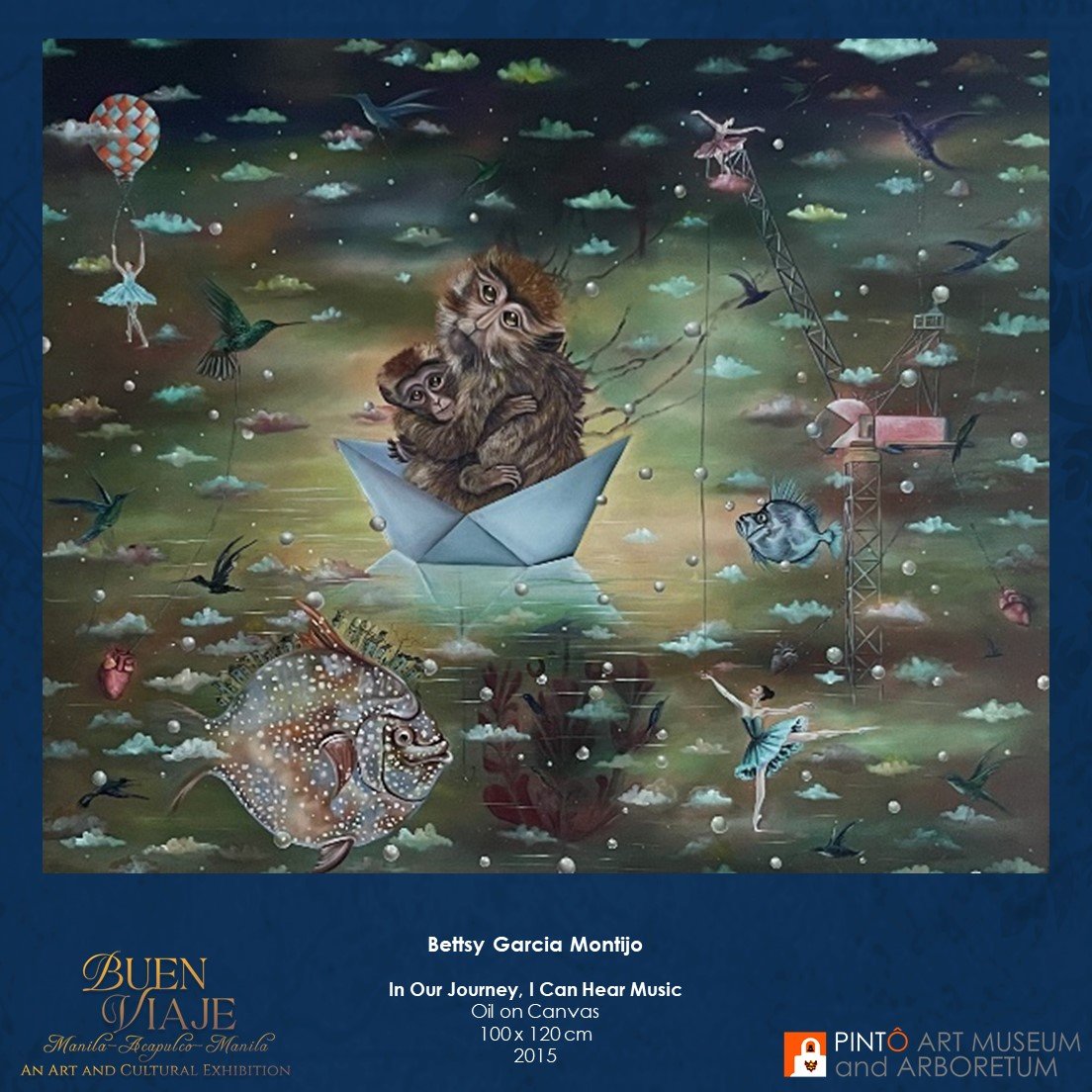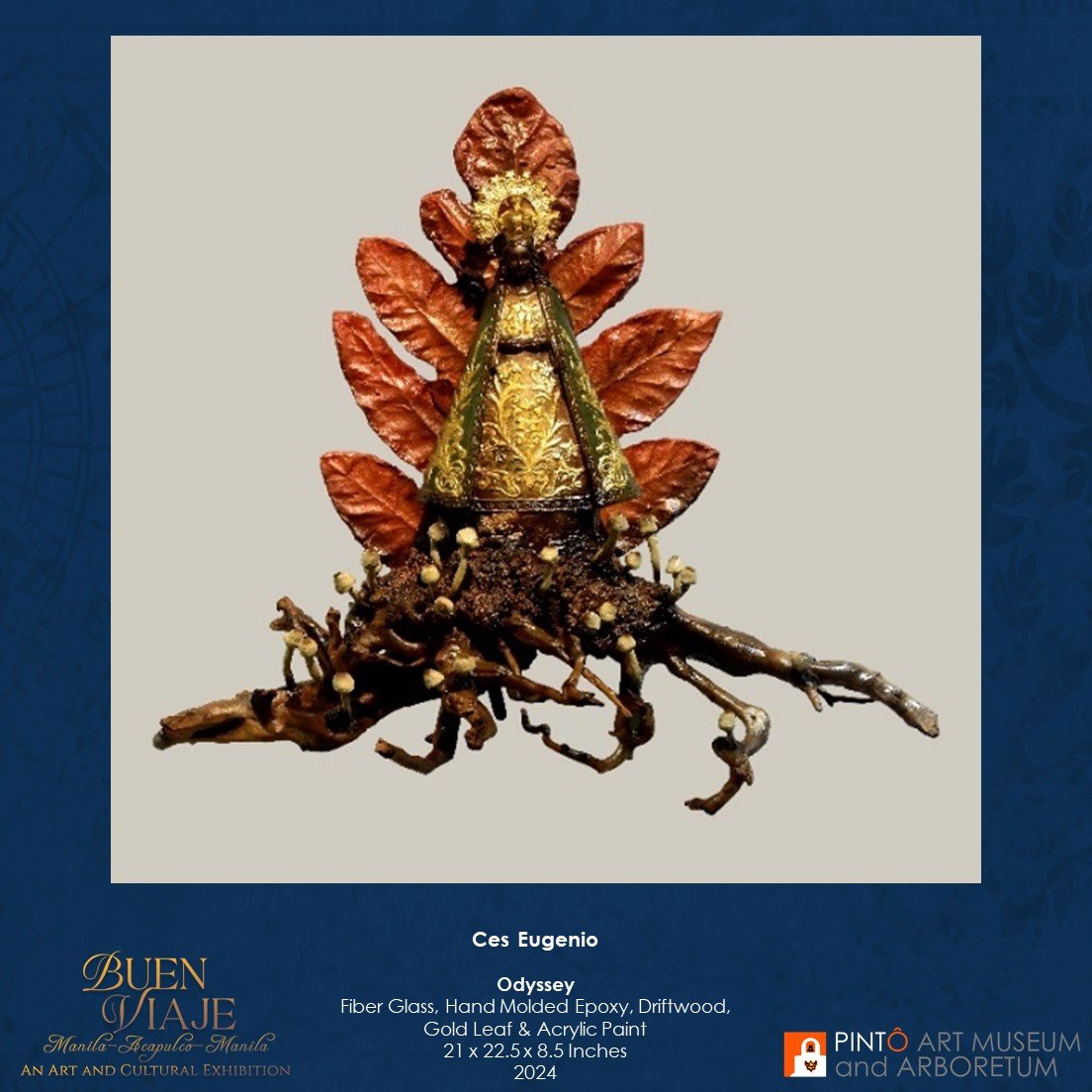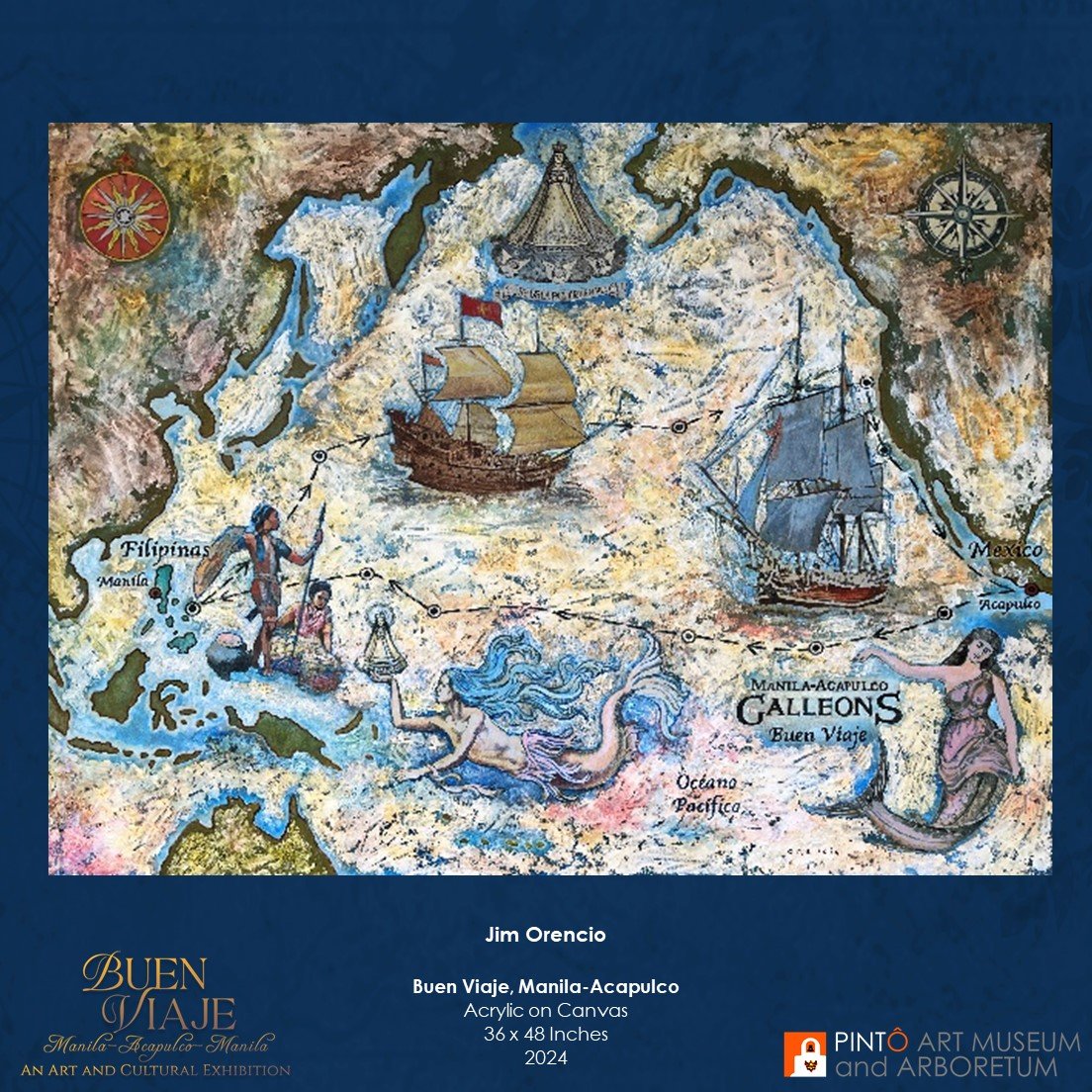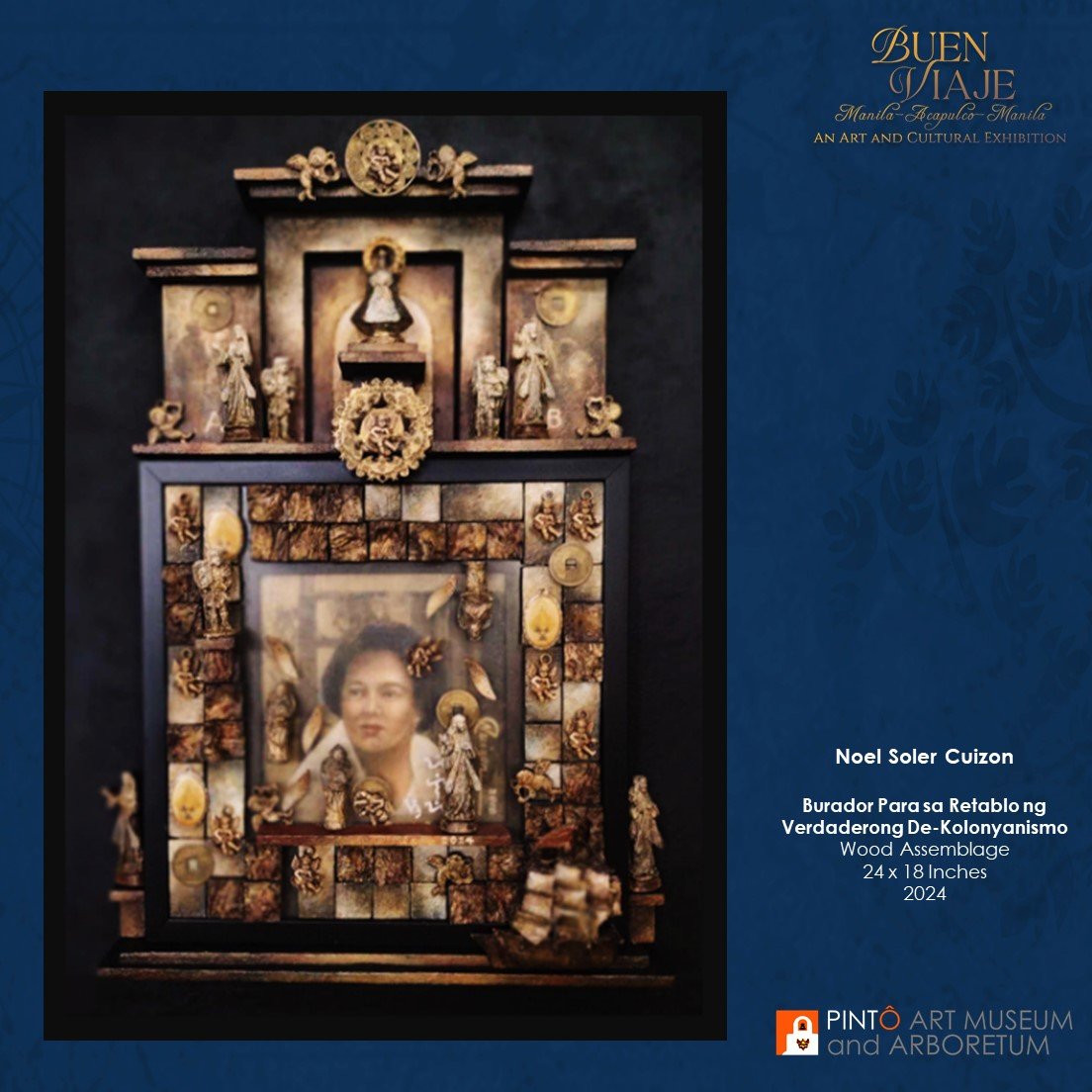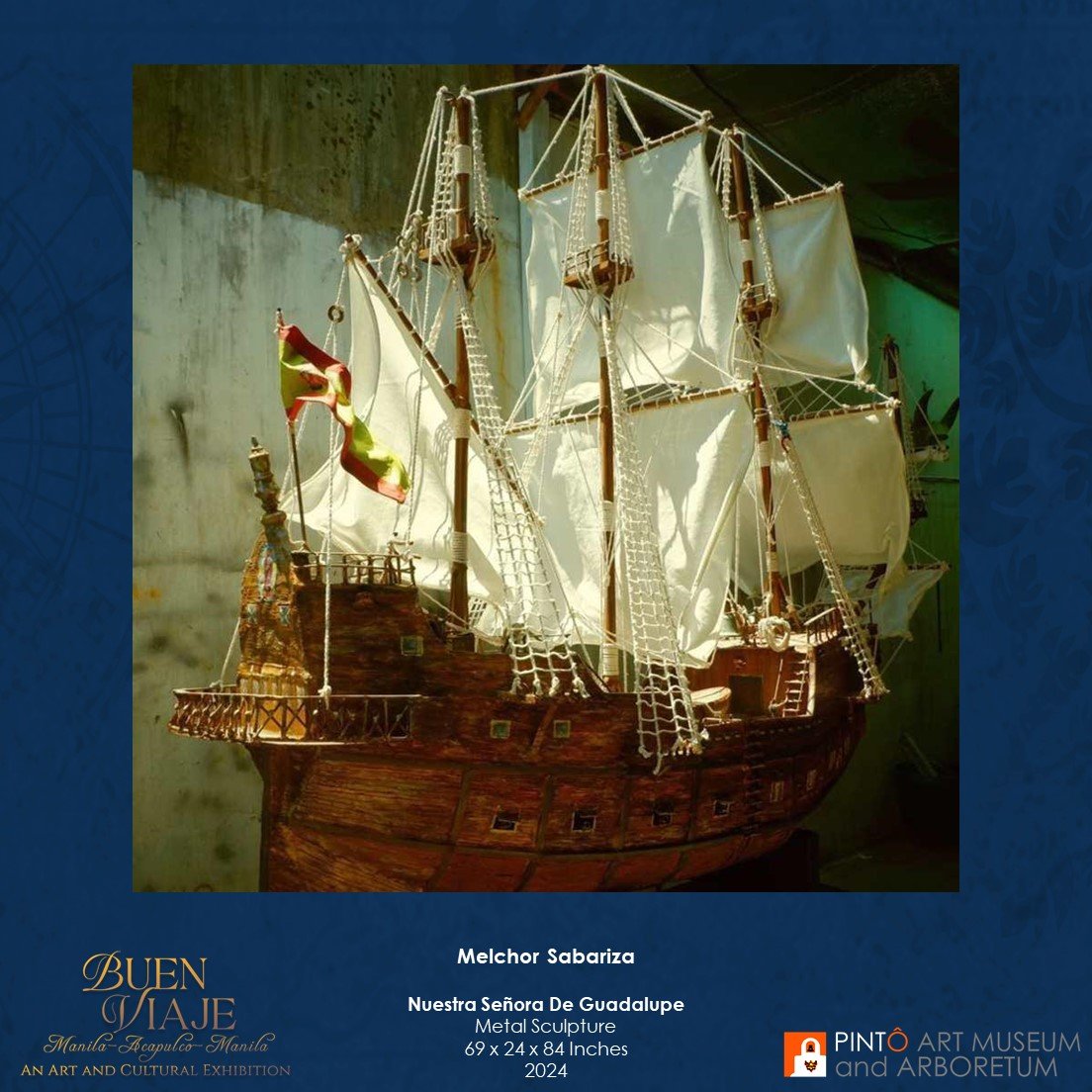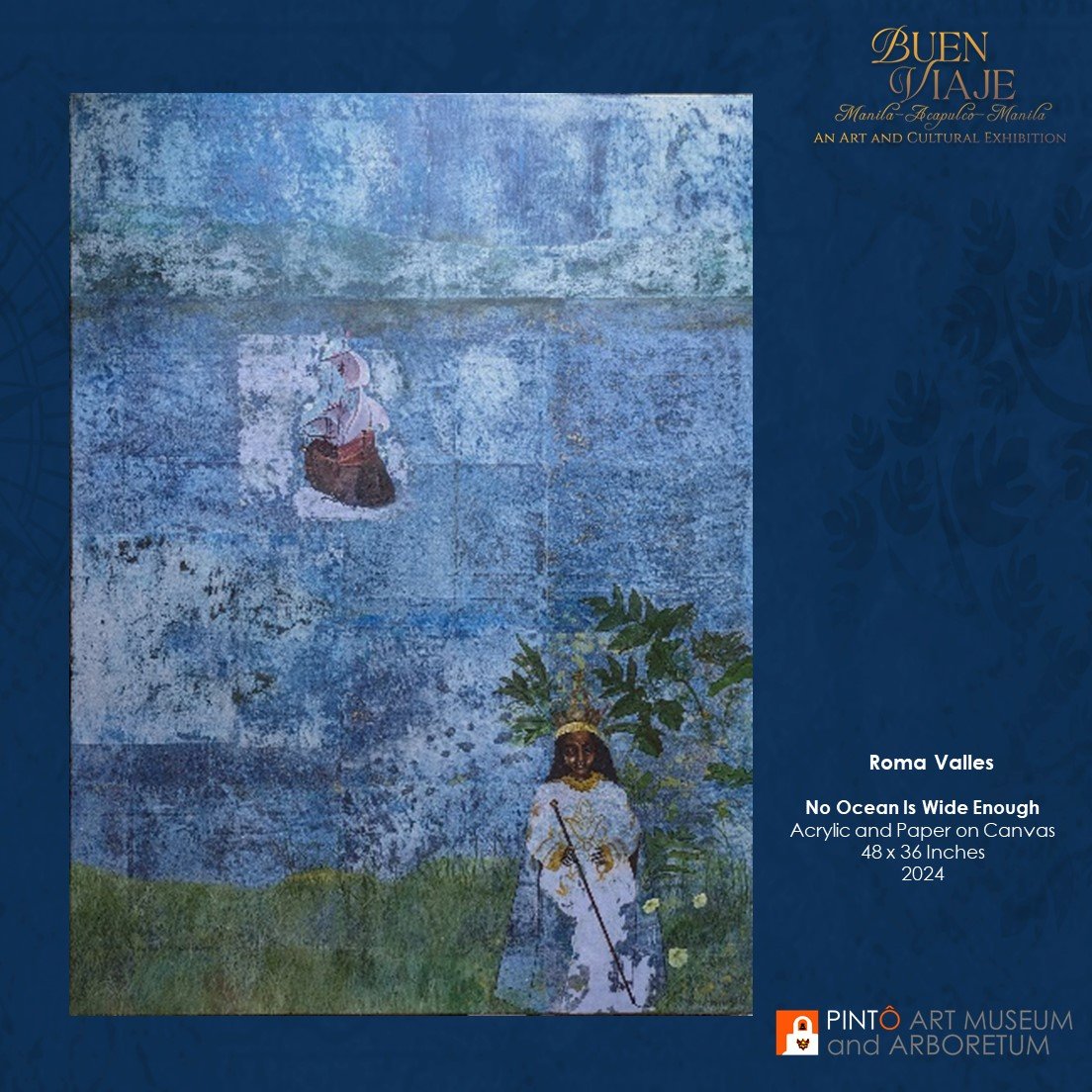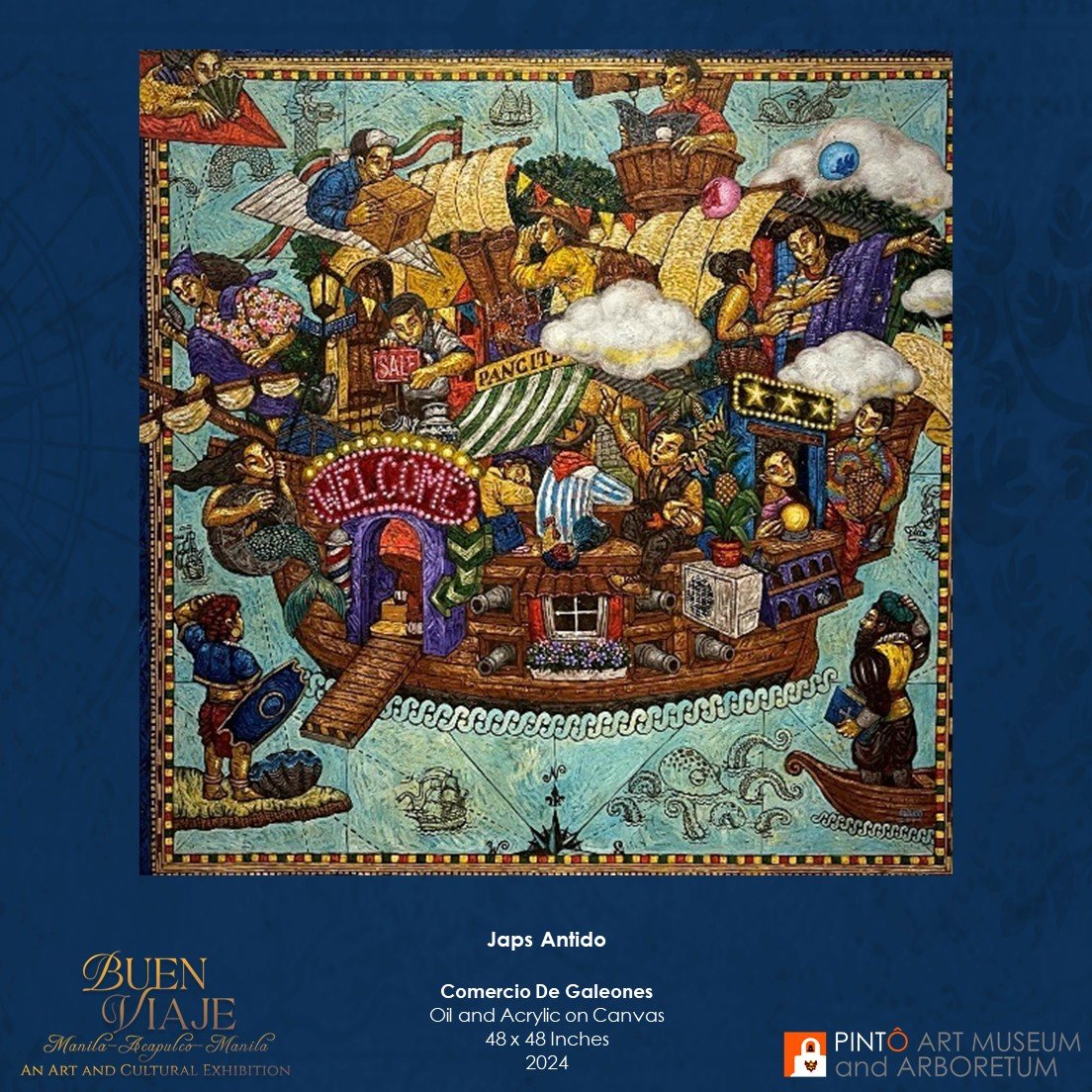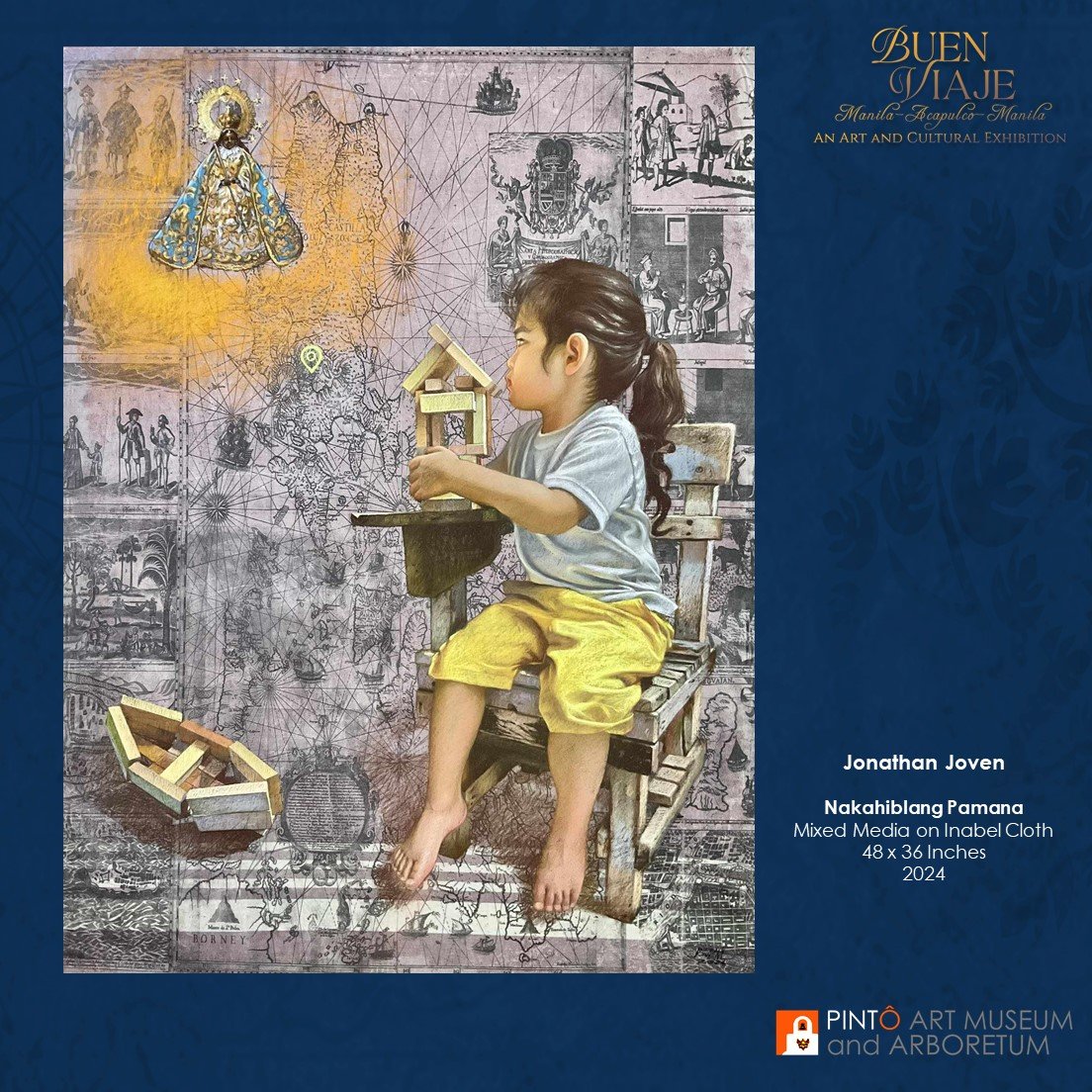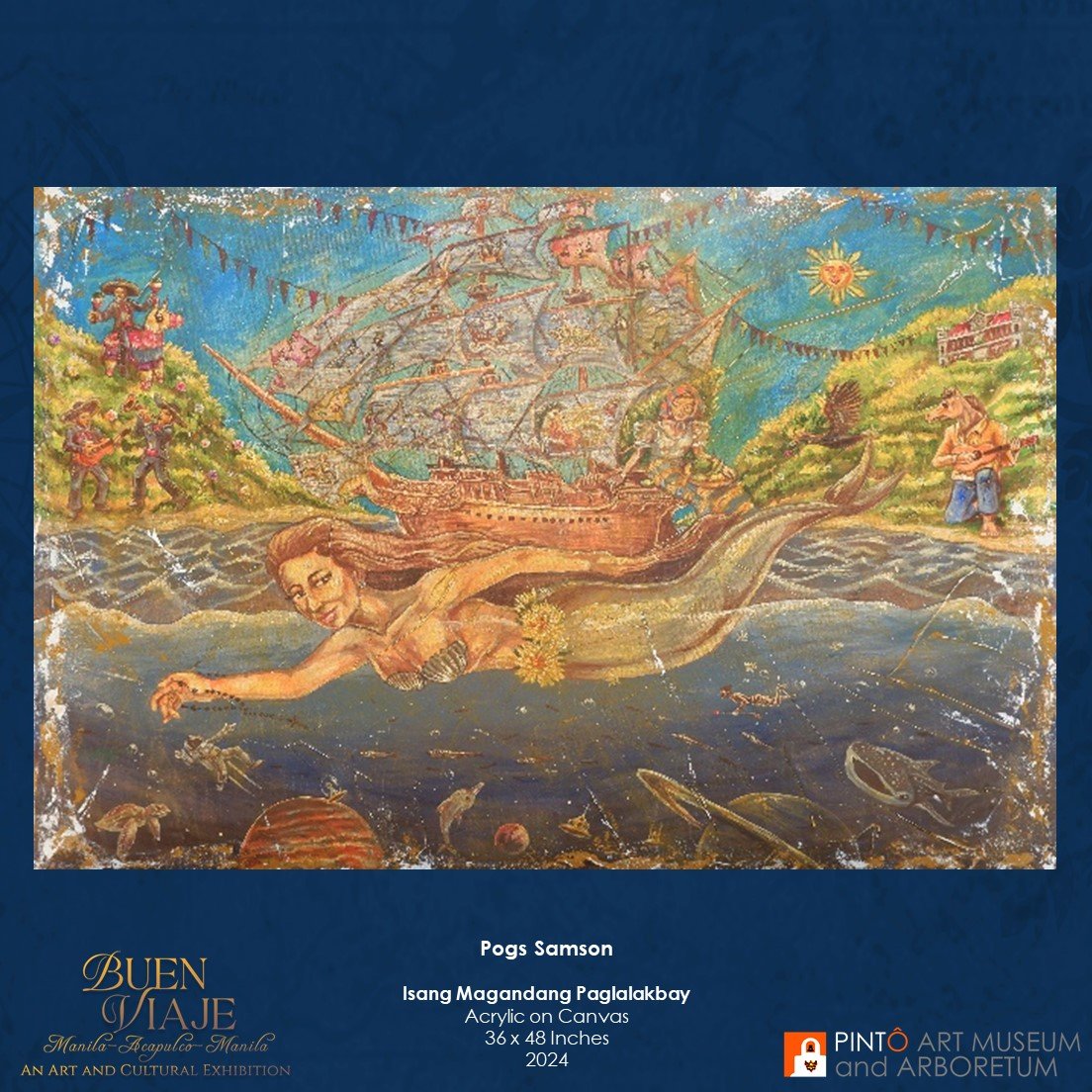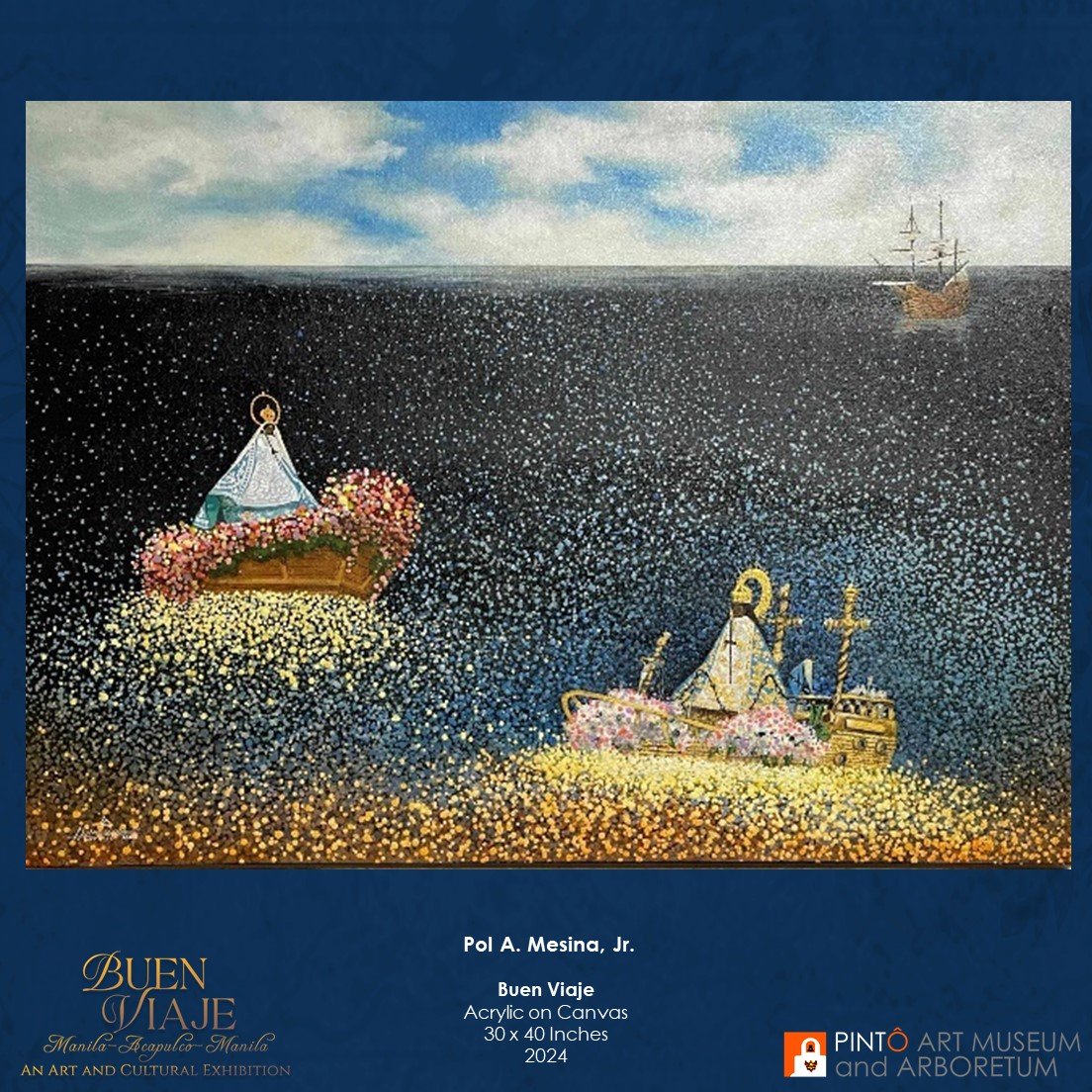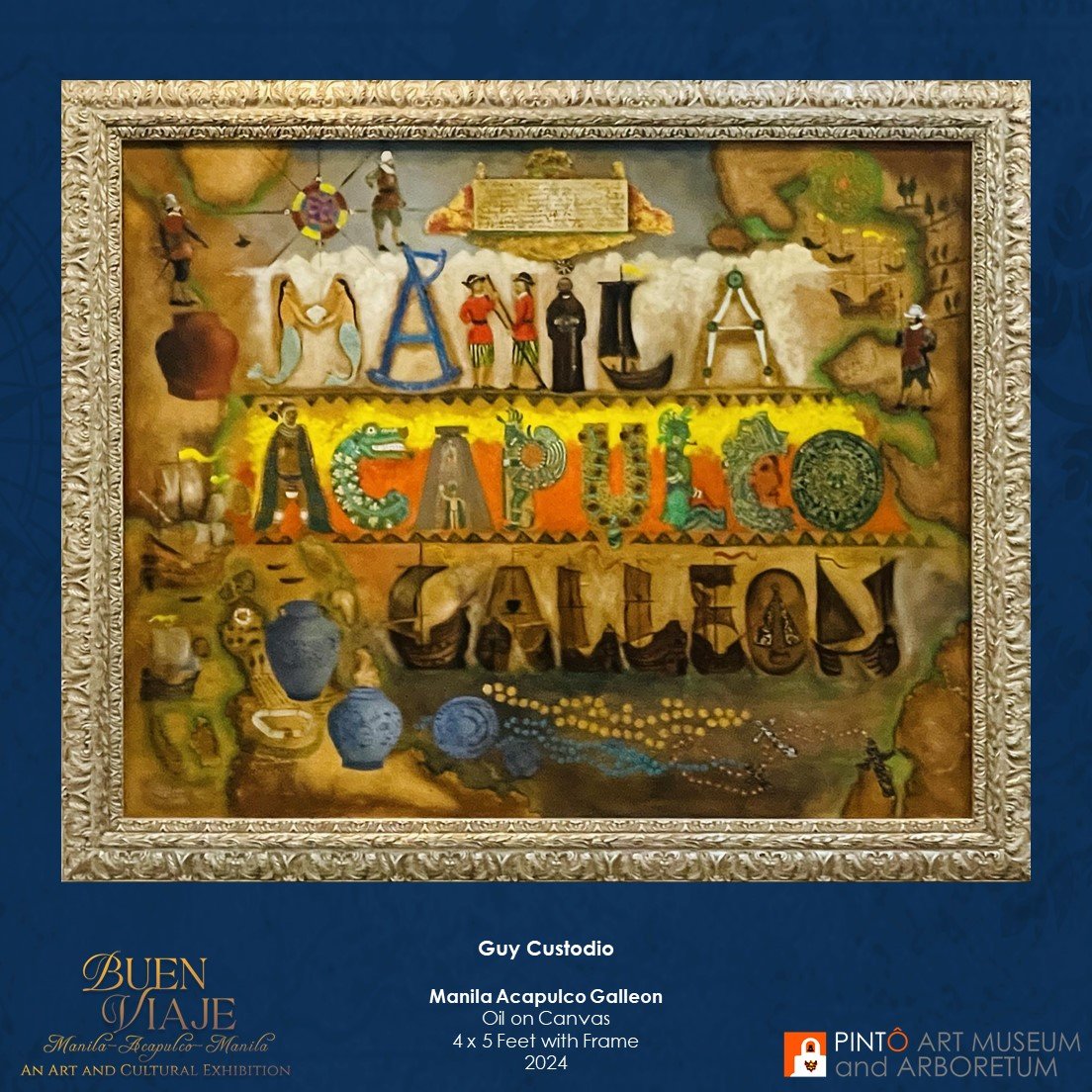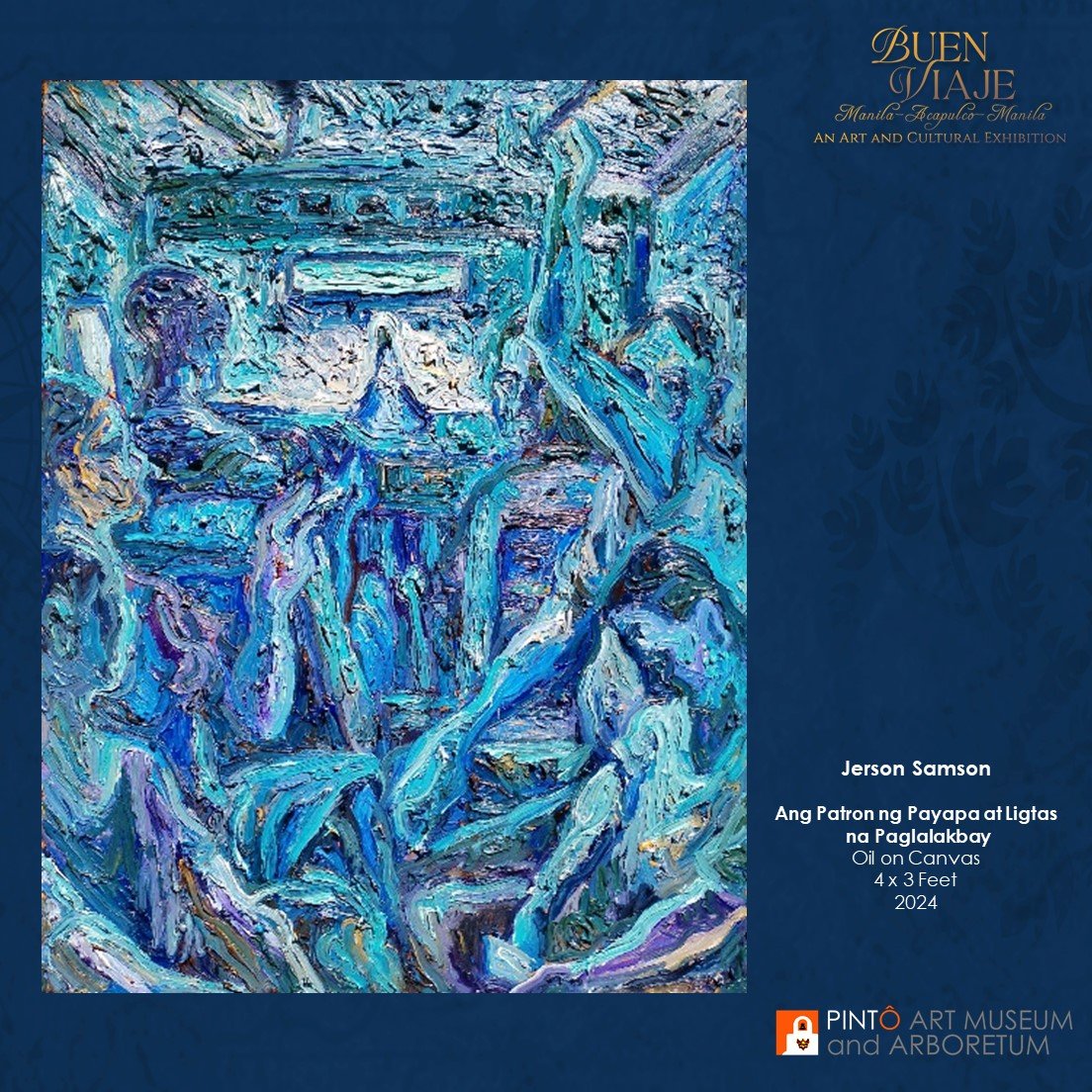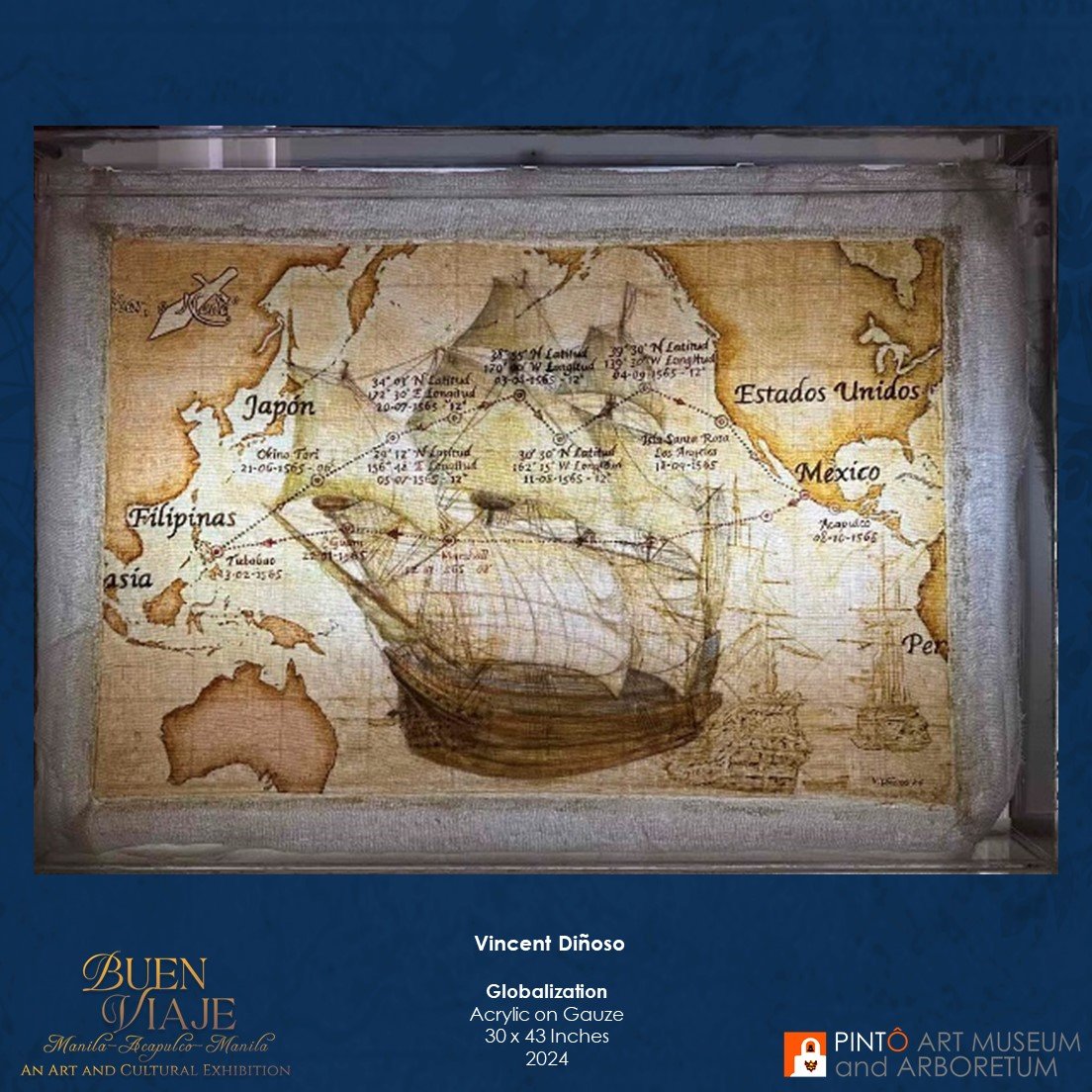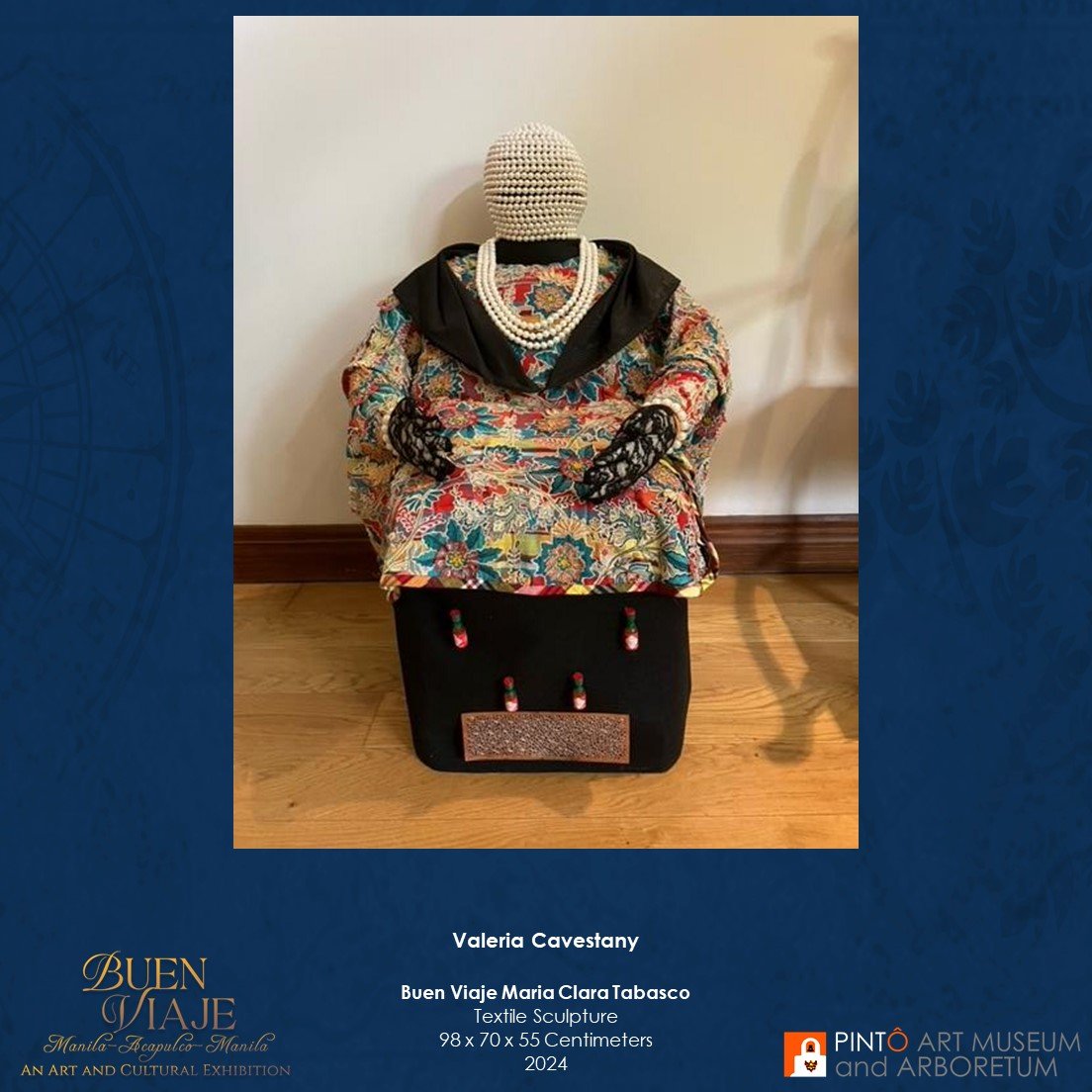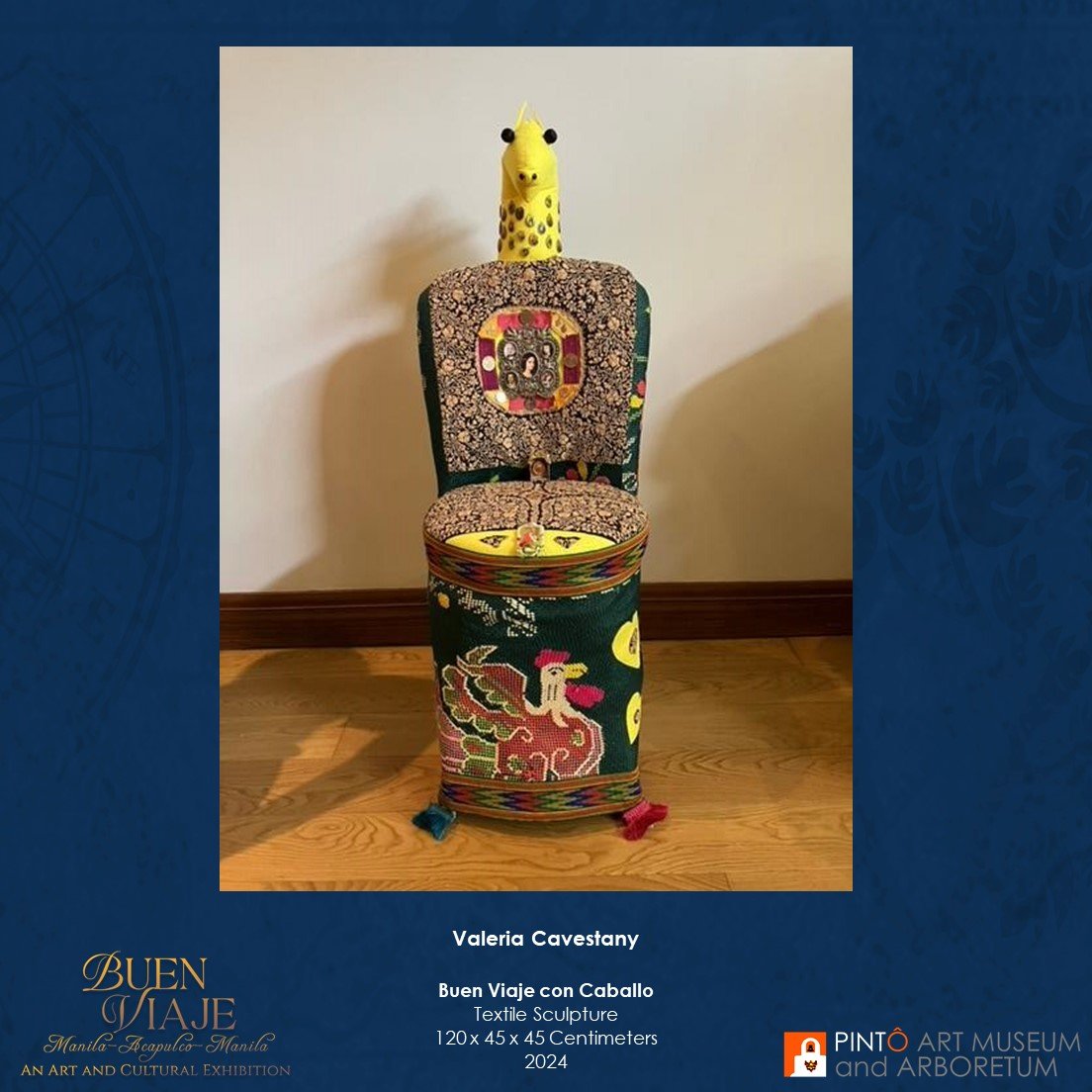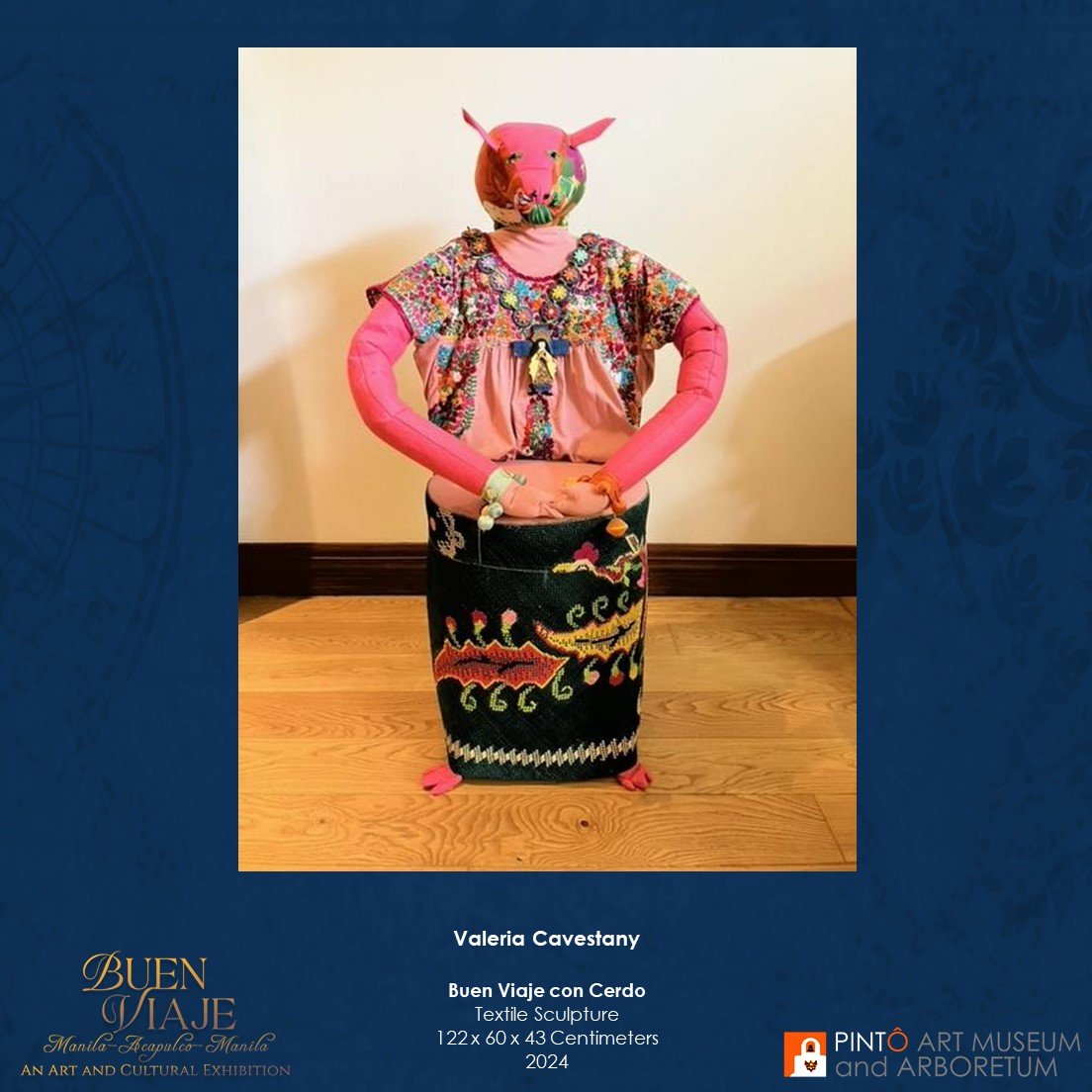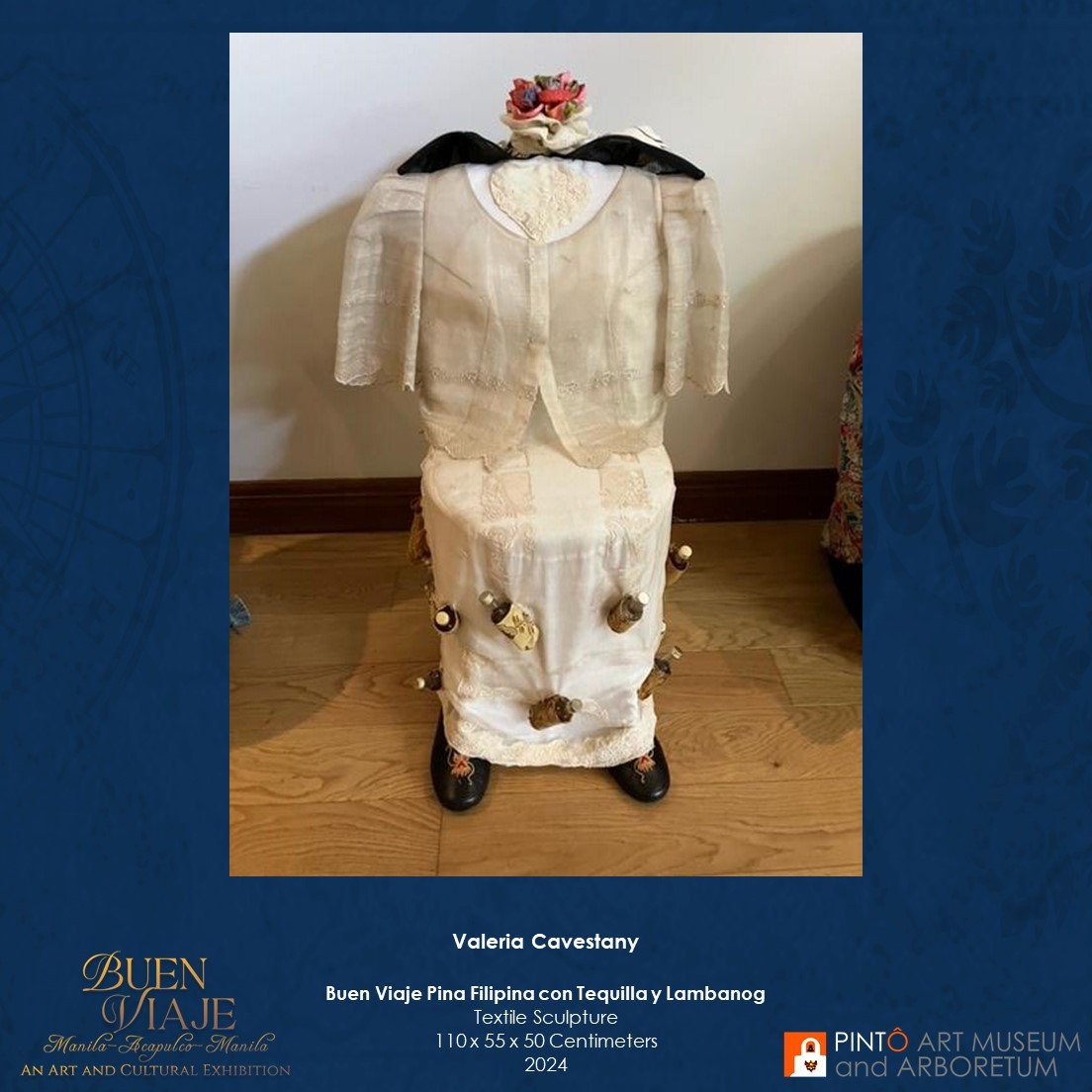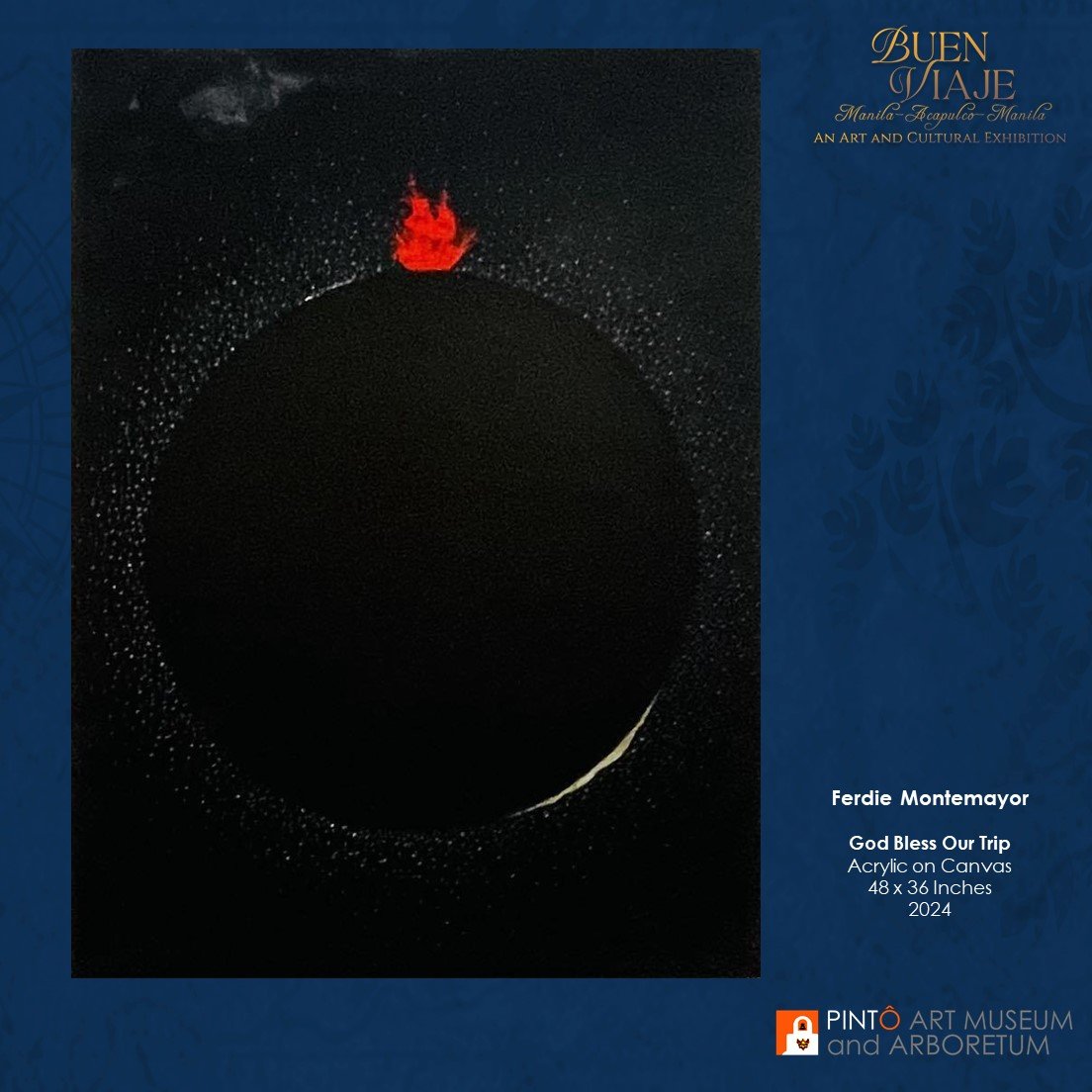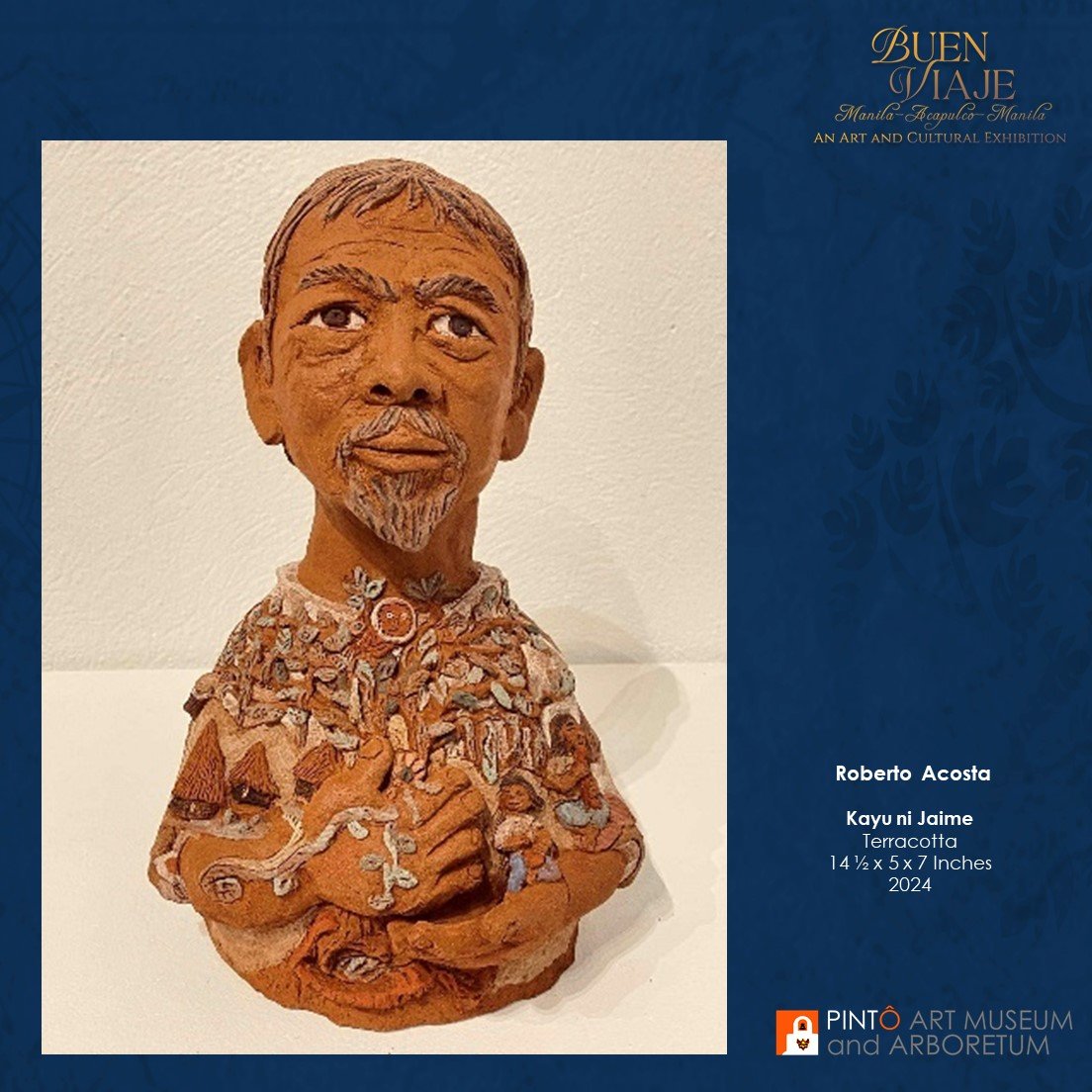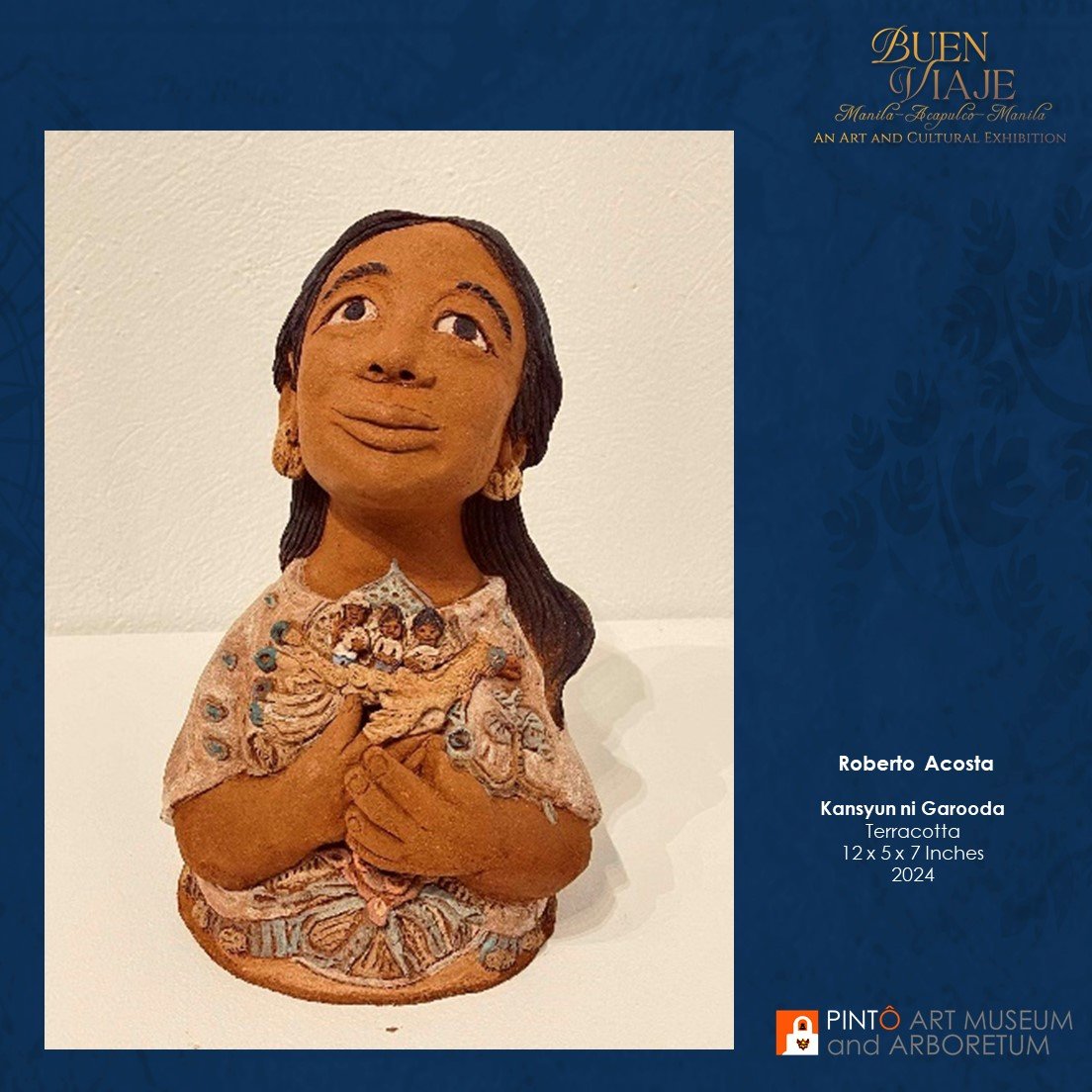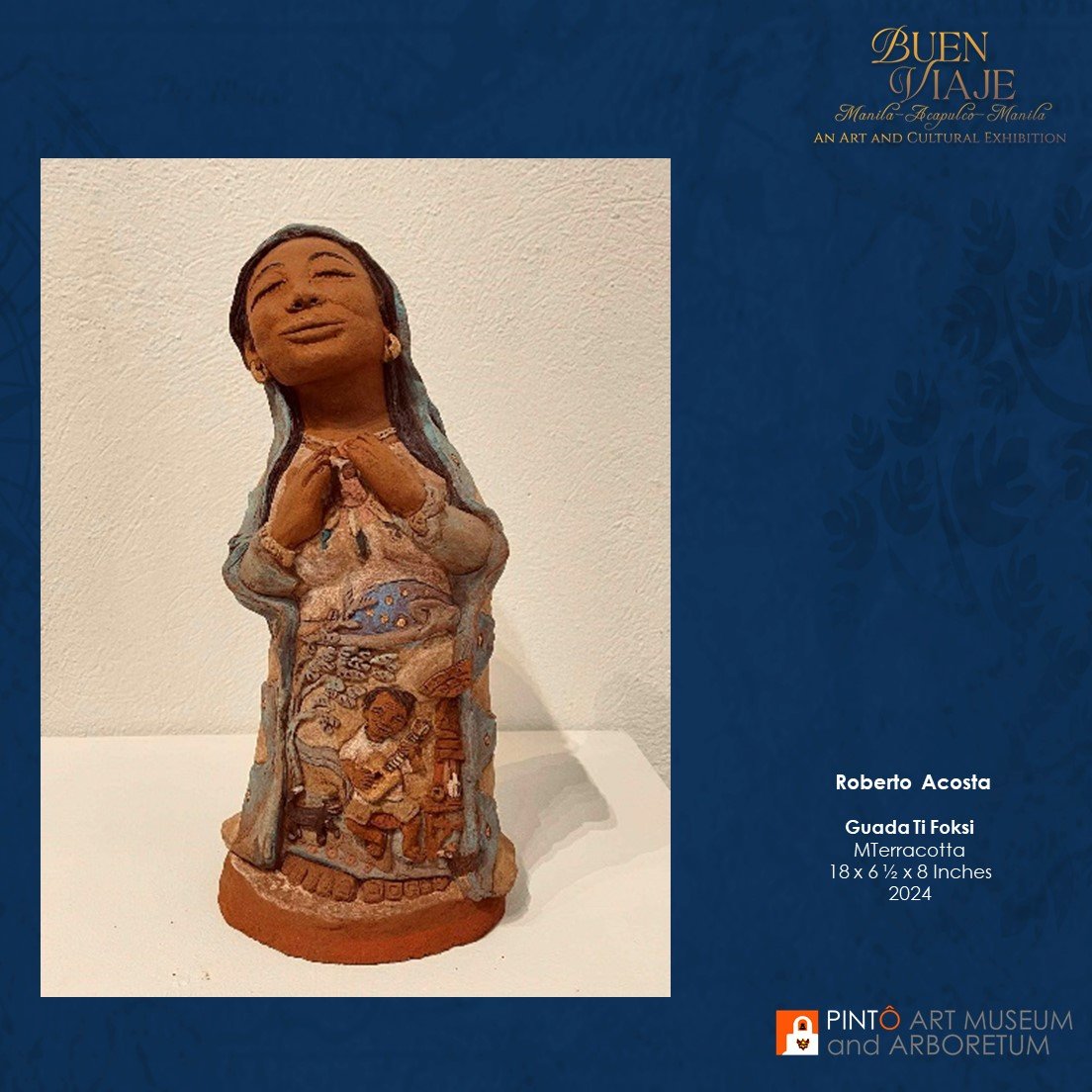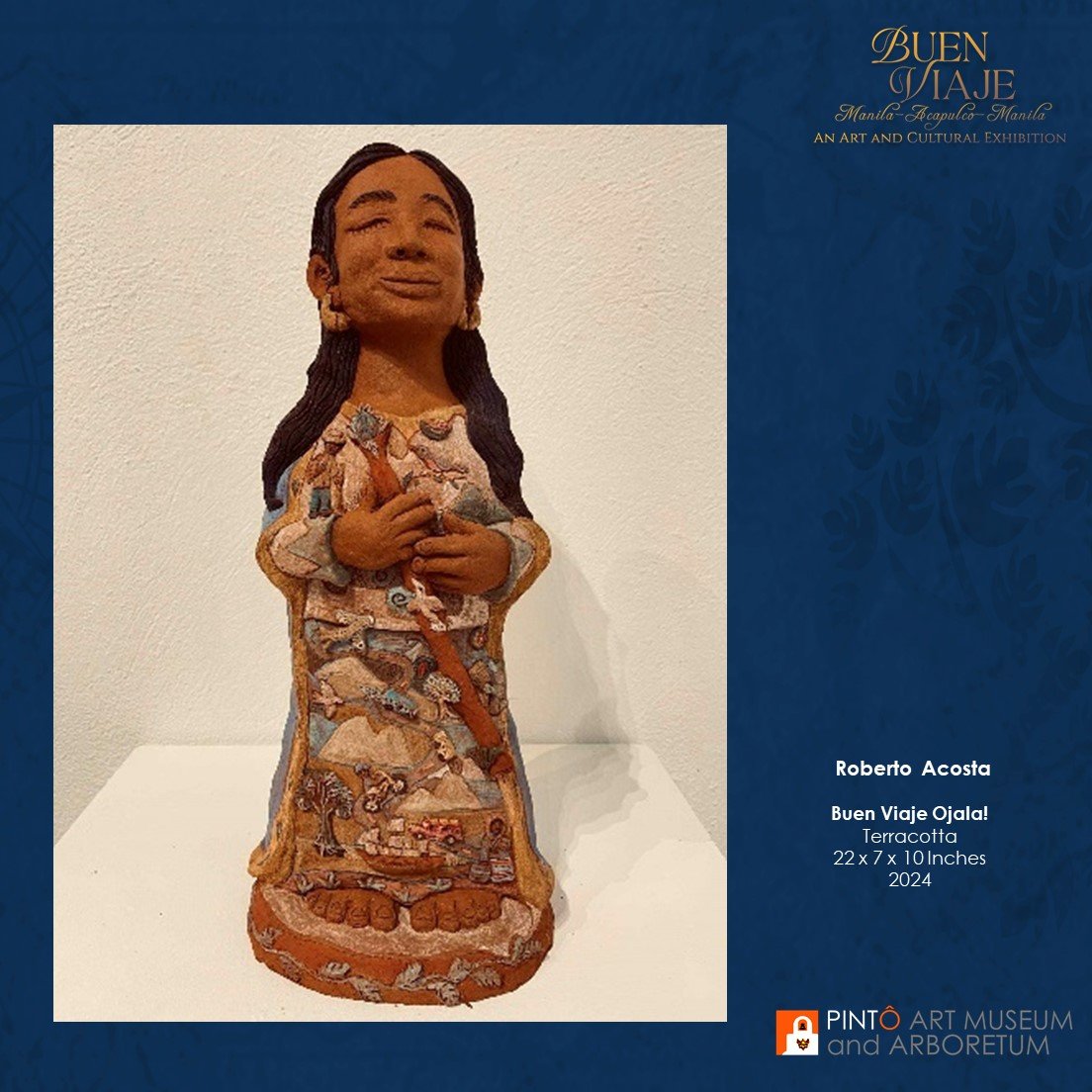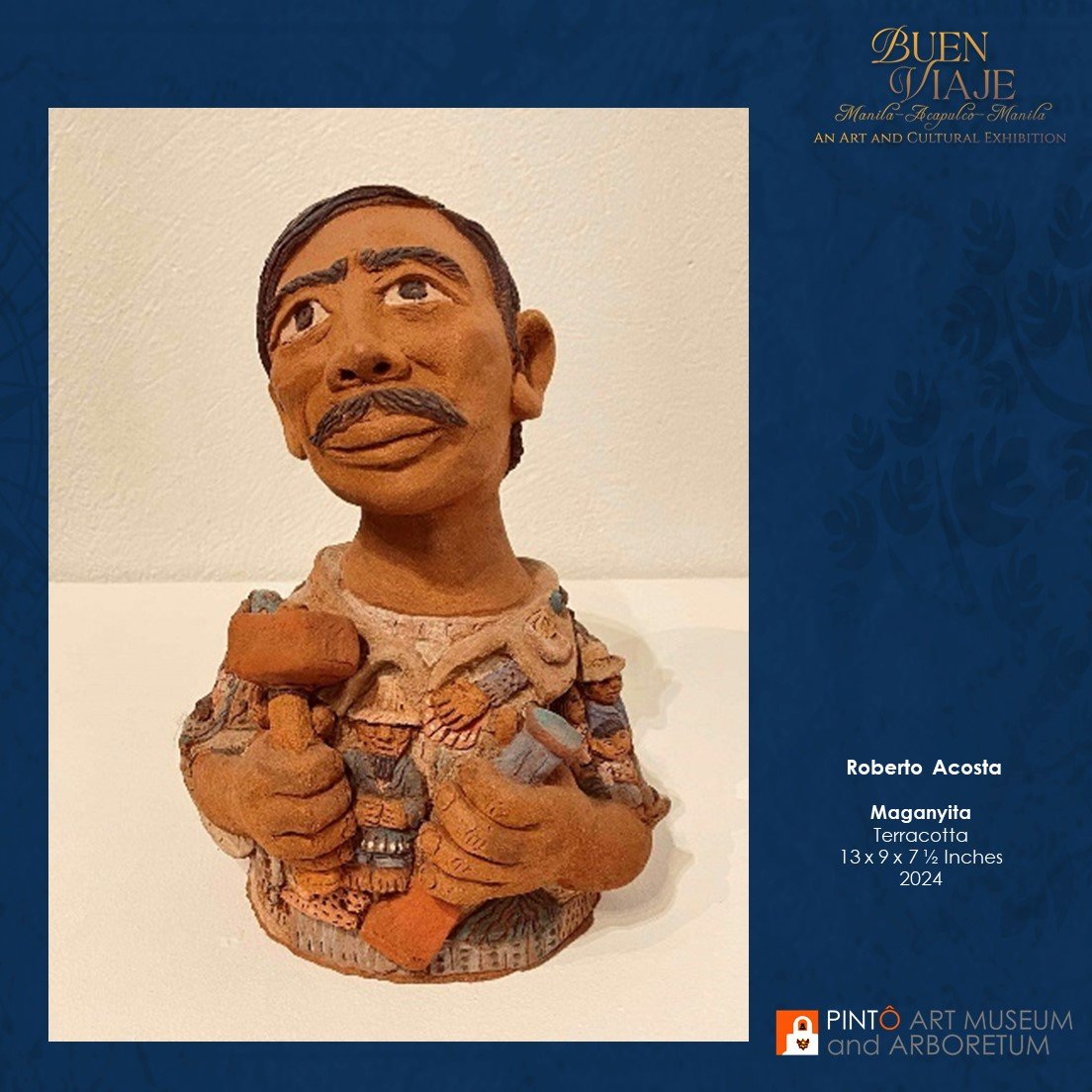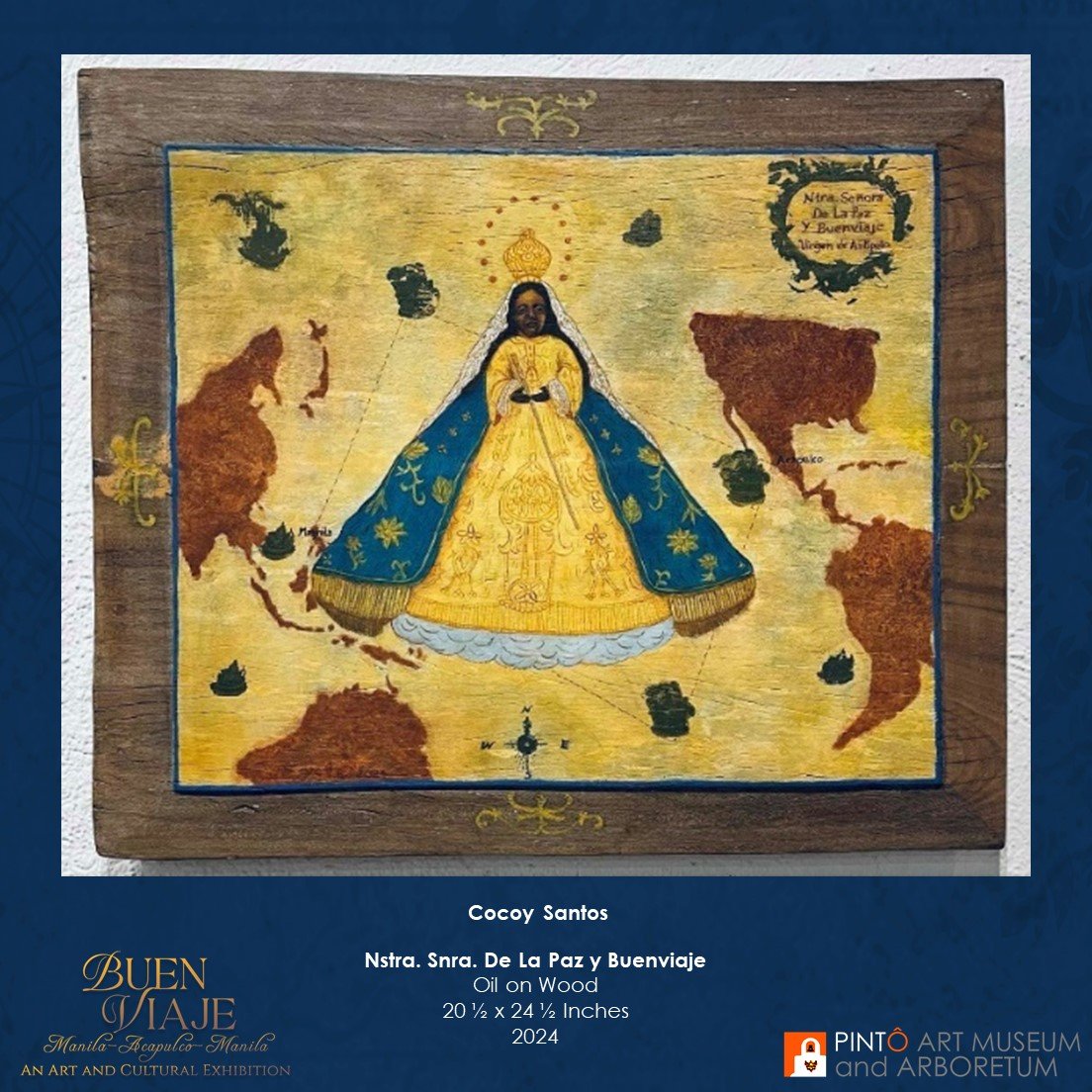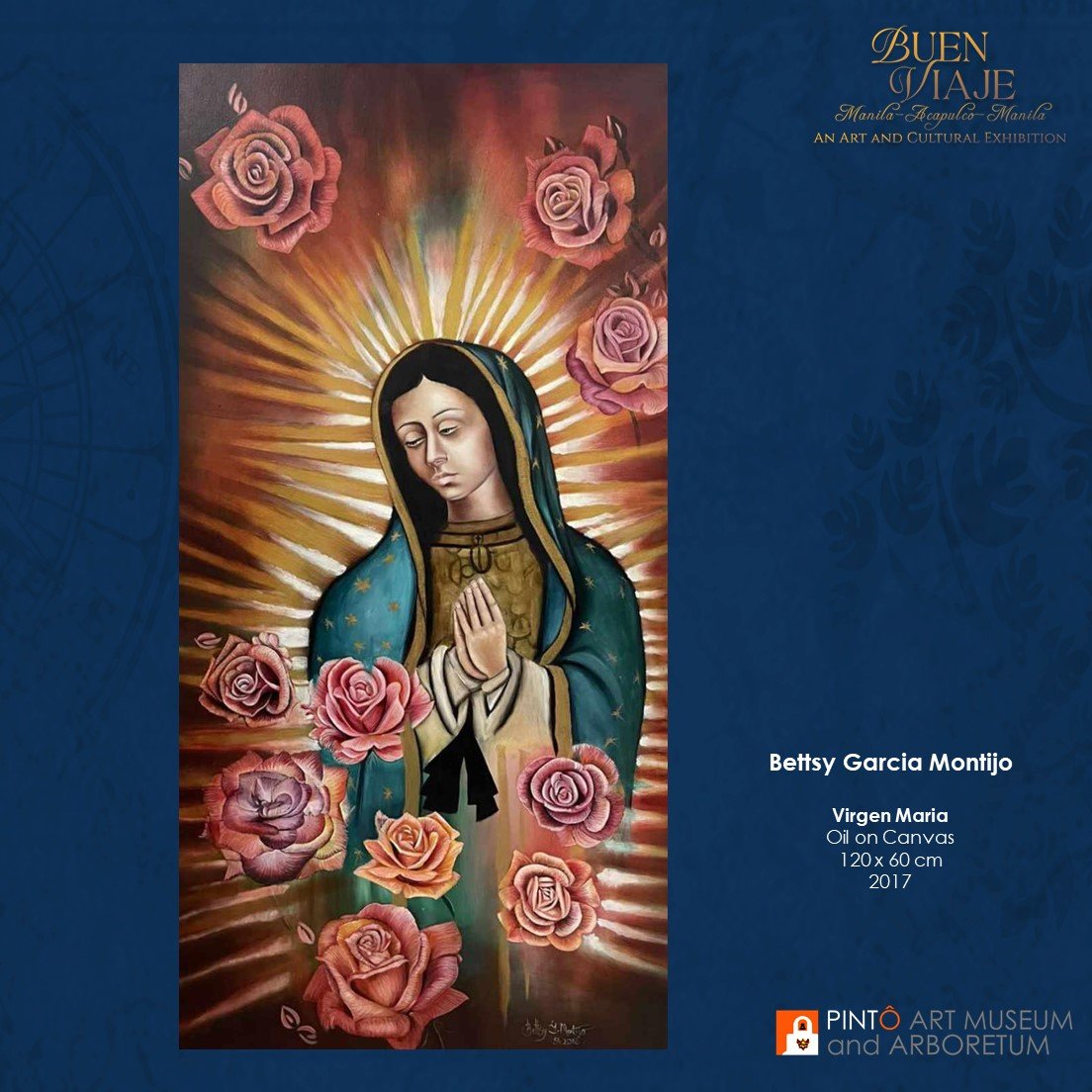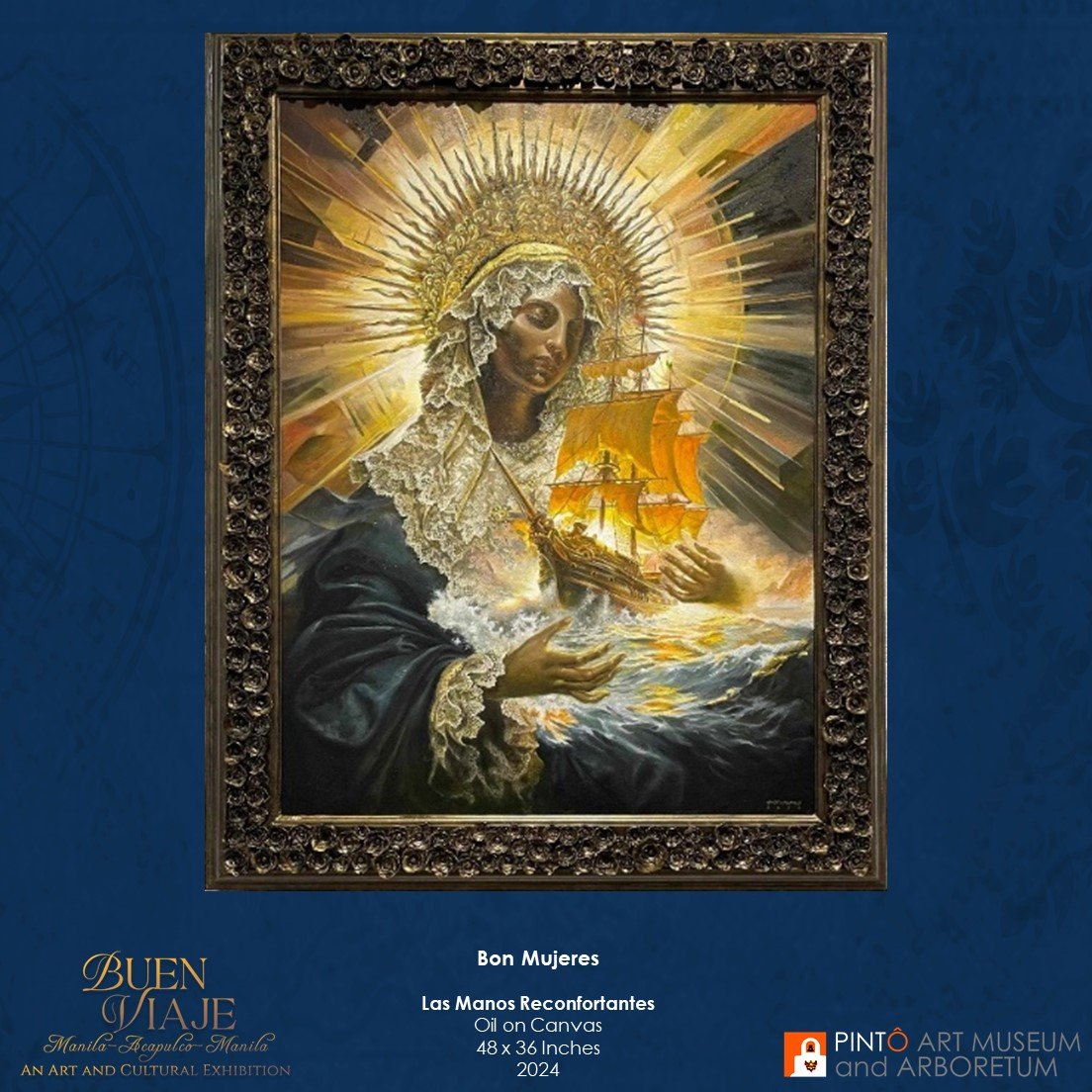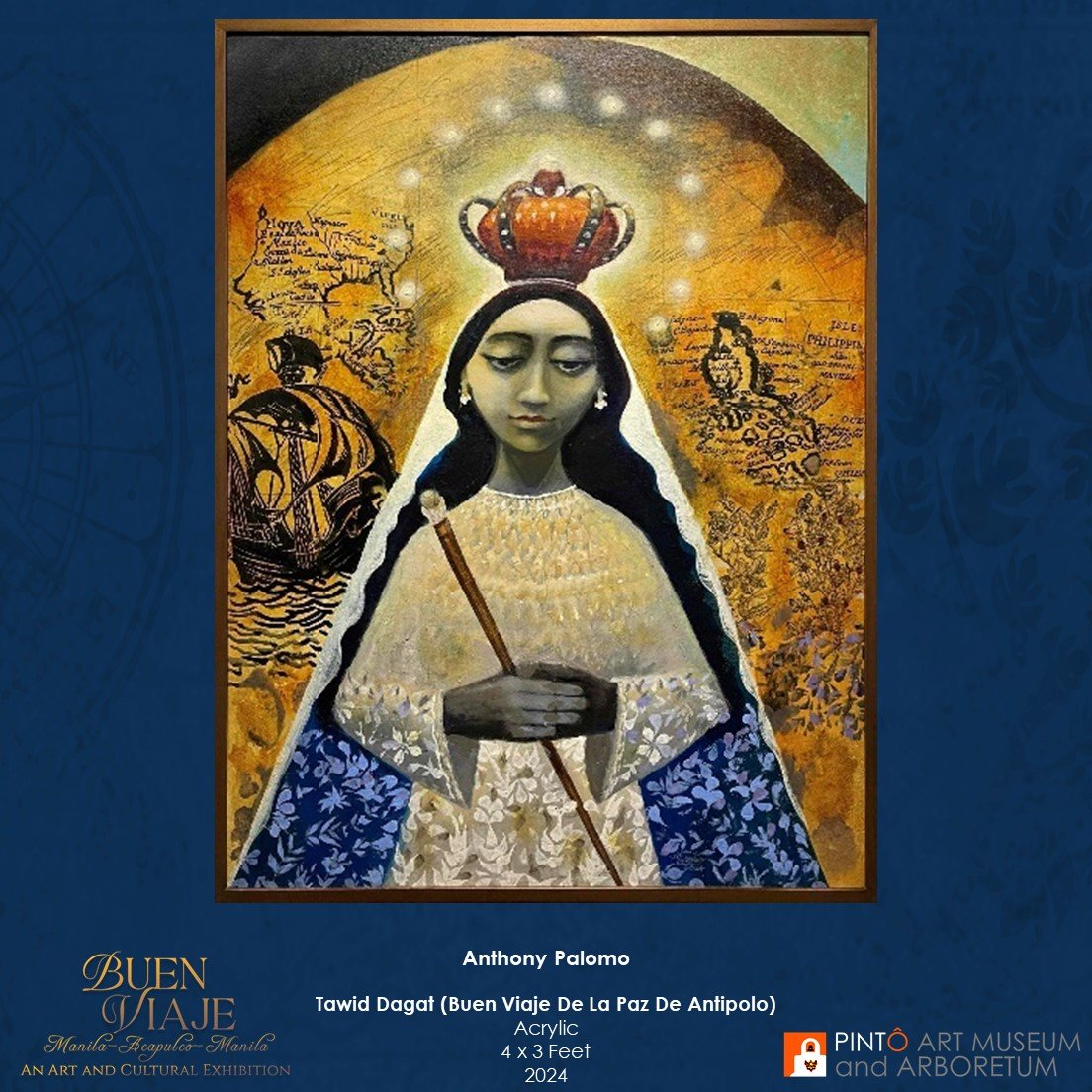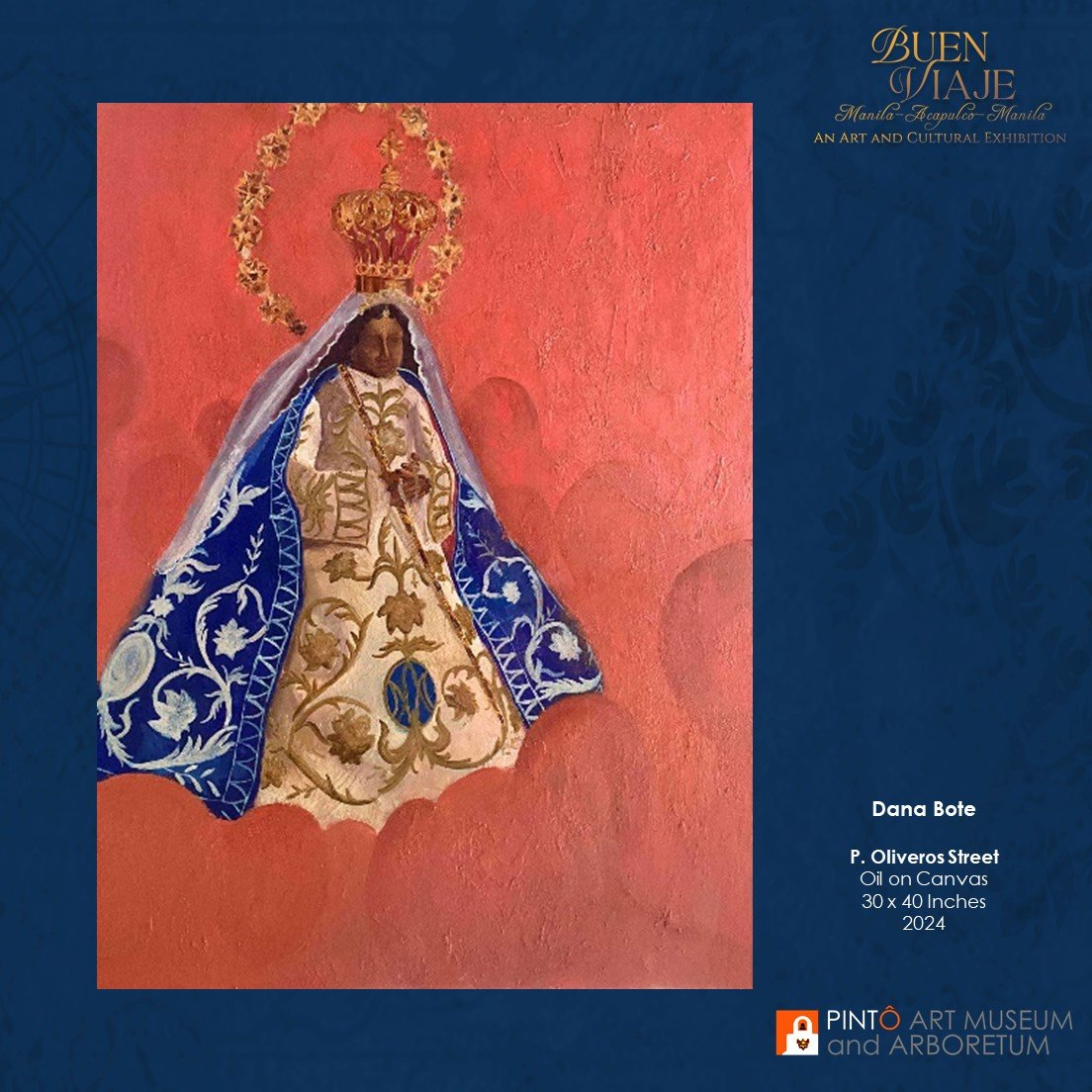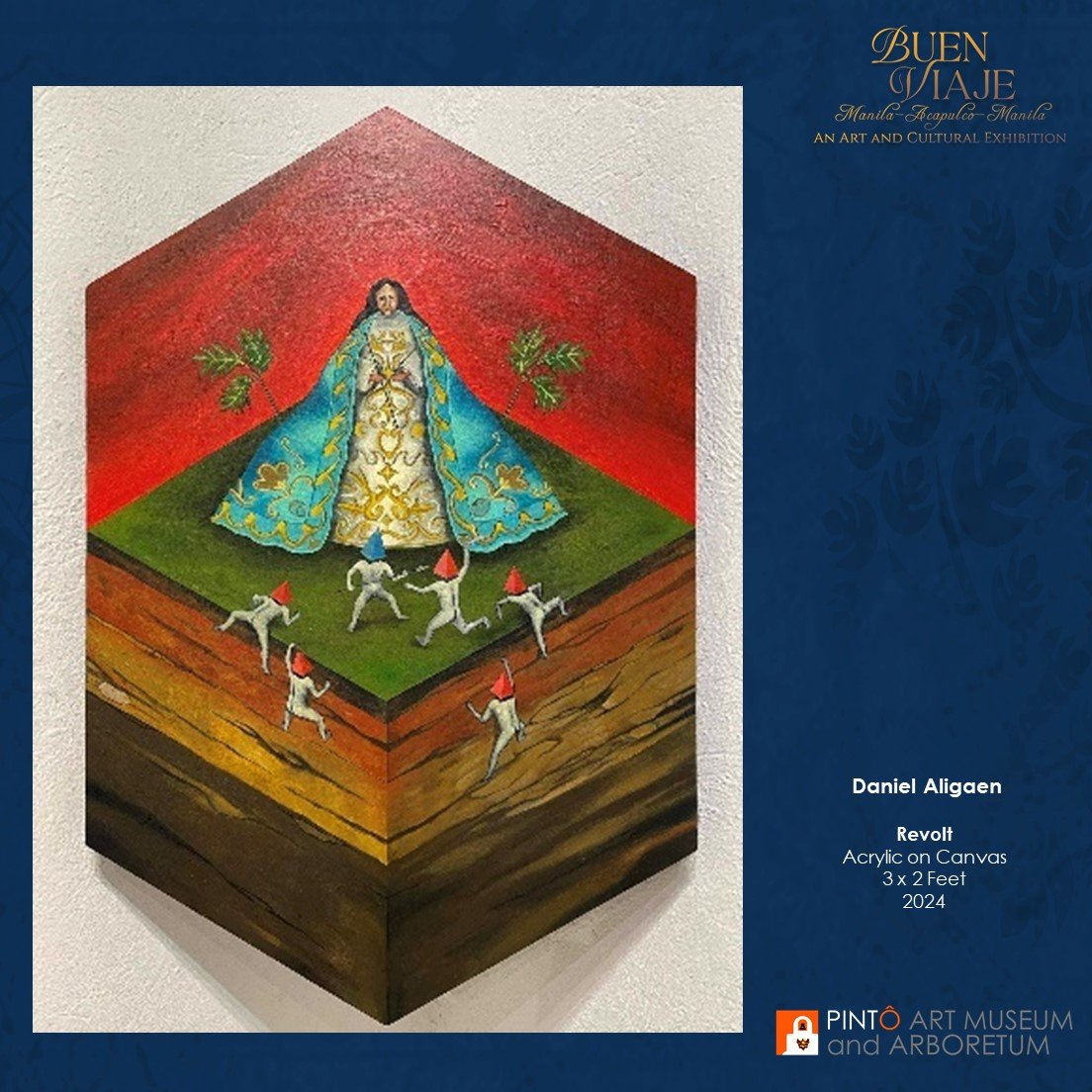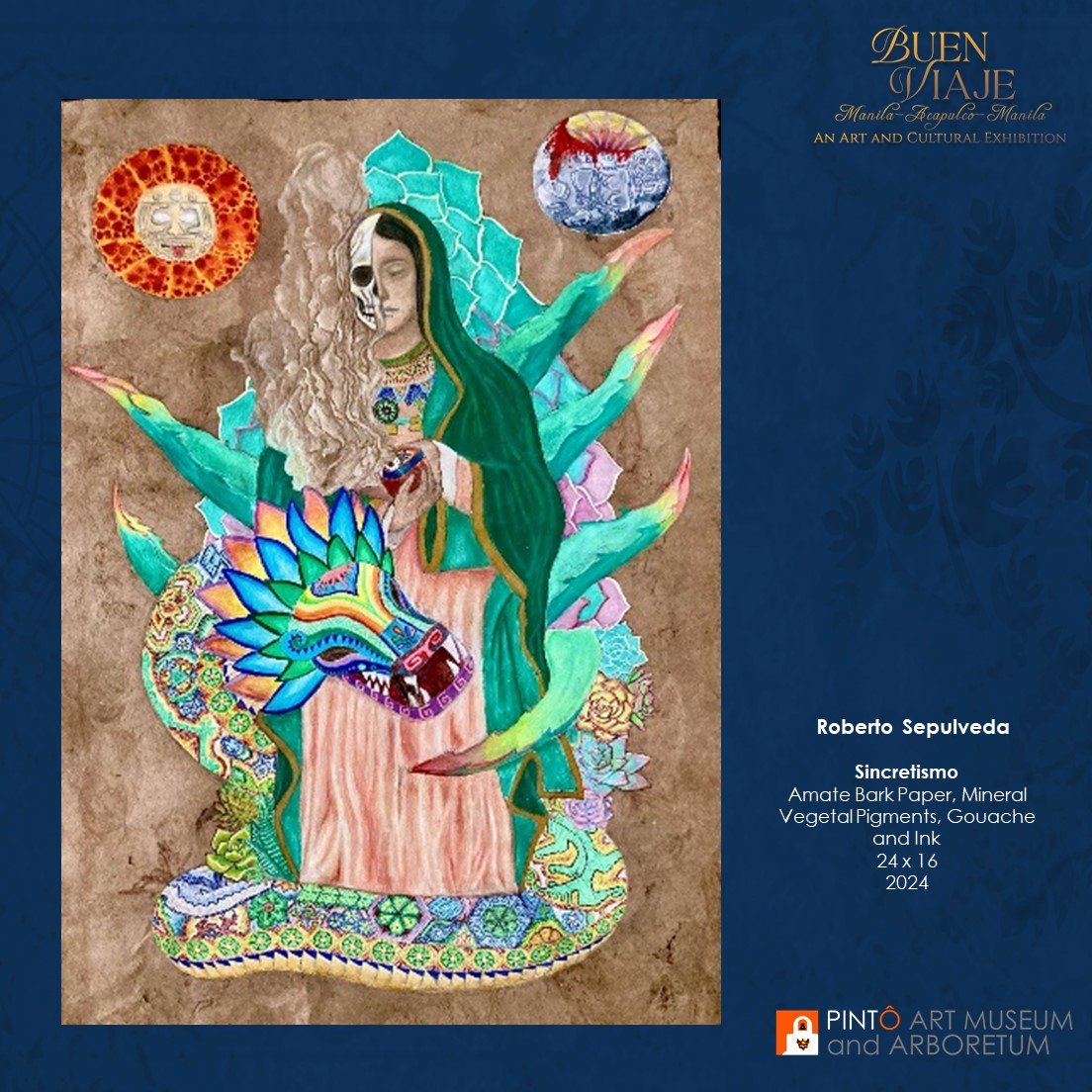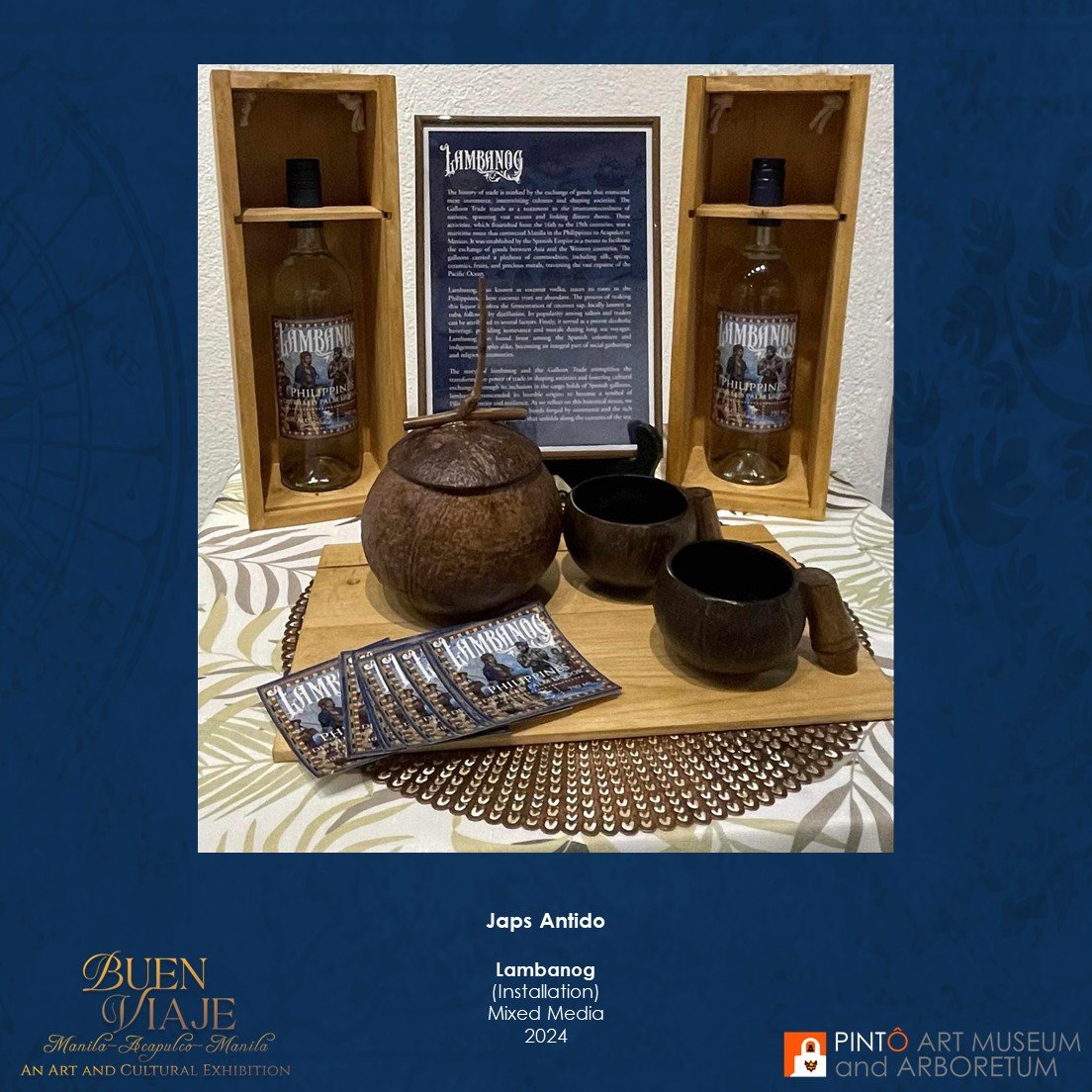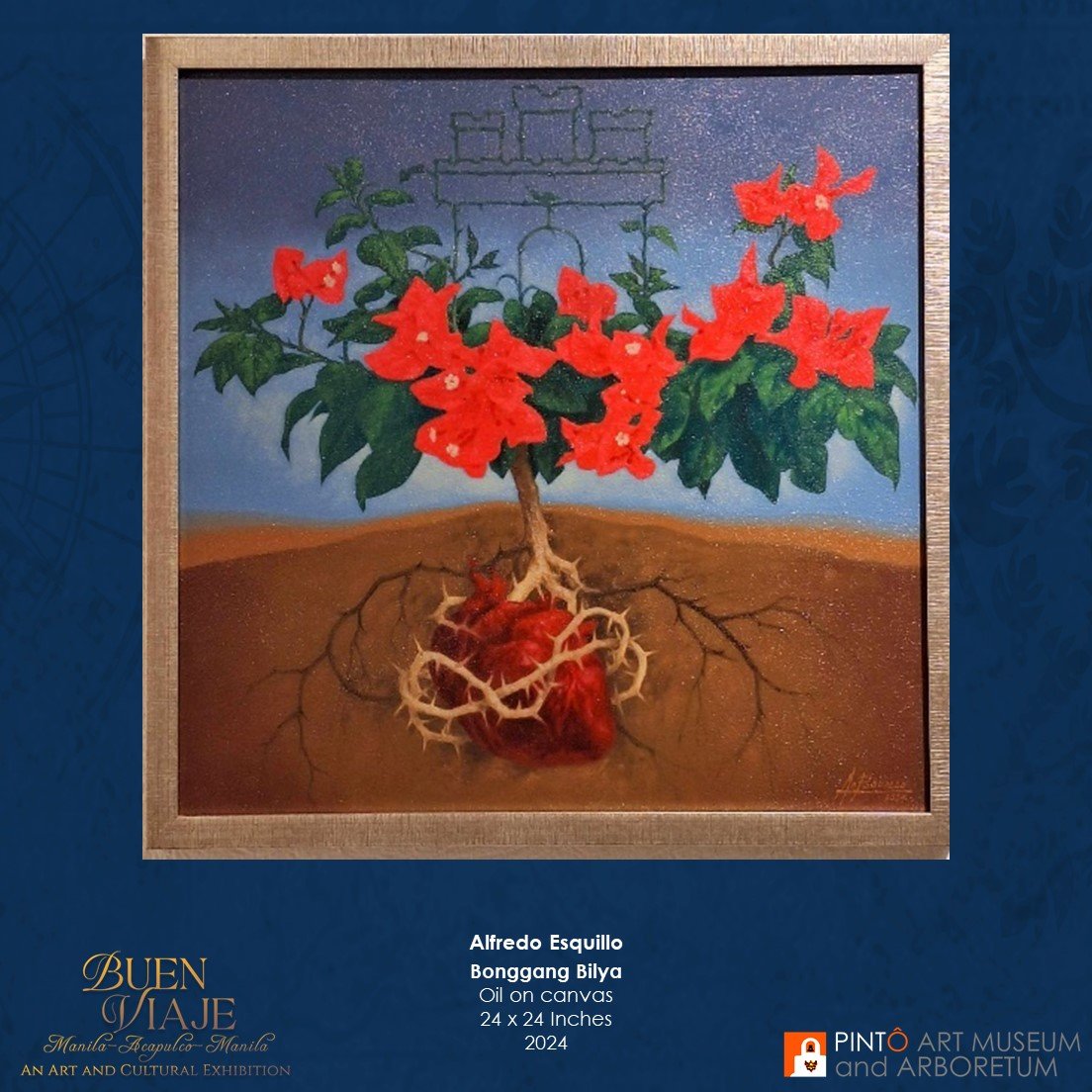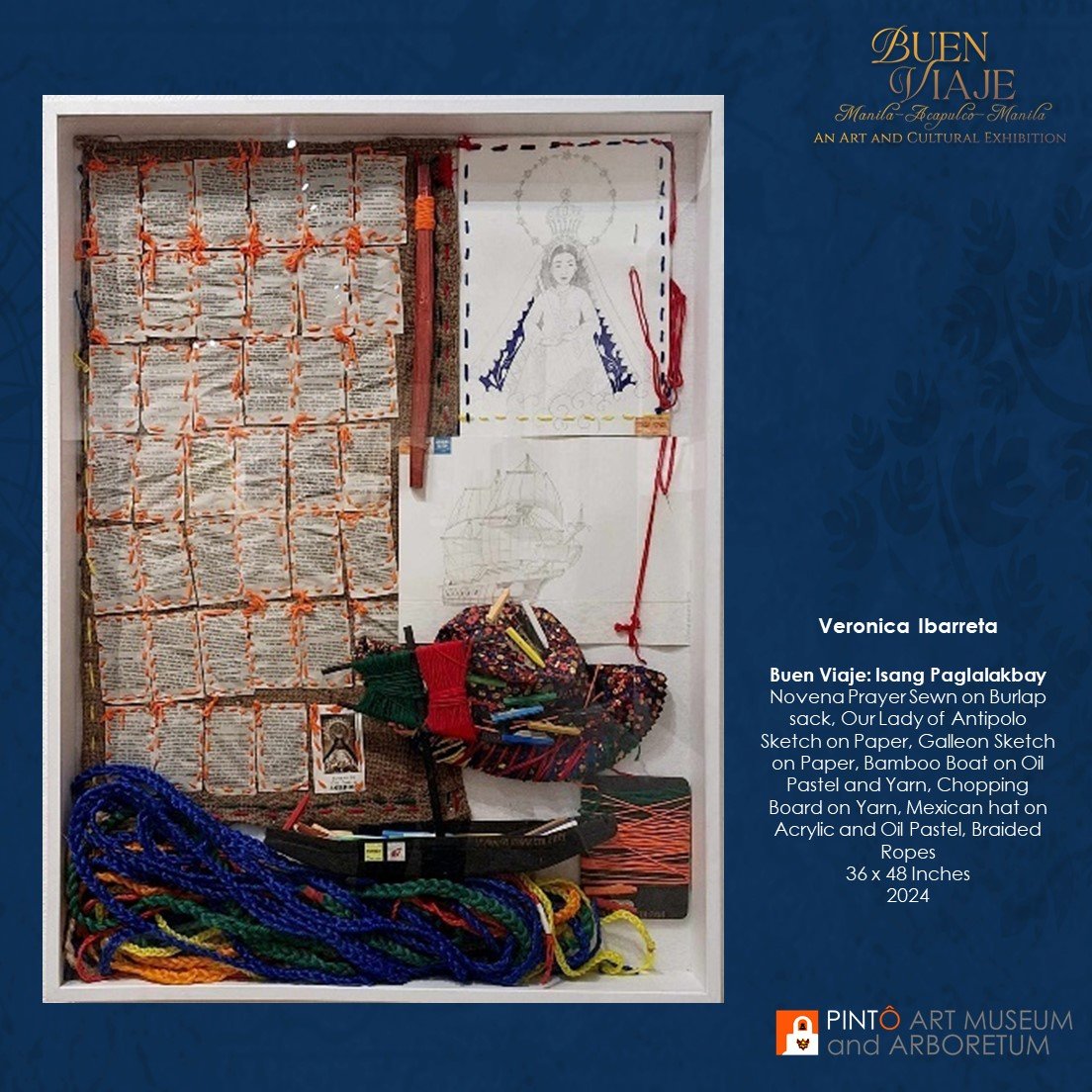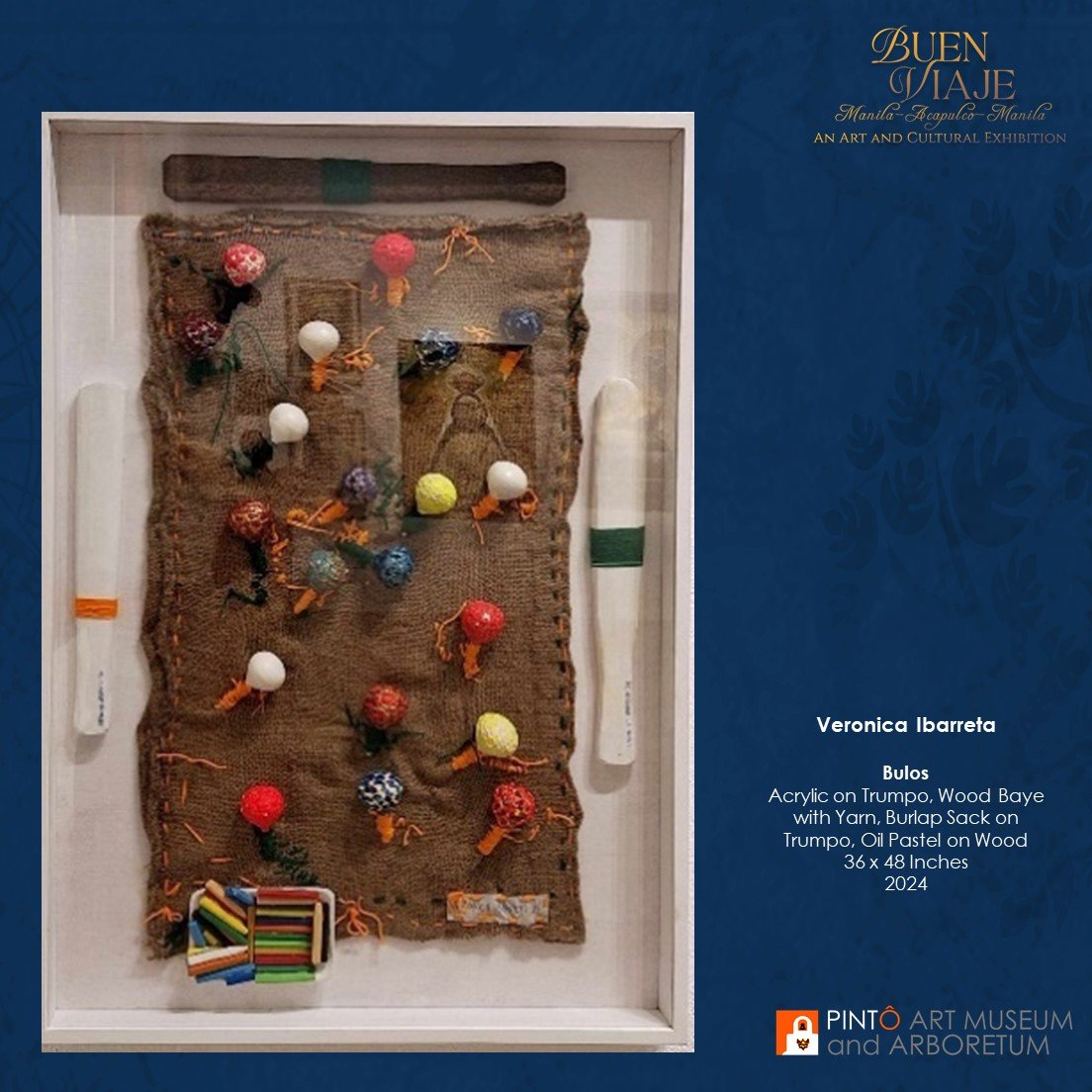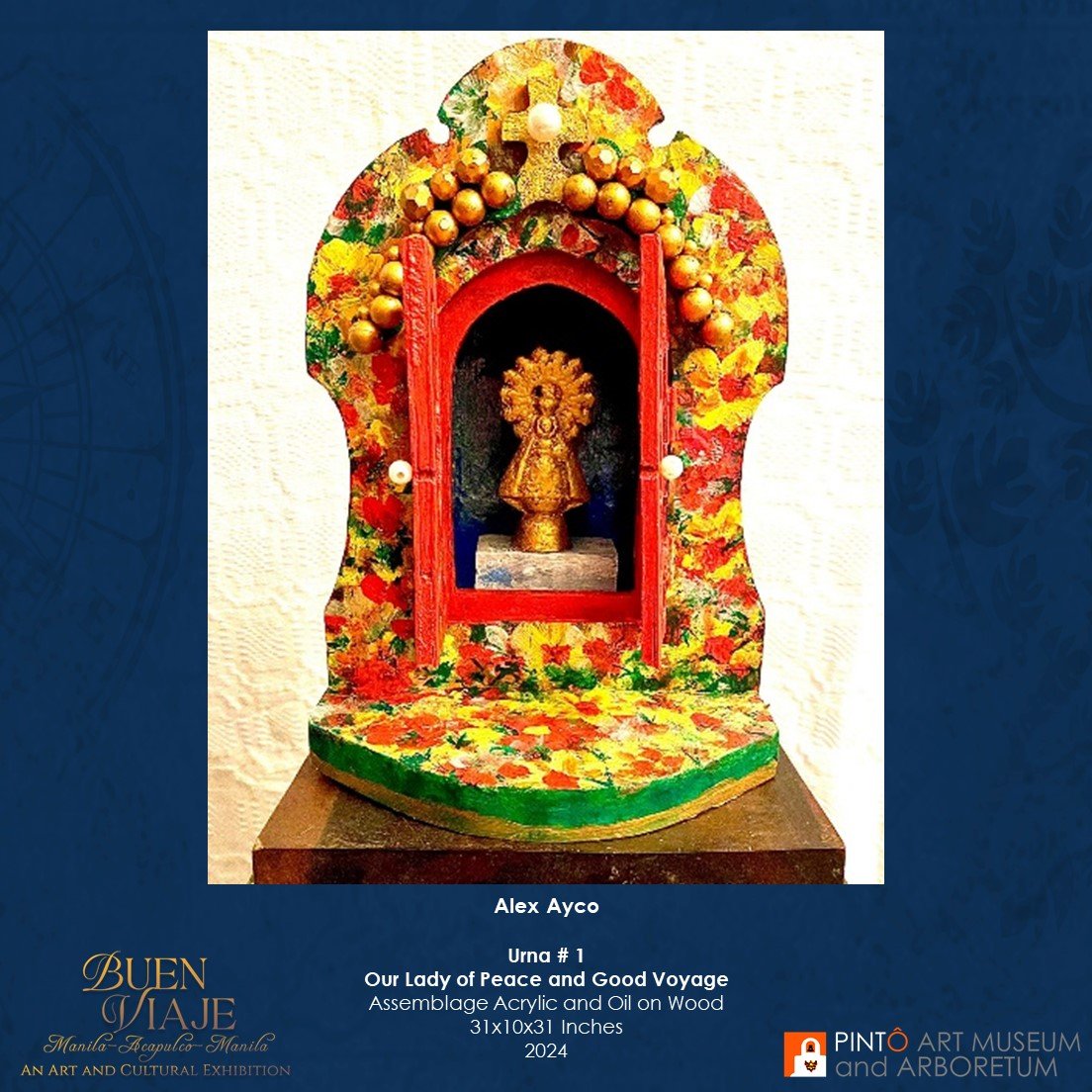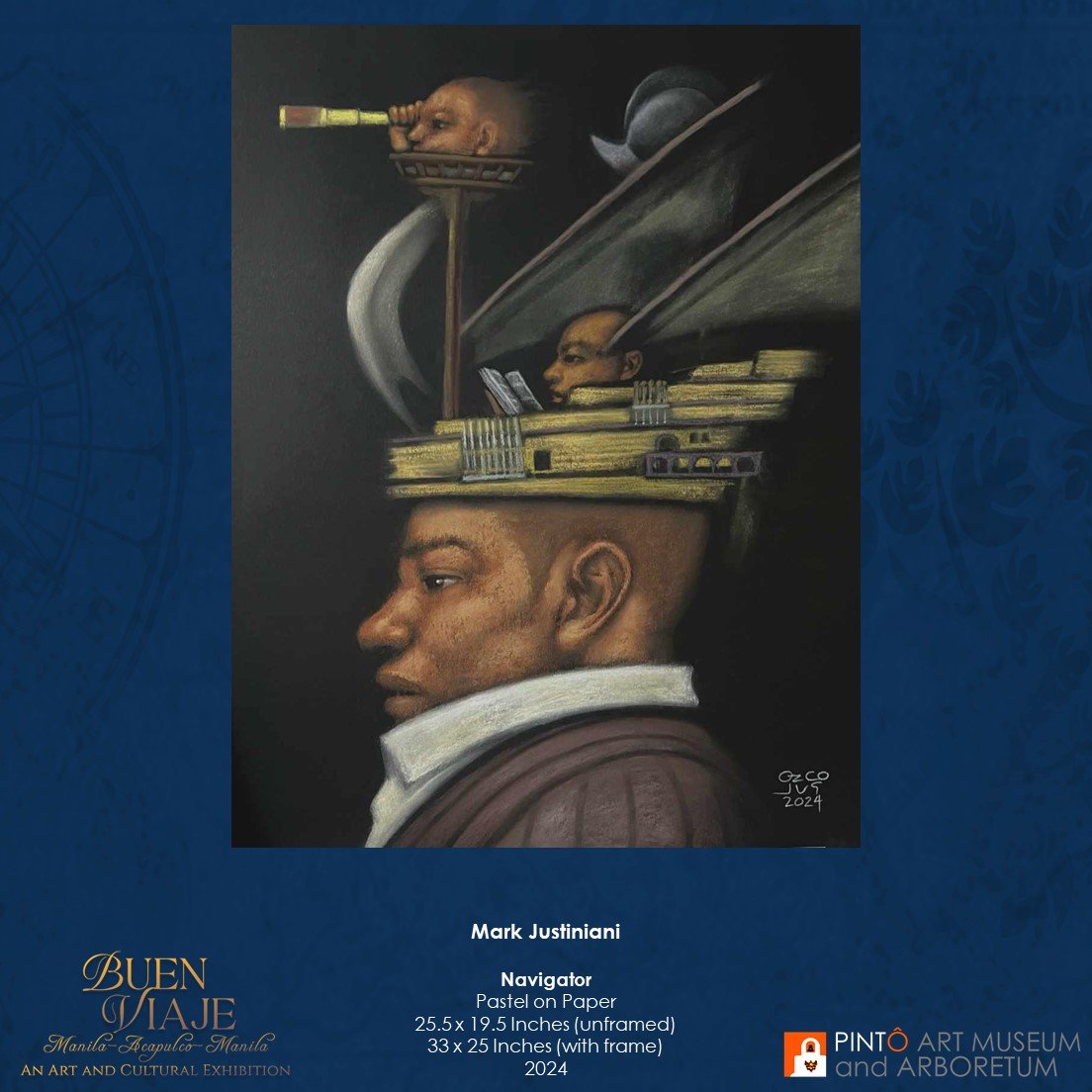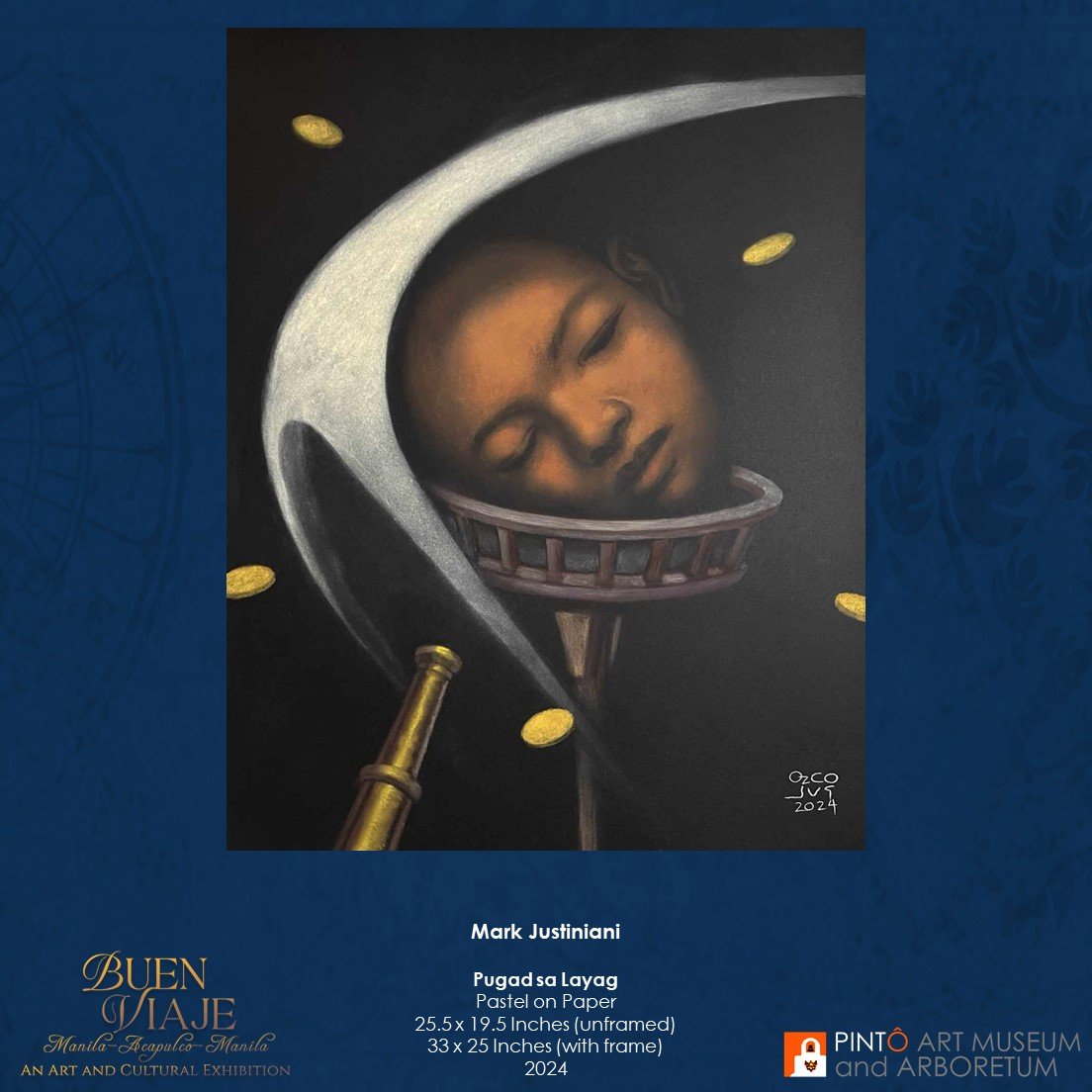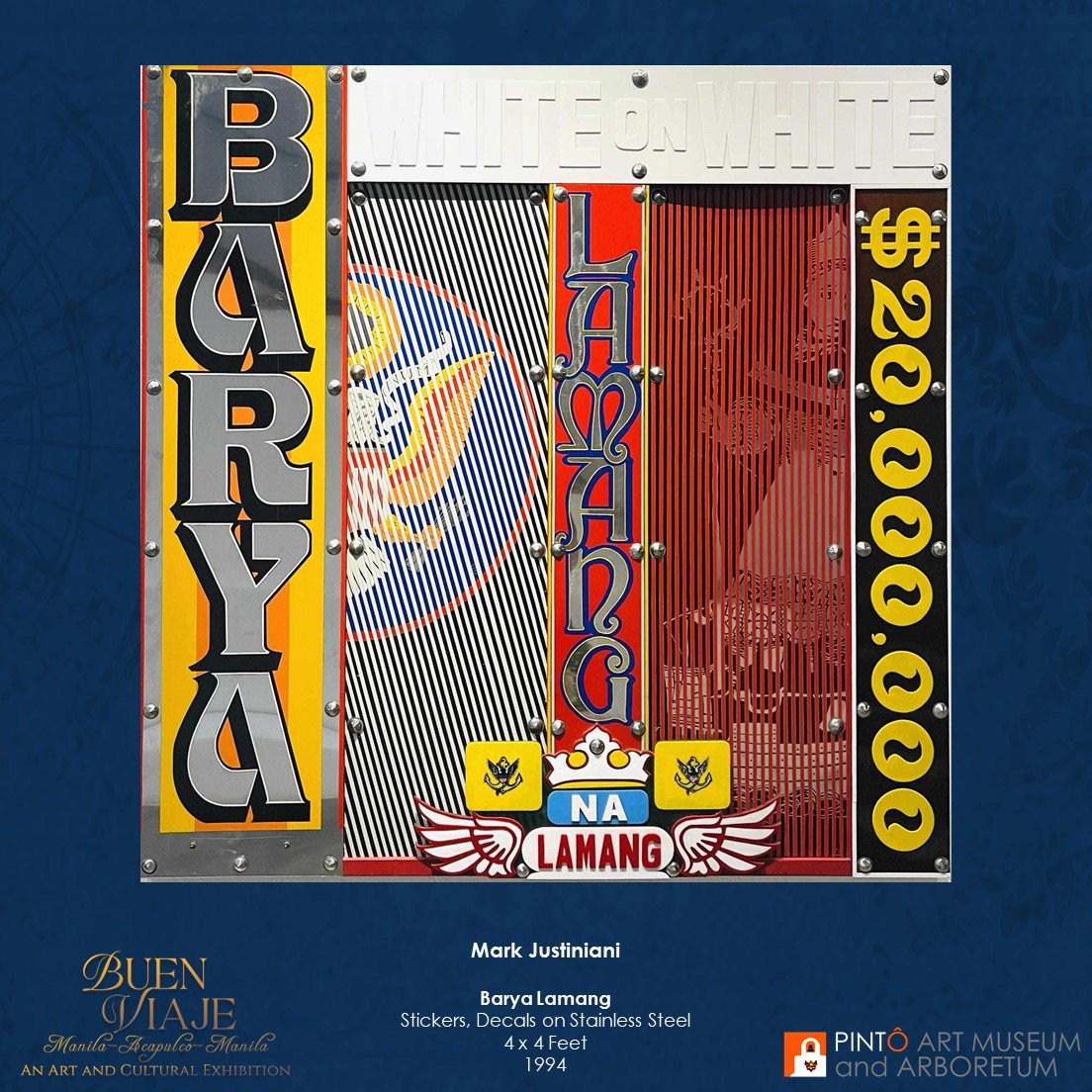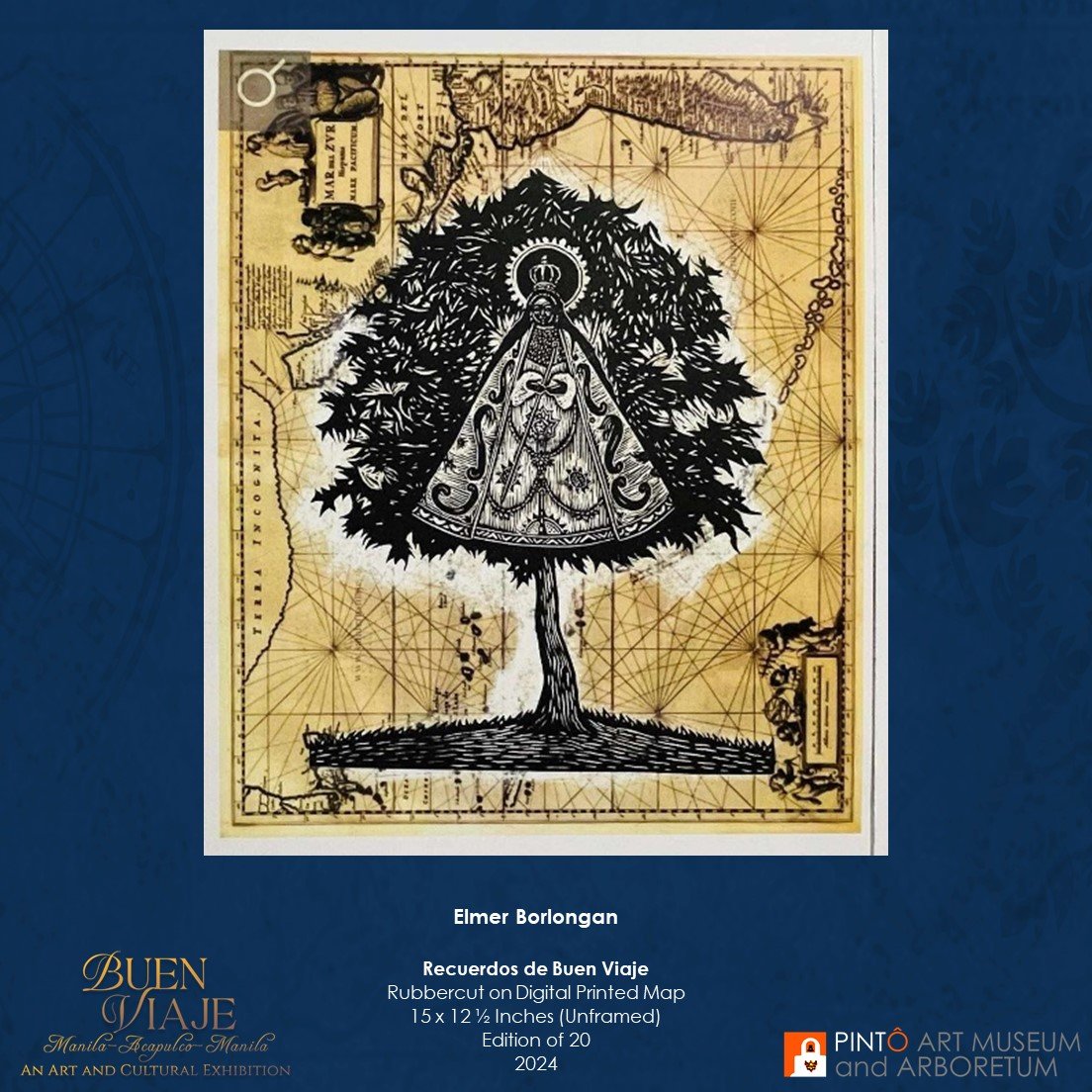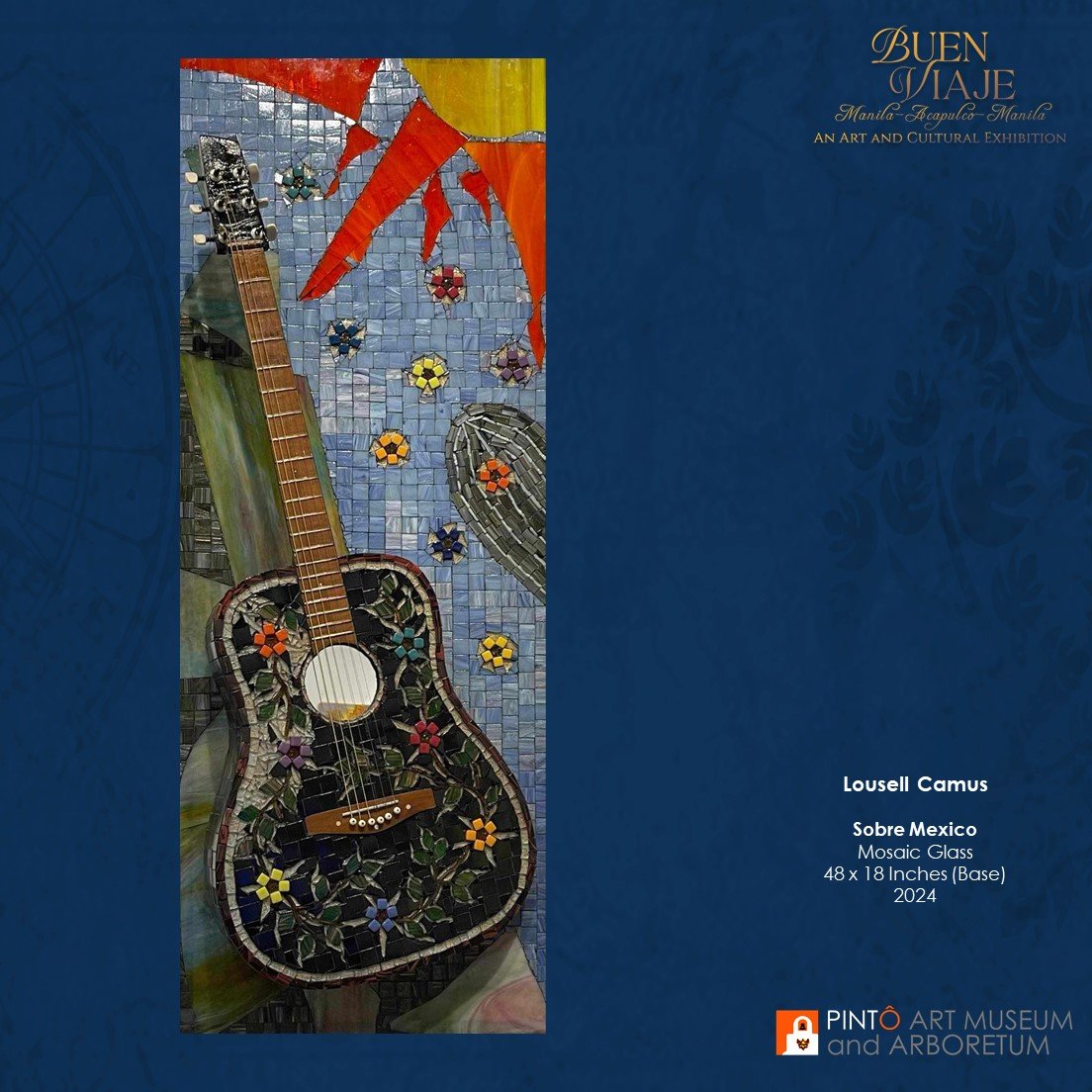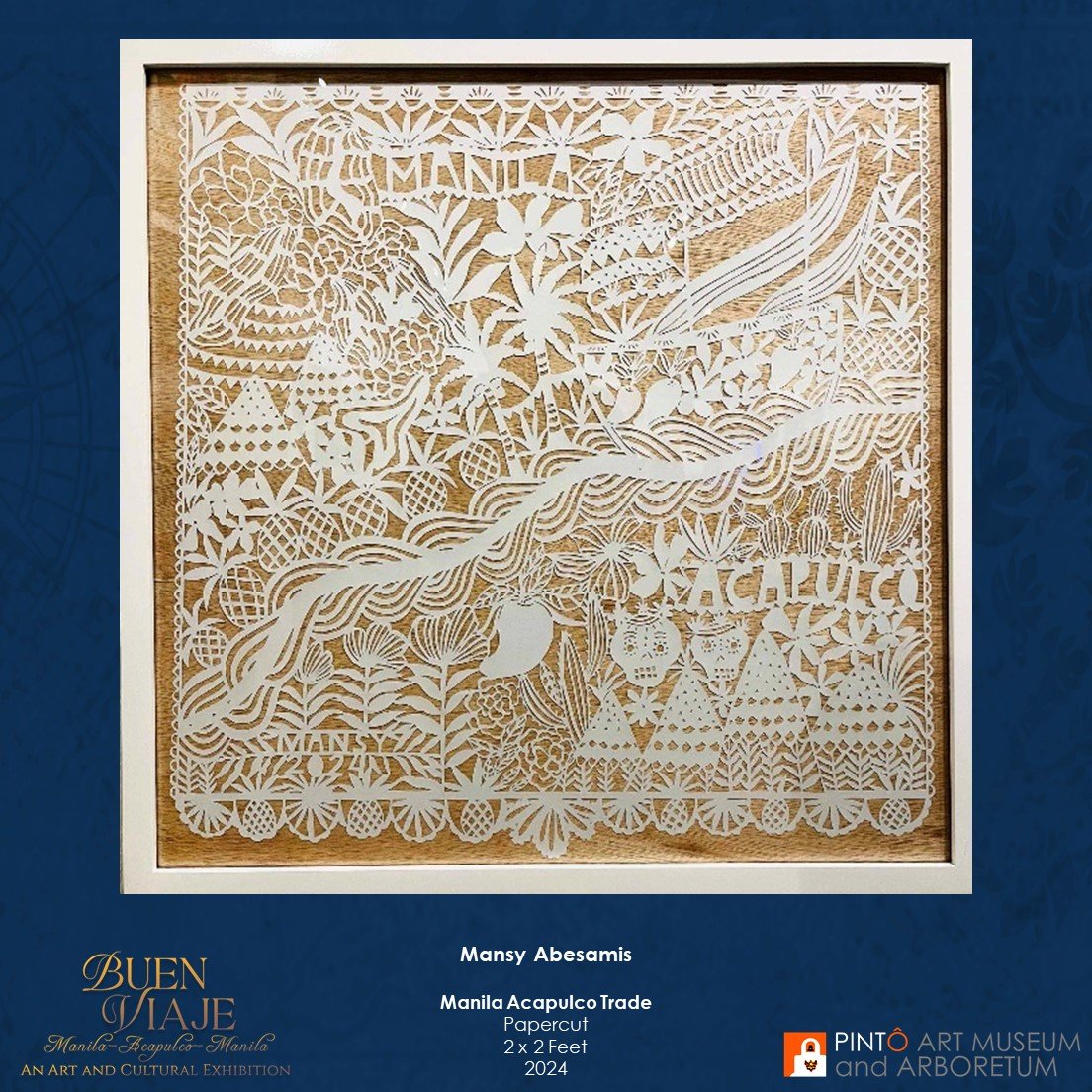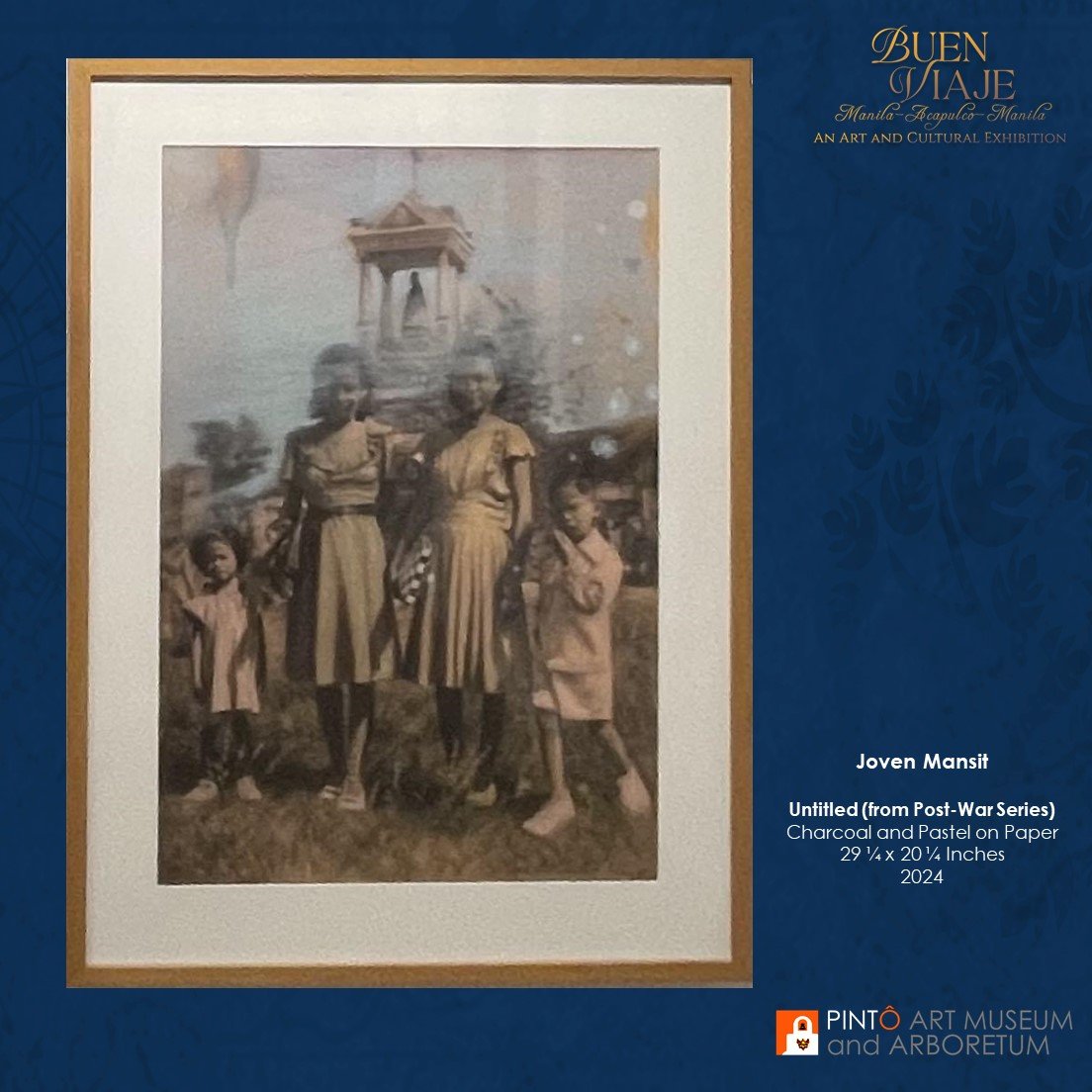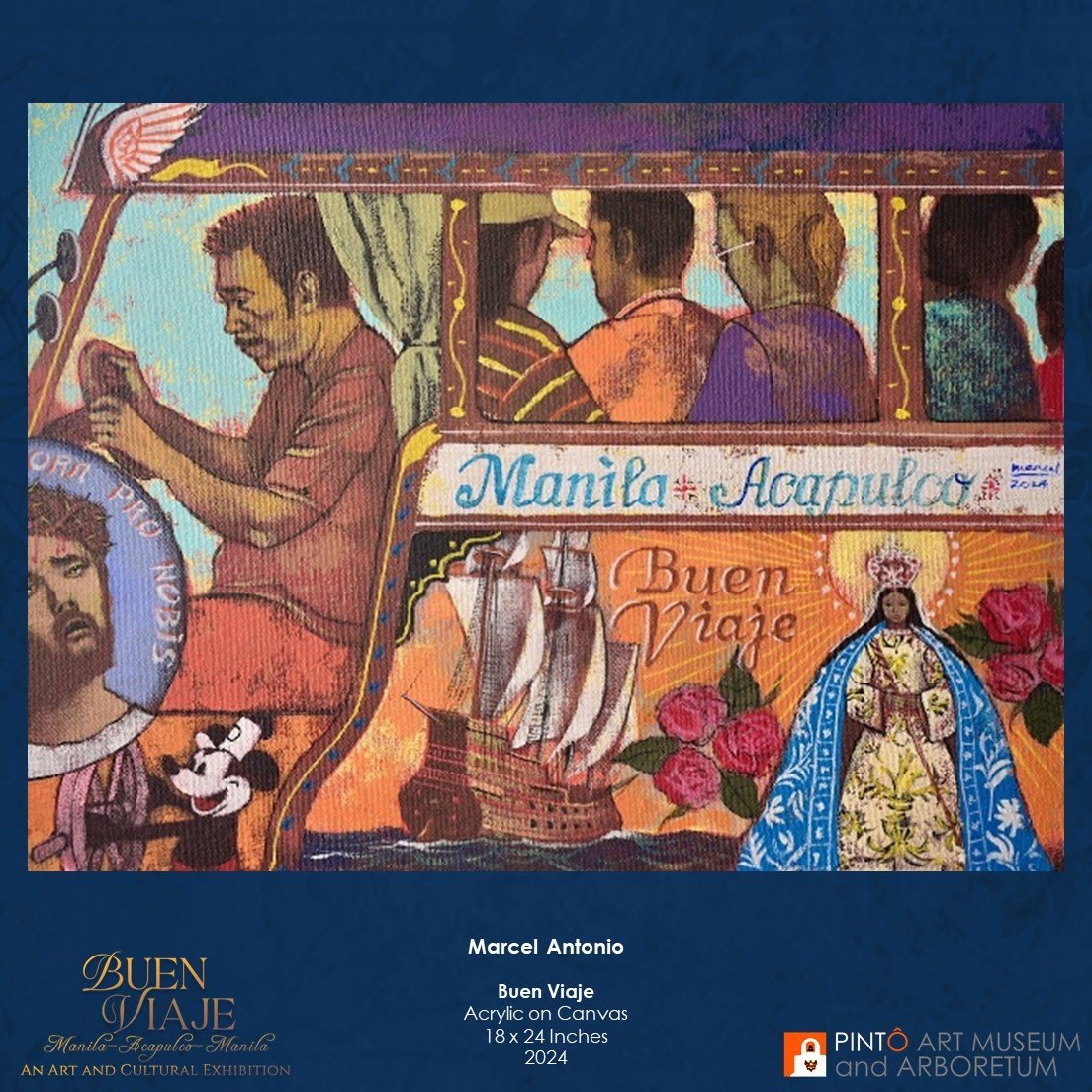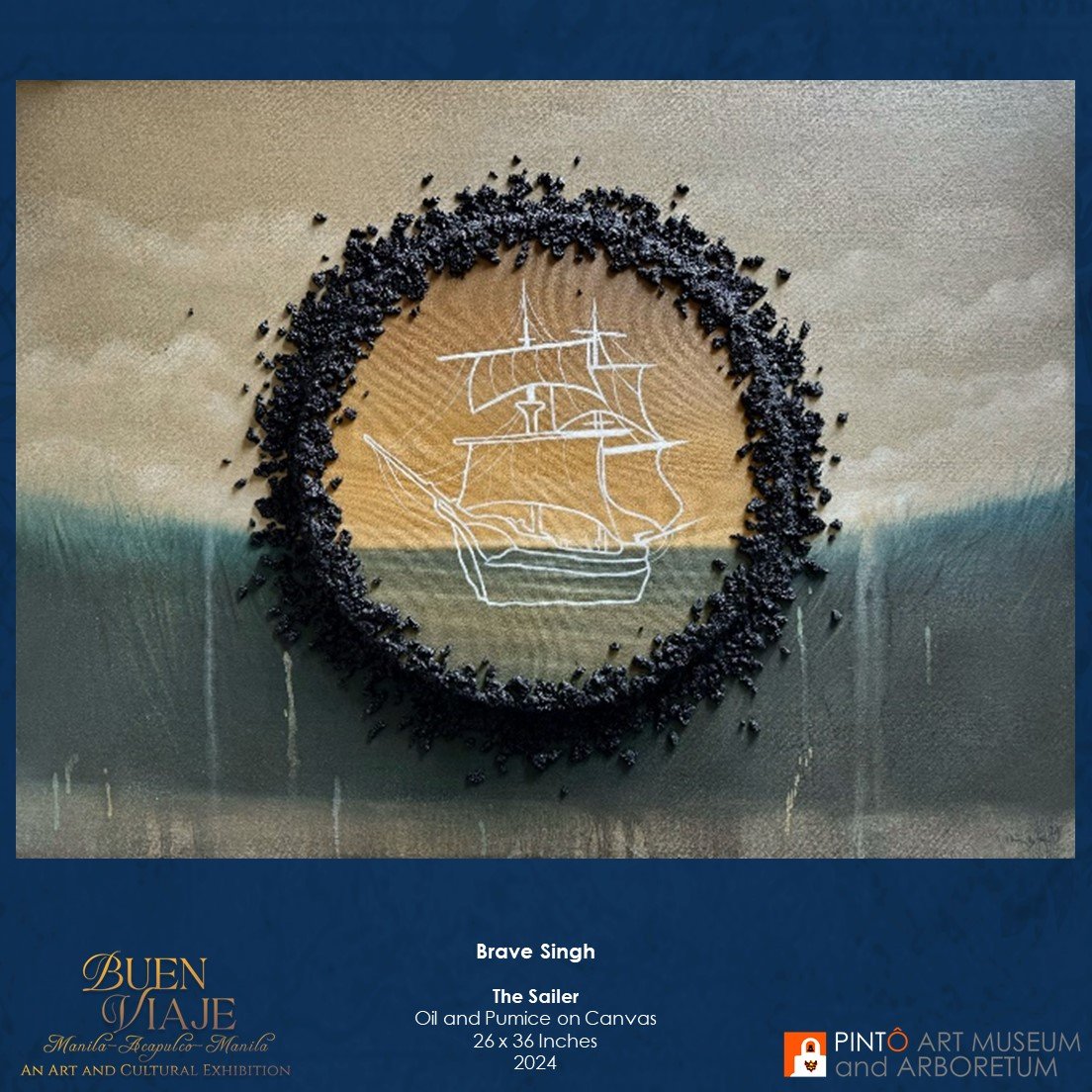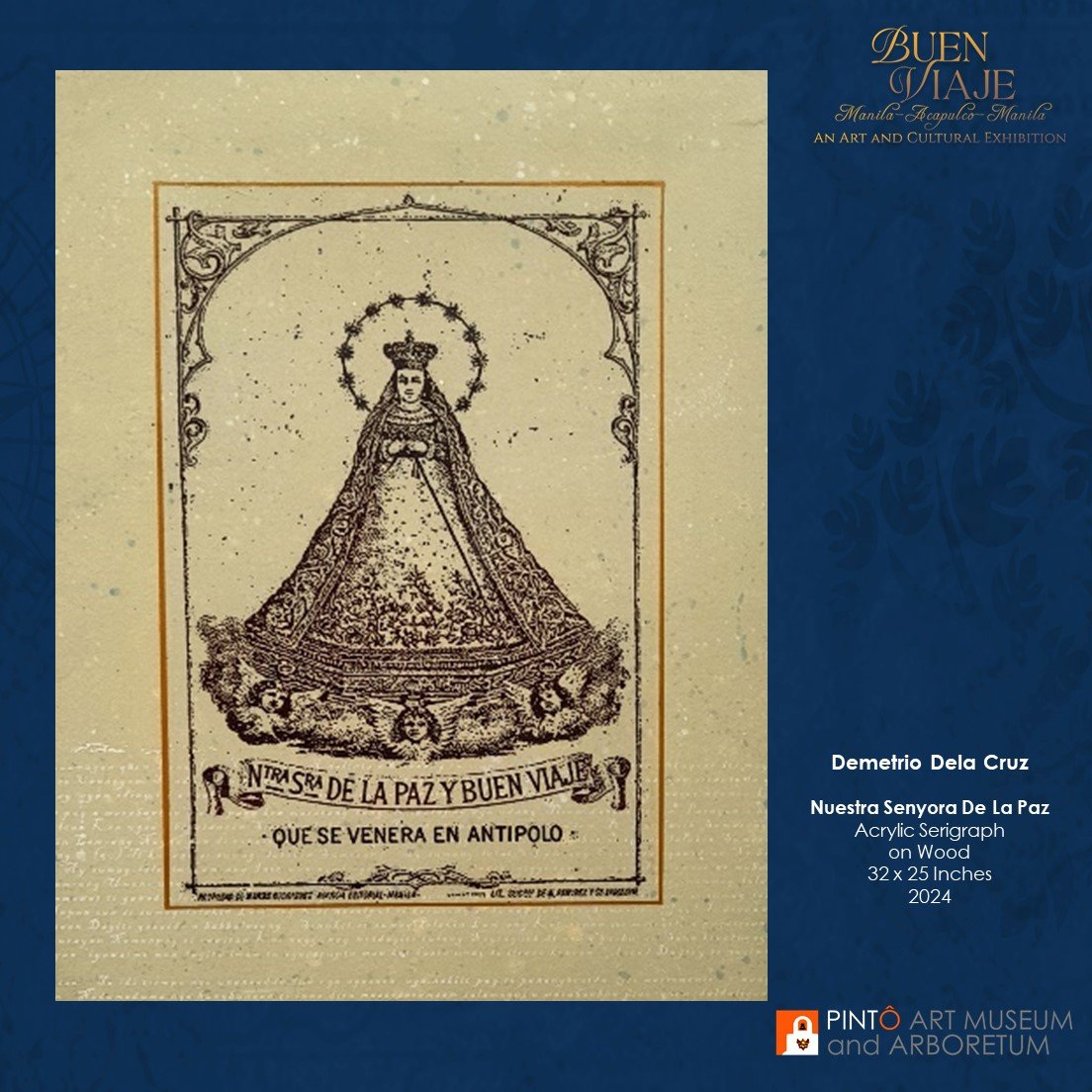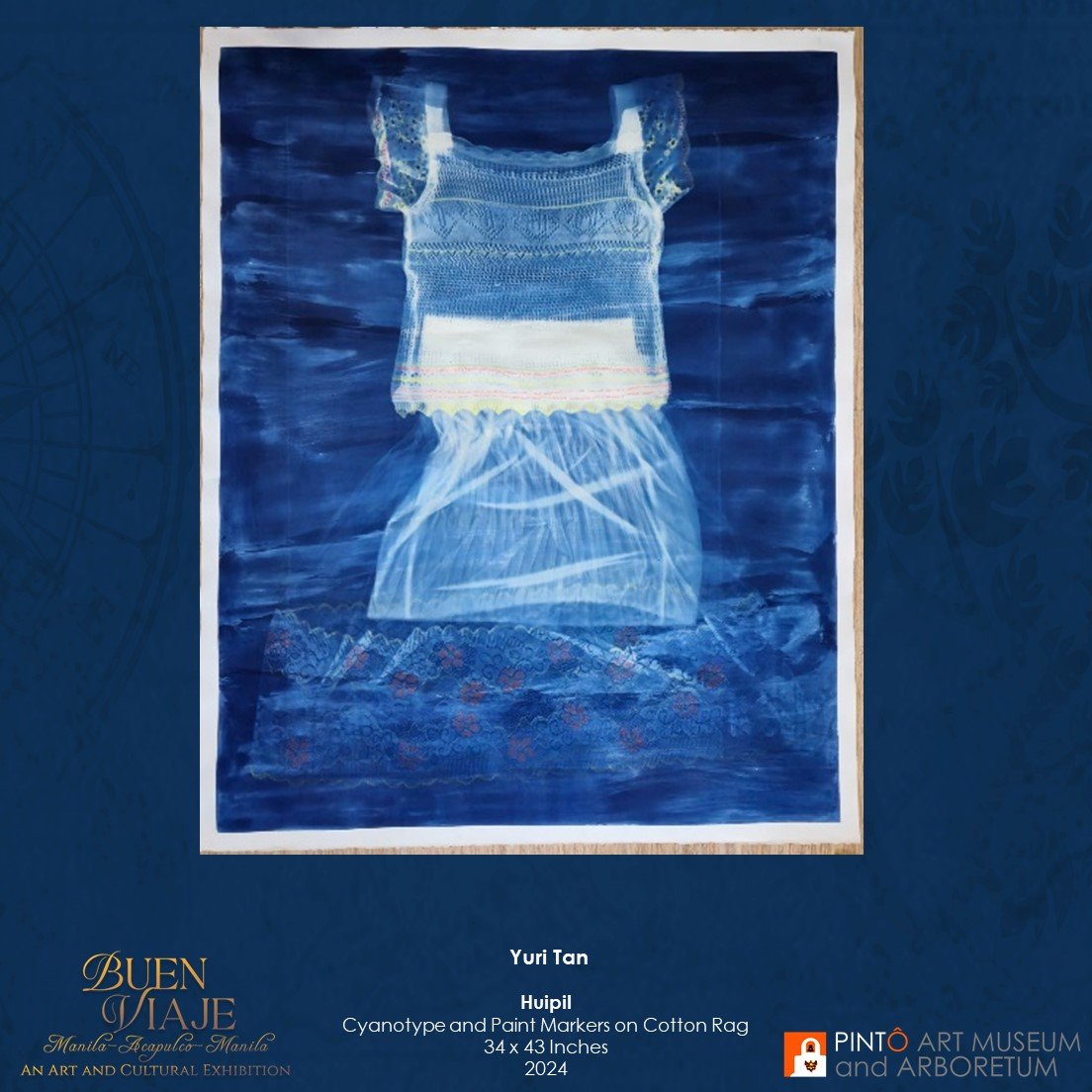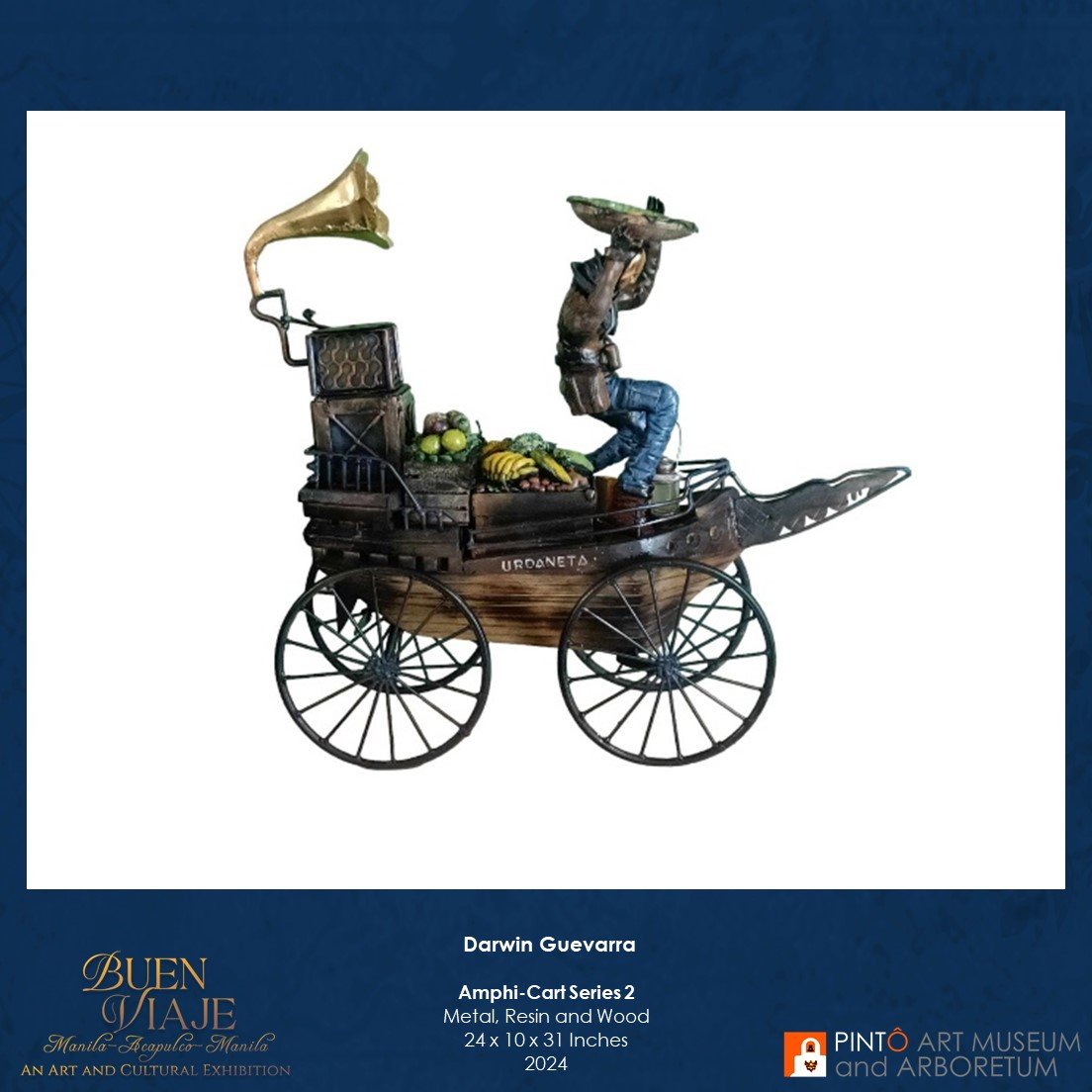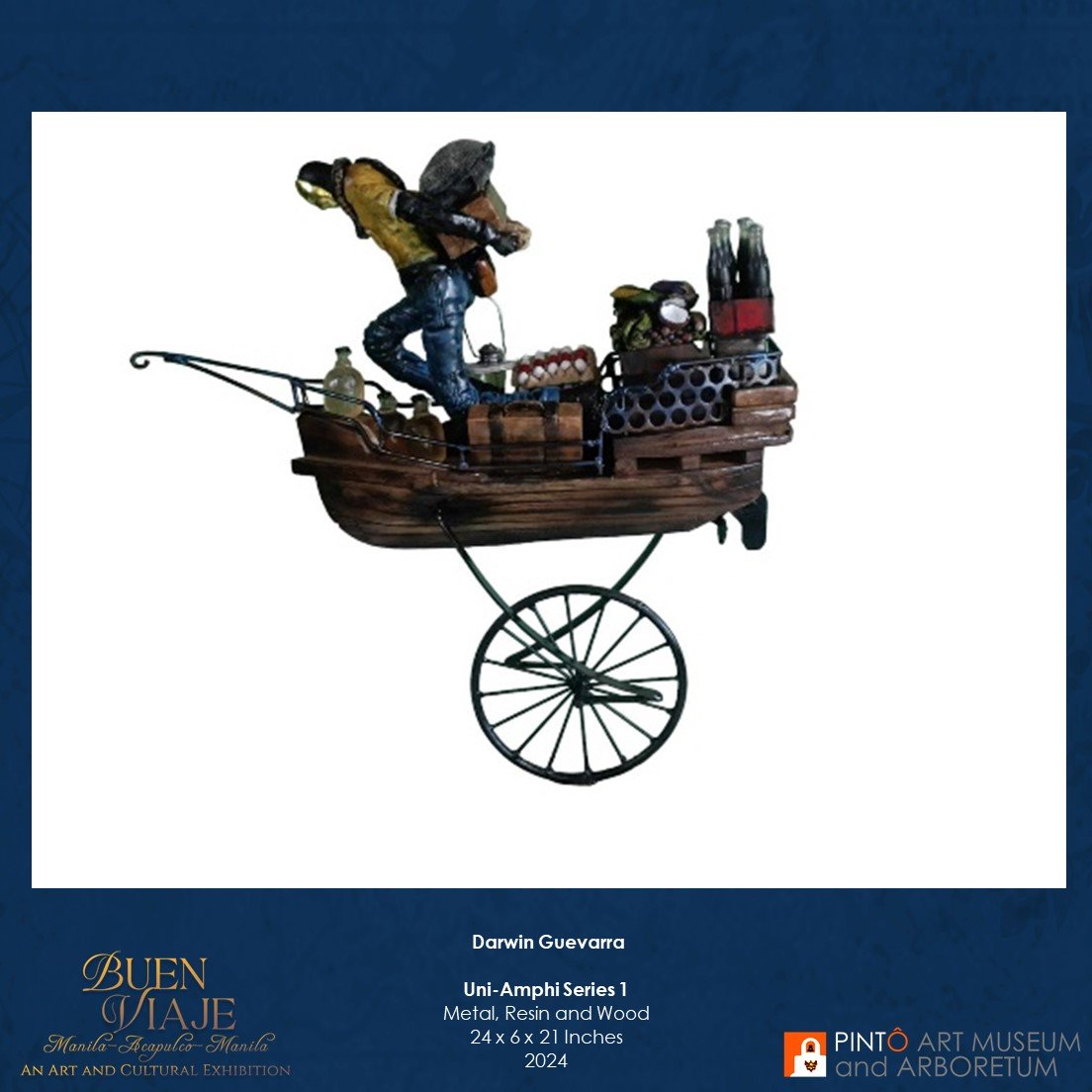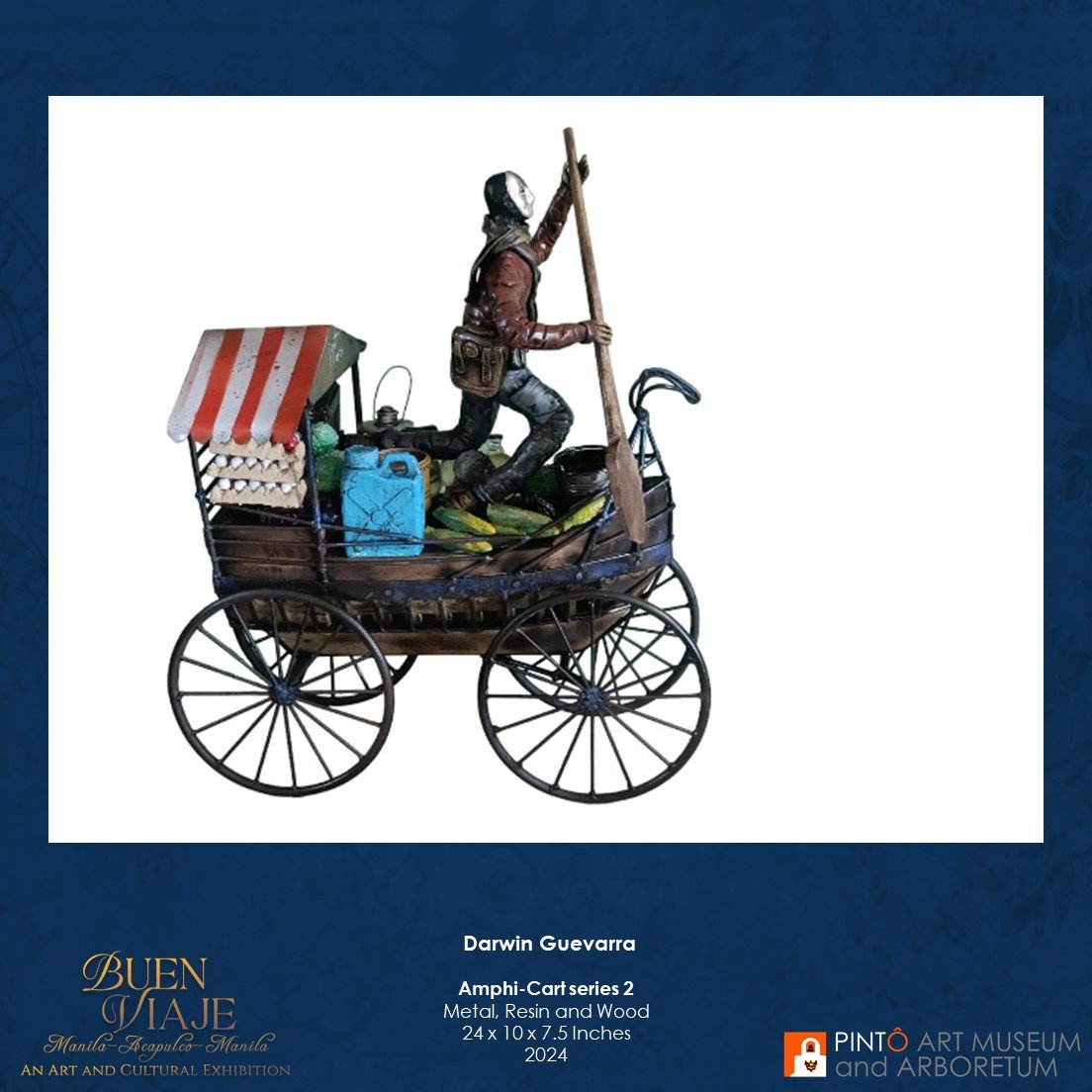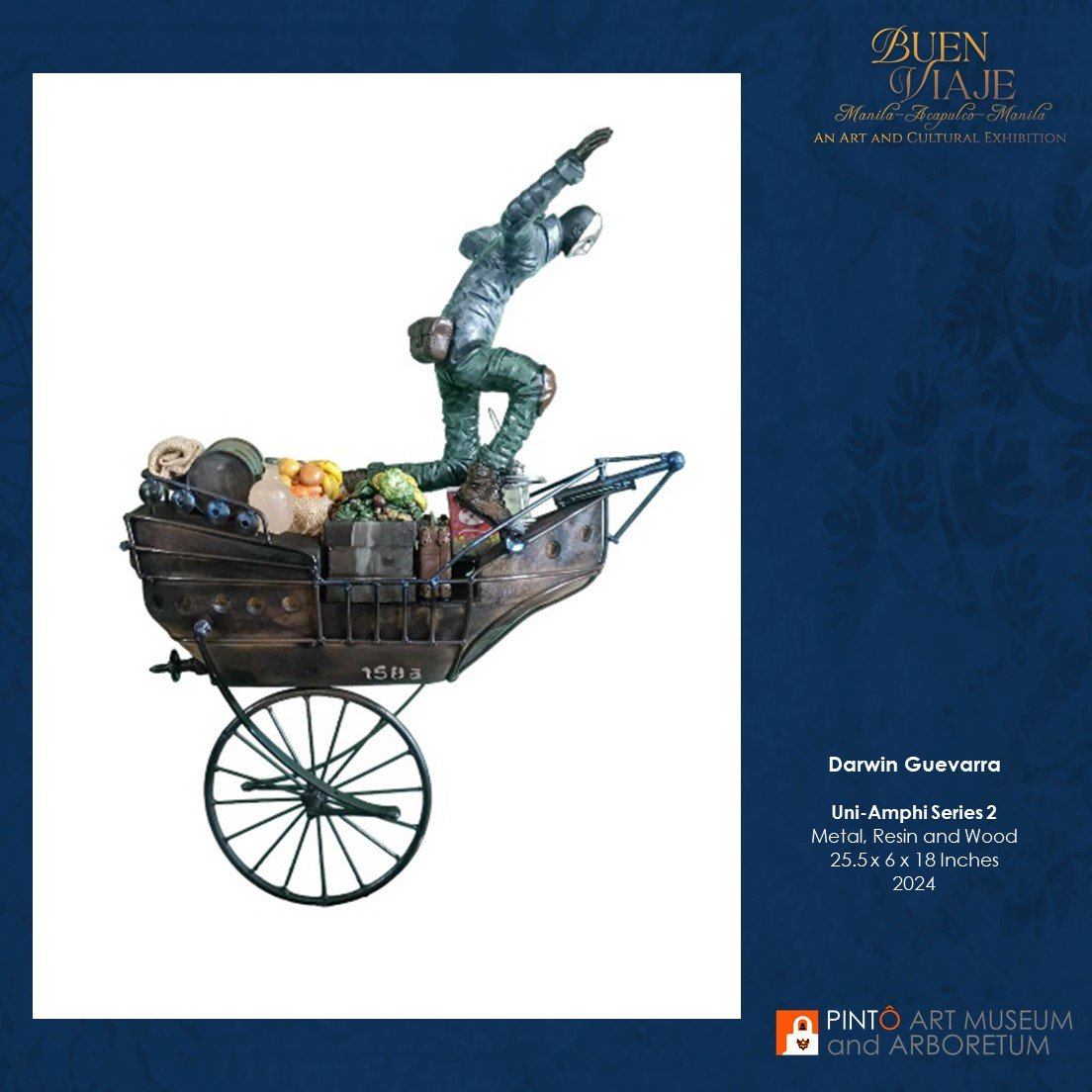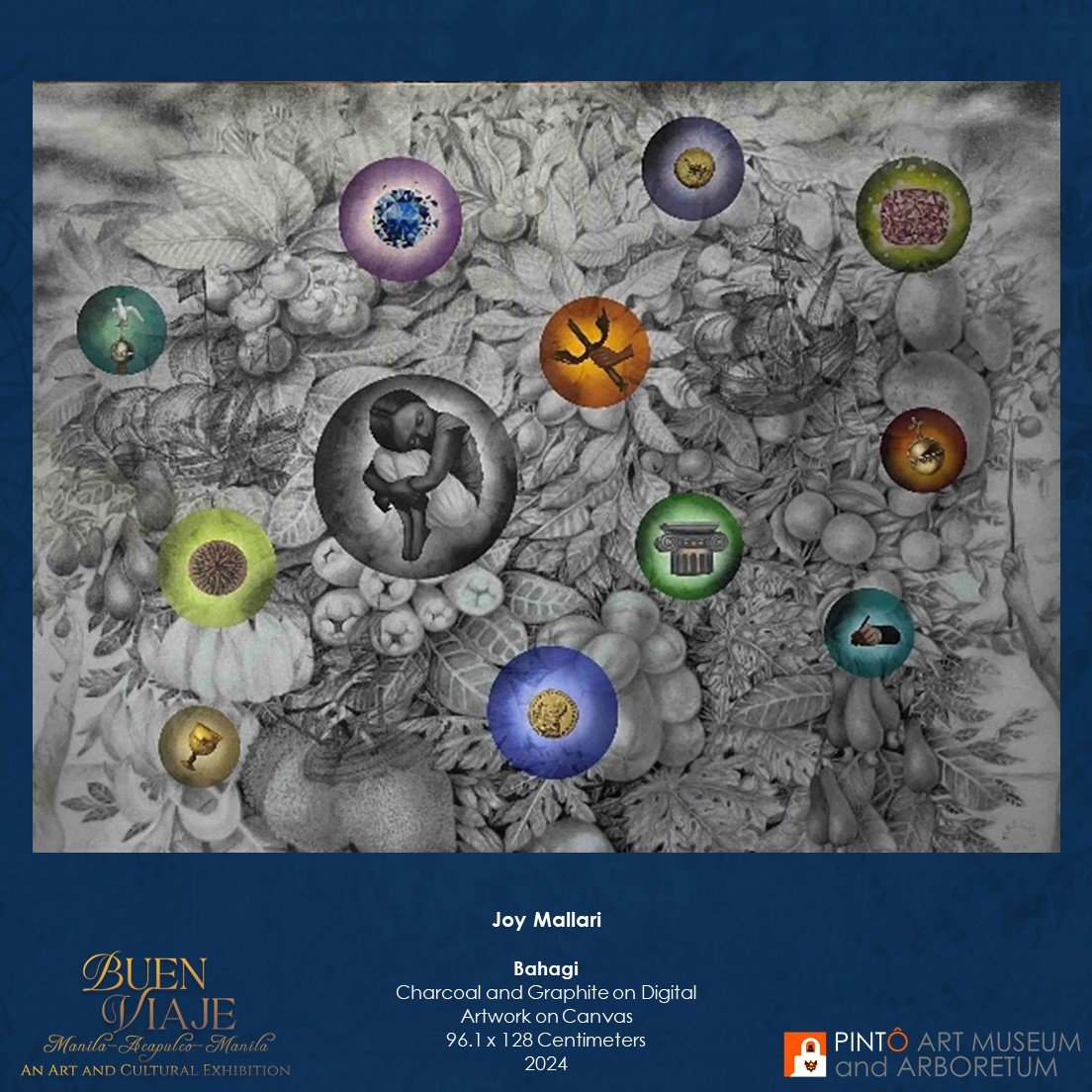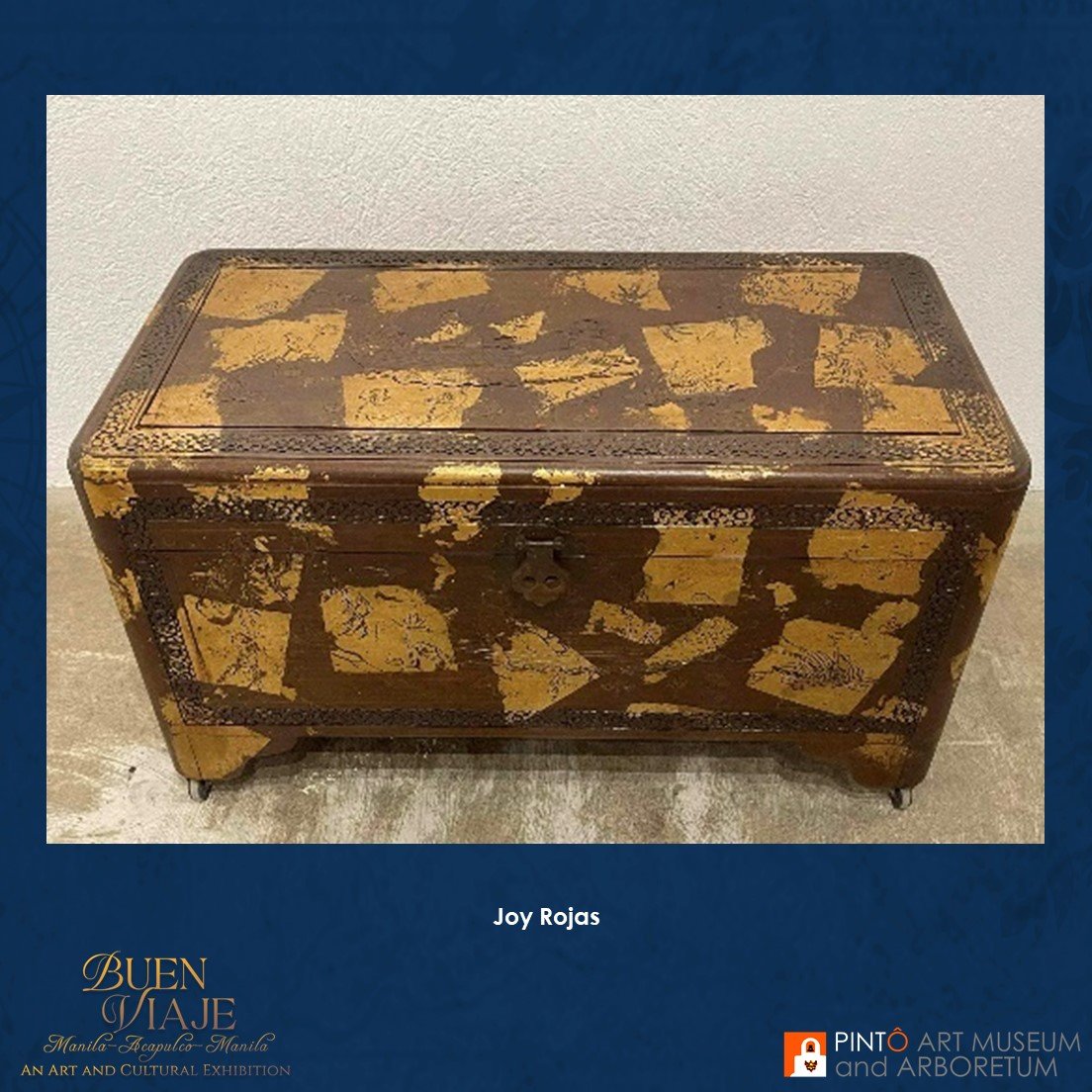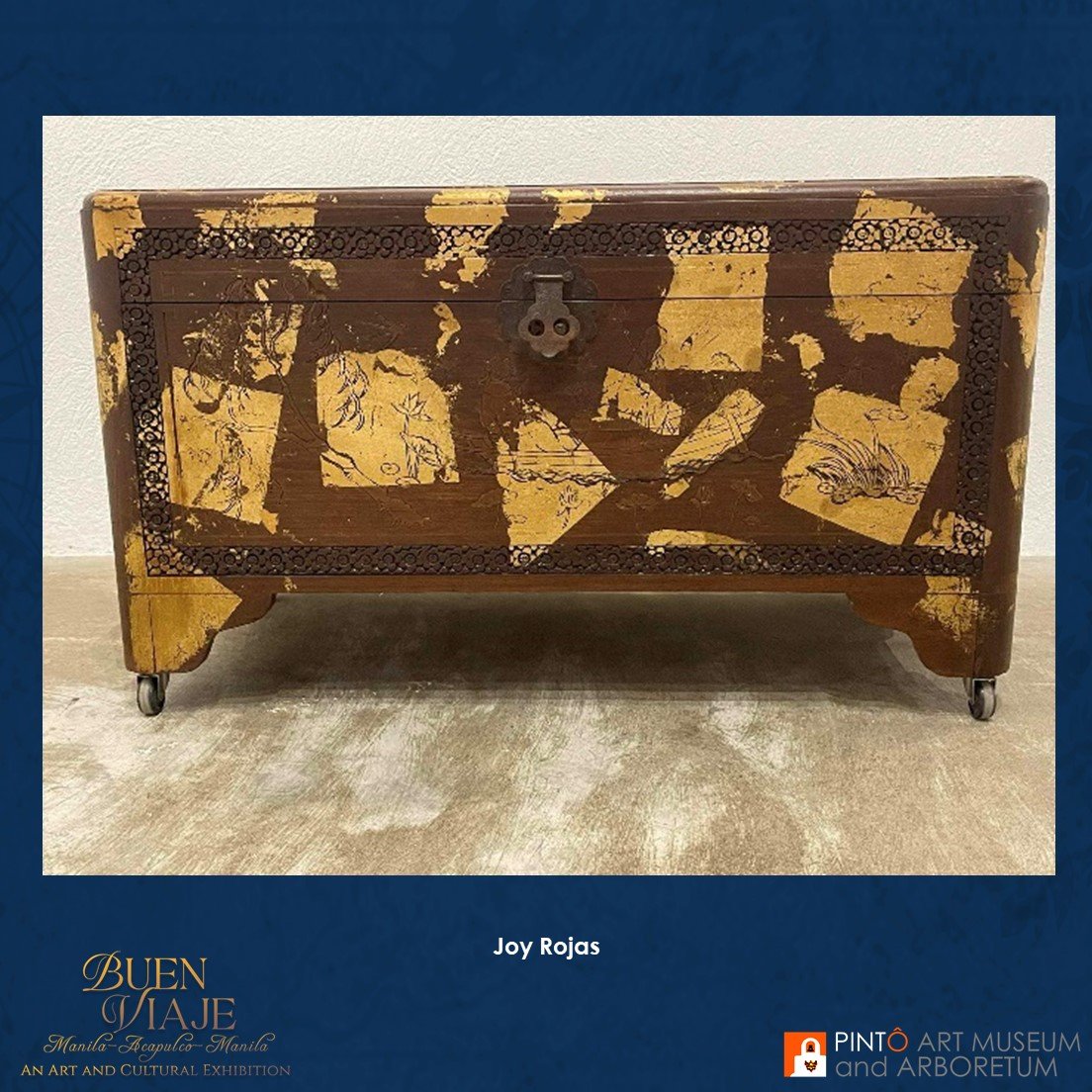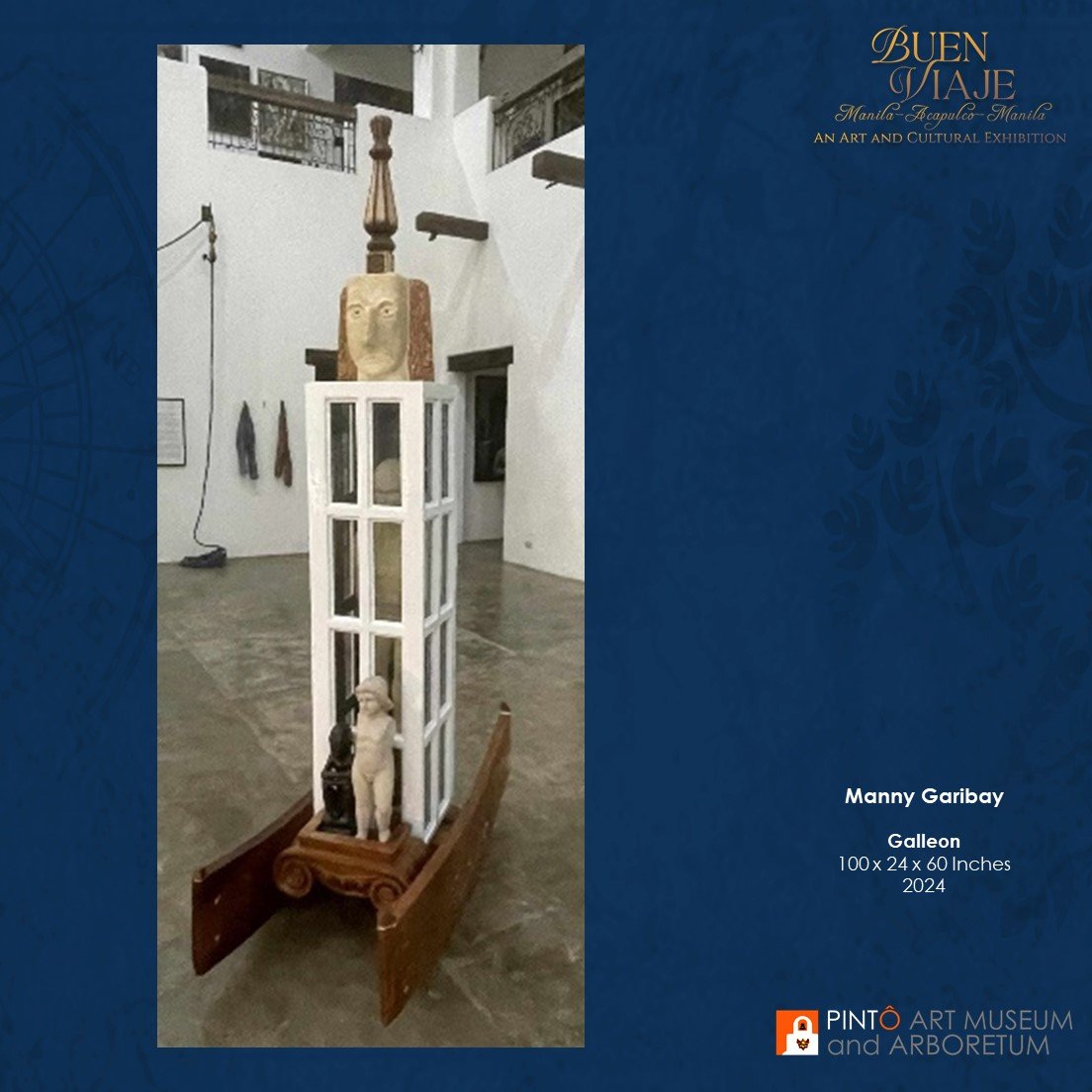OUR EXHIBITIÔNS CATALÔGUE
Browse through our comprehensive catalogue of past and present exhibitions, featuring a rich collection of artistic works.
Beyond the Blue Dress
Artist: Alex Aguilar
In his fifth solo exhibition, Beyond the Blue Dress, Alex Aguilar takes inspiration from Lewis Carroll’s timeless works, Alice’s Adventures in Wonderland and Through the Looking Glass. This exhibition continues the themes he established in the show Painting the Roses Red, which was exhibited at Pintô in 2021.
The blue dress, of course, symbolizes Alice herself in her iconic attire. It has become a universal emblem of curiosity, wonder, and the transformative journey from innocence to experience. Aguilar extends this metaphor beyond its conventional meaning to reflect on his own creative journey and the arc of the artistic process, emphasizing how adventure and imagination are vital ingredients in creating art. This journey is characterized by “the heightening of the senses, the altering of perspectives, and the merging of realities.”
In this collection, Aguilar represents himself as a series of pencils in self-portrait-like forms. The pencil, the artist’s most basic tool, symbolizes the illustrator at play, injecting humor and playfulness into his work. This playfulness is dramatized through the juxtaposition of disparate images, referencing literature, art history, and pop culture. The use of puns and poetic titles, along with the personification of insects and other animals, further enhances this whimsical quality.
The blue in the title refers to the background of many works in this exhibition. Within this context, blue is the color of imagination, celebrating the spirit of exploration and the thrill of encountering the unknown. Much like Alice’s own adventures, each piece serves as a portal to new dimensions of thought and experience, subverting reality and conventional norms. Aguilar invites viewers to embrace a world where normal rules do not apply, encouraging a sense of wonder and discovery.
-Carlomar Arcangel Daoana
Directions V
Artist: Yul Servo Nieto
Pintô Art Museum and Arboretum is honored to present Directions V, the latest installment in the acclaimed series by Manila Vice Mayor Yul Servo Nieto. This exhibition continues Nieto’s exploration of Manila’s dynamic landscape through his signature three-dimensional metal artworks.
For over a year, Nieto has captivated audiences with his Directions series, holding solo exhibits across Metro Manila. The series began with Directions I here at Pintô in February 2023, followed by exhibits at The Gallery at The Manila Hotel, Bulwagang Rodriguez inside the Manila City Hall, and The Art District at the historic Calvo Building in Escolta.
Directions V delves further into Nieto’s perspective of Manila as a continually transforming metropolis. His detailed maps underscore the city’s identity as a cultural and economic melting pot, where history and progress intersect. Nieto’s conviction that ‘the key to the future lies in the past’ permeates his work, reflecting his personal philosophies, inspirations, and goals.
Nieto draws inspiration from his father, Martin Nieto, an architecture graduate and visual artist who pioneered the giant billboard advertising industry in the Philippines. While his father’s media of choice are oil and acrylic, Nieto explores the world of metal sculpture. Despite their divergent artistic paths, their shared love for the arts forms a common ground of mutual support in each other’s endeavors.
Nieto’s transition from actor to vice mayor and artist highlights his theme of life’s unforeseen twists. His art captures the diverse interpretations and viewpoints of those who traverse Manila’s streets each day, encouraging viewers to reflect on their own journeys and the collective history of the city.
On Strange Days and Divine Love
Artist: Kim Hamilton Sulit
The dark thought, the shame, the malice, meet them at the door laughing, and invite them in.
-excerpt from The Guest House by Jalaluddin Rumi
In his solo exhibition, On Strange Days and Divine Love, Kim Hamilton Sulit presents a suite of works that contemplate how the Divine takes various forms in our lives, moving beyond the grand, sweeping interventions of Biblical times. During those times, it was God Himself who descended to earth, performing miracles that altered the course of human history. In contemporary times, however, divine intervention has become more subtle and nuanced.
As Sulit explains, “Here, the works show some glimpses of momentary awareness that lead to questioning the intervention of God in our daily lives.” These moments make us more vulnerable, allowing us to fully experience the essence of humanity. The forms that the Divine assumes in Sulit’s works may include “pain, failure, love, and death.”
Through these manifestations, the artist questions whether they test us to grow our belief or drive us further away from our faith. This complexity is symbolized by the presence of the snake in the works, a representation of both temptation and wisdom, highlighting the dual nature of our spiritual journey.
In the exhibition, classical forms of the human figure are punctuated by elements such as fire, smoke, and flowers, suggesting encounters with the divine. The appearance of a magnificent light in the sky further hints at the presence of the Divine.
On Strange Days and Divine Love is Sulit’s quest to find meaning in grief, happiness, and joy—our mortality set against the vastness of mystery—and to explore what place God occupies in our lives.
-Carlomar Arcangel Daoana
Passage
Artist: Jay Viriña
In his solo exhibition, Passage, Jay Viriña presents a captivating series of five large-scale white works set against the stark contrast of black gallery walls. These enveloping pieces offer snapshots of emptiness, a poignant reflection of the feelings many experienced during the pandemic and times of personal isolation or distress.
However, for Viriña, the color white is not solely a symbol of emptiness. It can also signify light, clarity, and even enlightenment. These works might be viewed as a tabula rasa, an empty slate inviting one to begin anew. Yet, they are not entirely flat; the artist’s brushstrokes introduce complexity, underscoring the intricate nature of starting afresh. This is the human element in Viriña’s work—a testament to one’s will in an otherwise void universe. It is an affirmation that cultivating a sense of direction and envisioning one’s place in the world is an active process.
For the first time, Viriña introduces rugged textures into his work. These textures signify the raw, unrefined aspects of human experience, highlighting the unpredictability and unevenness of life’s journey. They remind viewers that starting anew is not always a smooth process; it is filled with challenges and imperfections that one must navigate and embrace.
At different angles, glass beads embedded in the works shimmer like droplets of water. These droplets evoke raindrops caught on a windshield, a recurring motif in Viriña’s art. They add another layer of meaning, suggesting the transient beauty of moments and the clarity that follows rain.
Passage is a profound exploration of how we navigate and shape our lives. It underscores that we have the power to alter and configure our destinies as we see fit, reminding us of our agency in the journey of life.
-Carlomar Arcangel Daoana
Ulan
Artist: Chino Yulo
For his solo exhibition, Chino Yulo embraces the power of sculpture to create grandeur in spaces, presenting monumental works that command attention and evoke deep emotions. Titled Ulan, Yulo departs from his signature contemplative, placid surfaces, diving into expressions of the sea during rain. The artist frames this show as his response to the aggression happening in the West Philippine Sea, emphasizing that the sea in these works is specific to our own context.
The centerpiece of the exhibition, with all the walls blackened, is composed of stupendous panels of aluminum sheets, meticulously etched to evoke the ocean’s surface. This work connects to Yulo’s first exhibition, Marahuyo, which was also shown at Pintô, but with a twist. This time, the placid sea surface is transformed, rippled by a drizzle.
Another piece, made of thermoformed acrylic, captures the full range of a typhoon’s expression, with waves crashing and rain slashing through the air, creating a visceral and immersive experience.
The nylon strings used in the piece are a nod to the fishing lines of fishermen whose livelihood is threatened by foreign trespassers.
Adding to the exhibit’s dramatic impact, a pair of works is illuminated by a strategic light source, underscoring dawn and dusk and how it affects the surfaces Yulo explores.
Collectively, these works address his fears: that of drowning in the depths of the ocean, to a simple drizzle turning into a cataclysmic storm. They also address his fears of using power tools as they were needed to create the works.
Ulan testifies to Yulo’s energetic force of will in manipulating his preferred materials, showcasing not only his technical prowess but also the grace and subtlety of his imagination. This exhibition presents a different view of nature, not as something calm and collected, but raging and dynamic.
Yulo dedicates this exhibition to his father-in-law, Timothy Alexander Craig, whose unwavering support has been instrumental in his artistic journey.
-Carlomar Arcangel Daoana
Buen Viaje: Manila-Acapulco-Manila
An Art and Cultural Exhibition
This May, the Pintô Art Museum and Arboretum and the Embassy of Mexico in the Philippines, The Gallery of Prints, in cooperation with El Colegio de Michoacán, are thrilled to unveil the captivating exhibition, Buen Viaje: Manila-Acapulco-Manila. This unique exhibition celebrates the rich history and culture shared between Mexico and the Philippines.
The exhibition, considered to run from 5 May to 23 June 2024, will immerse visitors in a journey highlighting the exchanges and influences that have shaped both nations. Nestled within the iconic Pintô Art Museum, in Antipolo, Rizal, the exhibition will set the stage for an experience that will deepen the appreciation for Mexican and Filipino intertwined heritage.
Featuring a meticulously curated collection of artworks, vintage maps and prints, and historical artifacts, “Buen Viaje Manila-Acapulco-Manila” pays homage to the trade that linked Manila and Acapulco centuries ago through the Manilla Galleon. This trade route not only facilitated commerce, but also fostered a remarkable cultural exchange, leaving an indelible mark on the artistic and cultural landscapes of both countries.
The Embassy of Mexico and the Pintô Art Museum and Arboretum extend a warm invitation to art enthusiasts, history aficionados, and the public to join this journey. Prepare to be inspired, educated, and moved by the beauty and significance of “Buen Viaje Manila-Acapulco-Manila” as it unfolds at the Pintô Art Museum.
For more information and updates, please visit the official websites or contact the Pintô Art Museum and the Embassy of Mexico. Join us in celebrating the cultural treasures of Mexico and the Philippines in this remarkable exhibition.
Book a Ticket Tôday!
Reserve your spot and join us for an unforgettable experience.
Book your tickets now!
